

|
 |
Phantasm III: Lord of the Dead (Blu-ray)
[Blu-ray]
Blu-ray B - United Kingdom - Arrow Films Review written by and copyright: Paul Lewis (15th May 2017). |
|
The Film
  Phantasm 1-5: Limited Edition (Don Coscarelli/David Hartman, 1979-2016) Phantasm 1-5: Limited Edition (Don Coscarelli/David Hartman, 1979-2016)
Released in 1979, Don Coscarelli’s Phantasm was an independent horror picture that fused horror with the paradigms of science fiction/fantasy cinema. An independent film, Phantasm was a commercial success and spawned an avowed cult following that persisted throughout the film’s four sequels. The series’ iconic character is the Tall Man, played by Angus Scrimm; a creature from another dimension inhabiting the body of 19th Century field surgeon Jebediah Morningside, the Tall Man has become one of the most iconic horror film monsters of the late Twentieth Century. Coscarelli wrote and directed the first four entries in the series, also producing Phantasm III: Lord of the Dead (1993) and Phantasm IV: Obivion (1998). Released in 1979, Phantasm was one of a wave of innovative independent horror films that helped to establish new paradigms for the genre, along with (earlier in the decade) Tobe Hooper’s The Texas Chain Saw Massacre (1974), Frank Henenlotter’s Basket Case (1982), John Carpenter’s Hallowe’en (1978) and Sam Raimi’s The Evil Dead (1981). Like Raimi’s The Evil Dead and Henenlotter’s Basket Case, Phantasm contained an extraordinary amount of energy and made use of inventive visual effects and camerawork to realise its fantastical narrative, the storylines within the sequels increasingly treading into the realms of fantasy/science fiction cinema. (By contrast, The Texas Chain Saw Massacre and, to a lesser extent, Hallowe’en were more grounded and ‘realistic’, especially the Hooper picture with its semi-documentary visual style.) Kim Newman has asserted that Phantasm ‘achieves some of the EC comic delirium of Dawn of the Dead’ (Newman, 2011: 278).  Phantasm opens in Morningside Cemetery, at night, where Tommy (Bill Cone) is involved in a liaison with a mysterious blonde (Kathy Lester). They are in the throes of passion when the blonde plunges a dagger into Tommy’s chest, killing the young man. At Tommy’s funeral, his friends Reggie (Reggie Bannister) and Jody (Bill Thornbury) gather by his graveside. Outside, Jody’s 13 year old brother Michael (A Michael Baldwin) watches the events from a distance, through his binoculars. Jody and Michael were orphaned when their parents died in a car crash, and Jody has forbidden Michael from attending Tommy’s funeral. Phantasm opens in Morningside Cemetery, at night, where Tommy (Bill Cone) is involved in a liaison with a mysterious blonde (Kathy Lester). They are in the throes of passion when the blonde plunges a dagger into Tommy’s chest, killing the young man. At Tommy’s funeral, his friends Reggie (Reggie Bannister) and Jody (Bill Thornbury) gather by his graveside. Outside, Jody’s 13 year old brother Michael (A Michael Baldwin) watches the events from a distance, through his binoculars. Jody and Michael were orphaned when their parents died in a car crash, and Jody has forbidden Michael from attending Tommy’s funeral.
After the mourners have left, Michael continues to survey the cemetery through his binoculars, and he watches as the undertaker (the Tall Man) picks up Tommy’s coffin single-handedly. Following his brother Jody, Michael watches as, in a bar, Jody meets the same mysterious blonde that killed Tommy; the blonde leads Jody back to the cemetery, but Michael interrupts, inadvertently saving Jody’s life. Later that night, Michael has a vision of the Tall Man appearing above his bed, his minions (hooded dwarfs) grabbing Michael. After an attempt on Michael’s life whilst he is repairing their car, Michael vows to investigate the mausoleum at Morningside Cemetery. Sneaking into the mausoleum at night, Michael hears mysterious noises coming from the units and is almost killed by a flying silver sphere – one of the Tall Man’s ‘sentinels’ – which sails towards him whilst a man grabs him from behind. However, Michael manages to duck out of the way. He watches as the silver sphere attaches itself to the forehead of the man who attacked Michael, a drill appearing from the sphere biting into the man’s skull, releasing a torrent of blood which pours out of the wound. Michael is pursued by the Tall Man and traps the Tall Man’s hand in a door, severing the Tall Man’s fingers. The Tall Man bleeds a yellow substance; Michael takes one of the severed fingers and returns home with it, intending to use it as proof of his encounter with the paranormal. 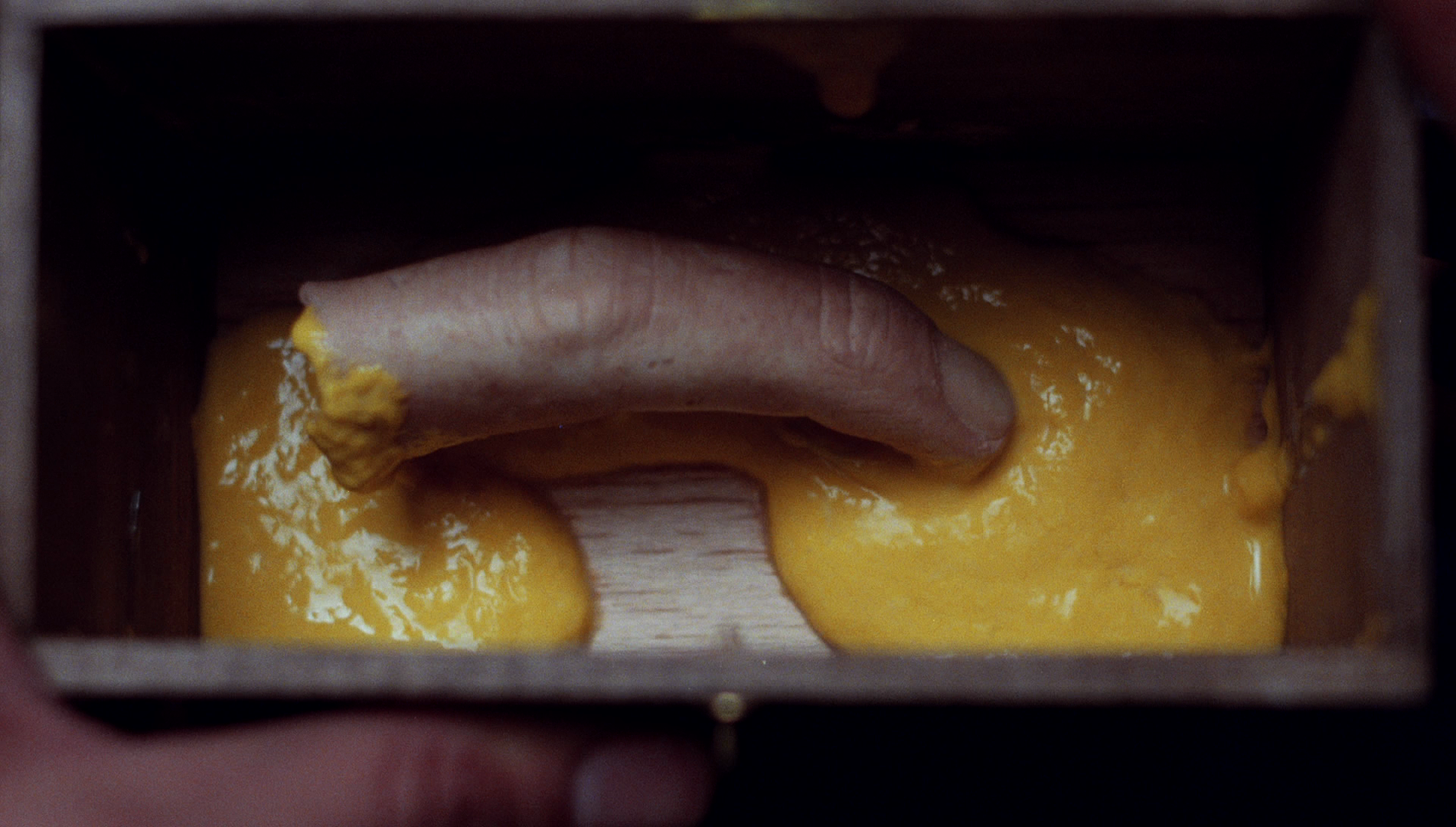 Michael shows the still-wriggling severed finger to Jody. ‘All right, I believe you’, Jody tells his brother. The severed finger transforms into a bizarre creature which attacks Michael and Reggie, who has arrived at the brothers’ house. Jody decides to investigate the mausoleum, leaving Michael behind. Whilst in the mausoleum, Jody is attacked but escaped, and luckily Michael has disobeyed Jody and driven to the mausoleum. Michael collects Jody, but they are pursued by an apparently driverless hearse. Jody disables the hearse by shooting the engine with his pump-action shotgun. Michael shows the still-wriggling severed finger to Jody. ‘All right, I believe you’, Jody tells his brother. The severed finger transforms into a bizarre creature which attacks Michael and Reggie, who has arrived at the brothers’ house. Jody decides to investigate the mausoleum, leaving Michael behind. Whilst in the mausoleum, Jody is attacked but escaped, and luckily Michael has disobeyed Jody and driven to the mausoleum. Michael collects Jody, but they are pursued by an apparently driverless hearse. Jody disables the hearse by shooting the engine with his pump-action shotgun.
At home, they discover ‘one of those dwarfs’ (as Jody describes it) attached to the car: the dwarf has Tommy’s face. They lock the dwarf in Reggie’s ice cream truck. Michael begins to worry that if Tommy’s corpse has been somehow reanimated and reconfigured as a dwarf, might the same fate have befallen Michael and Jody’s parents? Planning on investigating further but unwilling to place his younger brother in greater danger, Jody leaves Michael with his friends Sally and Susie. However, driving through the town Sally and Susie come across Reggie’s ice cream truck; it’s overturned, and Michael notices that the freezer compartment in which they trapped the dwarf has been opened. Dwarfs attack the car; Michael escapes, but Sally and Susie don’t. Michael runs home and tells Jody what has happened. Jody locks Michael in his room and travels to the mausoleum, but Michael is captured by the Tall Man. Separated, Michael and Jody find themselves in the mausoleum. Michael is attacked by one of the spheres, but Jody blasts it with the shotgun. They also encounter Reggie, who has ‘been hiding in a casket, playing like a stiff’. The trio explore the building, discovering a room filled with barrels containing dwarfs and two metal posts that emit a humming sound. The posts, it seems, are a gateway into another dimension. Michael falls through this portal but is rescued by Jody. Realising that the metal posts that act as the gateway are vibrating (the reason for the humming sound), Reggie deduces that they operate much like the tuning fork he uses to tune his guitar. He places his palms on the posts, stopping them from vibrating; this causes the gateway to close, creating a vacuum in the room which sucks the barrels through the gateway before it closes. Michael, Reggie and Jody are left to combat the Tall Man, Jody promising to ‘run that tall bastard all the way down to Hell’. 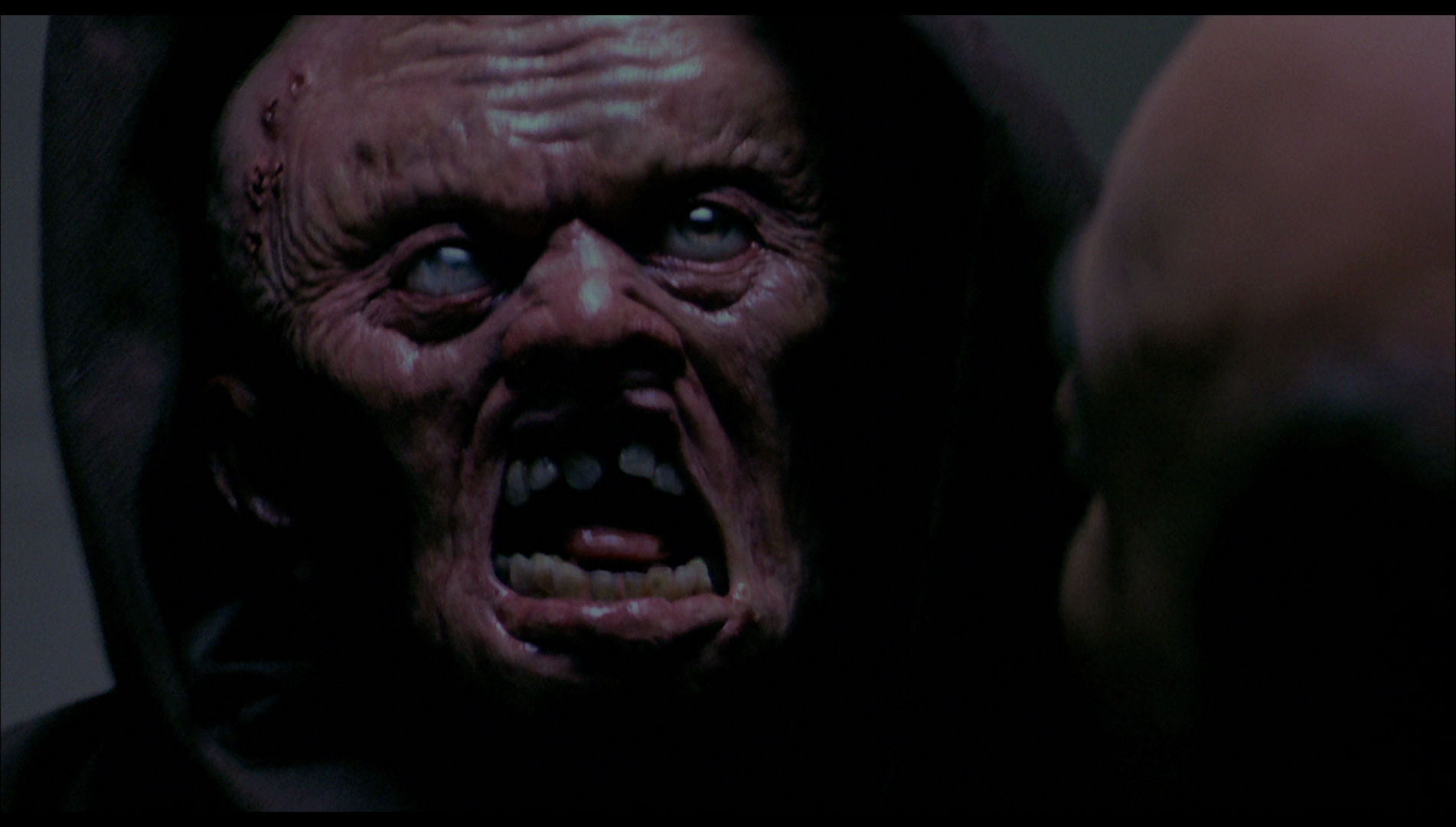 Phantasm II (Coscarelli, 1988) opens with a young woman, Liz (Paula Irvine), who has a psychic connection with Michael (played in this film by another actor, James LeGros). Michael and Liz have never met, but they have connected in their dreams and Liz shares Michael’s visions of the devastation caused by the Tall Man. Liz’s elderly grandfather is on his death bed, and fearing the arrival of the Tall Man to claim her grandfather’s body, Liz telepathically begs Michael to help her. Hearing Liz’s plea, Michael convinces the psychiatrist in the mental hospital in which Michael has been placed (following his unsubstantiated claims about the events that took place in the first film) to allow Michael to be released. Phantasm II (Coscarelli, 1988) opens with a young woman, Liz (Paula Irvine), who has a psychic connection with Michael (played in this film by another actor, James LeGros). Michael and Liz have never met, but they have connected in their dreams and Liz shares Michael’s visions of the devastation caused by the Tall Man. Liz’s elderly grandfather is on his death bed, and fearing the arrival of the Tall Man to claim her grandfather’s body, Liz telepathically begs Michael to help her. Hearing Liz’s plea, Michael convinces the psychiatrist in the mental hospital in which Michael has been placed (following his unsubstantiated claims about the events that took place in the first film) to allow Michael to be released.
Aside from Michael, nobody remembers the events at Morningside Cemetery – not even Reggie, who is living under the illusion implanted by the Tall Man and believes that Jody was killed in a car wreck. However, when Michael experiences a psychic vision of Reggie’s house exploding, killing Reggie’s Aunt Martha and Celeste, he warns Reggie; Michael and Reggie race to Reggie’s home, just in time to see the Michael’s vision become true. Now convinced Michael’s stories may be true, Reggie vows to join Michael in his quest to aid Liz and confront the Tall Man. Reggie and Michael hit the road, gathering a variety of impromptu weapons along the way. Travelling through various small towns, they see a trail of destruction left by the Tall Man: ‘It wasn’t hard to pick up on his trail. Places he’d been in always looked the same’, Reggie says via voiceover narration. After an encounter with a bizarre creature at a deserted mortuary, Michael receives a vision of the Tall Man which leads the pair to a town called Perigord; this is the town in which Liz lives. Her grandfather having died, Liz attends the funeral. Afterwards, the priest, who is tired of the Tall Man’s desecration of the bodies of the dead, plunges a dagger into the heart of Liz’s grandfather – thus preventing him from being resurrected as one of the Tall Man’s slaves. However, the Tall Man witnesses this and pursues the priest. Looking for her grandmother, Liz ventures into the mausoleum where she sees the priest being killed by one of the Tall Man’s spheres. Liz is captured by the Tall Man. 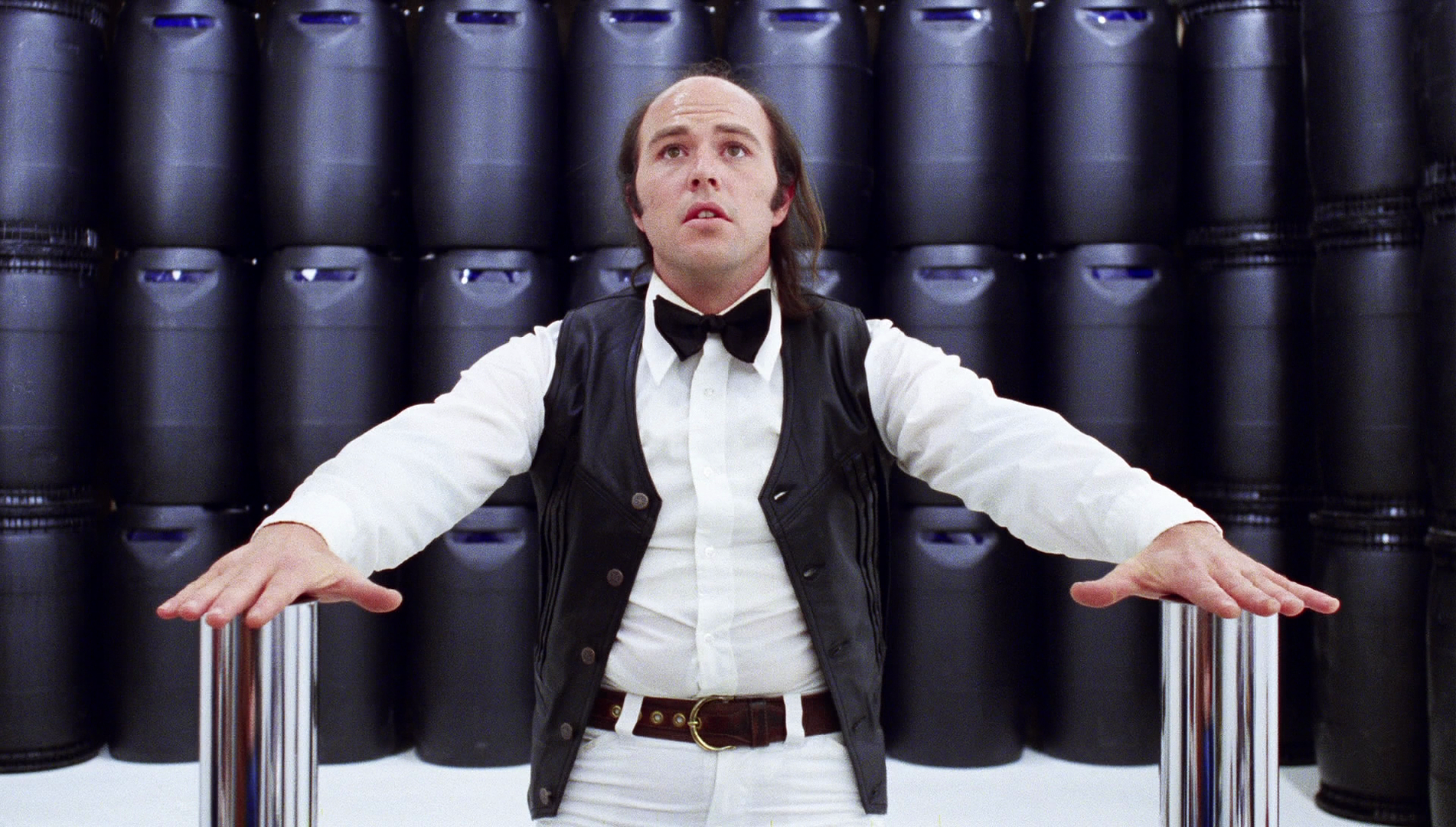 Reggie and Michael head towards Perigord, picking up a hitchhiker named Alchemy (Samantha Phillips) along the way. Together, this curious group of misfits race towards a confrontation with the Tall Man, hoping to rescue the captured Liz. Reggie and Michael head towards Perigord, picking up a hitchhiker named Alchemy (Samantha Phillips) along the way. Together, this curious group of misfits race towards a confrontation with the Tall Man, hoping to rescue the captured Liz.
Opening exactly where the second film closes, Phantasm III: Lord of the Dead (Coscarelli, 1993) sees Michael (A Michael Baldwin, returning to the role) having a near-death experience in a hospital. He heads towards ‘the light’, but sees the Tall Man blocking his path (and booming his iconic catchphrase, ‘Boy!’). Michael comes to and is attacked by a zombified nurse. He’s saved by Reggie; a sphere extracts itself from the nurse’s skull and flies out of the window. Michael and Reggie leave together. On the road, they encounter Jody, who greets them before morphing into a sphere. Communicating with Michael via telepathy, sphere-Jody warns Michael that ‘I can’t stop him [the Tall Man] but maybe I can slow him down’. Camping at a deserted motel, Jody and Reggie are attacked by the Tall Man; Reggie passes out but sees Jody being led by the Tall Man into the alternate dimension. When Reggie comes to, he finds himself in the company of sphere-Jody. The two head to Holtsville, which is now a ghost town. Reggie runs into a gang of looters – Henry (John Davis Chandler), Edna (Cindy Ambuehl) and Rufus (Brooks Gardner) – who trap Reggie in the trunk of his 1971 Plymouth Barracuda. The looters break into a house but find themselves wandering into a trap; the young boy, Tim (Kevin Connors), who lives there alone since his parents were taken by the Tall Man, has booby-trapped the house. Edna is killed by an axe; Rufus is dispatched by a Frisbee with razor blades fixed to it, which when thrown by Tim slits Rufus’ throat; and Henry is trapped in a pit outside the house. Tim frees Reggie; the pair strike up a friendship.  Reggie and Tim decide to travel together. Reggie drops Tim off at an orphanage, but unbeknownst to Reggie, Tim sneaks into the trunk of Reggie’s car. Stopping at an abandoned mausoleum, Reggie is accosted by two women, Tanesha (Sarah Scott Davis) and tough ex-soldier Rocky (Gloria Lynne Henry). All three are attacked by a sphere; Tanesha is killed but Rocky and Reggie are saved by Tim, who blasts the sphere with his father’s revolver. Teaming up, Rocky and Reggie hit the road with Tim, heading towards the largest Gothic mausoleum in Western America, reasoning that the Tall Man will be there. Reggie and Tim decide to travel together. Reggie drops Tim off at an orphanage, but unbeknownst to Reggie, Tim sneaks into the trunk of Reggie’s car. Stopping at an abandoned mausoleum, Reggie is accosted by two women, Tanesha (Sarah Scott Davis) and tough ex-soldier Rocky (Gloria Lynne Henry). All three are attacked by a sphere; Tanesha is killed but Rocky and Reggie are saved by Tim, who blasts the sphere with his father’s revolver. Teaming up, Rocky and Reggie hit the road with Tim, heading towards the largest Gothic mausoleum in Western America, reasoning that the Tall Man will be there.
Jody enters Reggie’s dream (in which Reggie is rather graphically fucking Rocky) and transports Reggie to a place where the Tall Man has Michael held captive. Reggie frees Michael and they transport through the portal, Reggie shutting the portal down before the Tall Man can follow them. Reggie, Rocky, Michael and Tim are attacked by Henry, Edna and Rufus – who have returned as reanimated corpses; however, Reggie’s group manage to escape, destroying the zombies that pursue them. They continue on to the mausoleum, where they discover a cryonics lab. However, they are followed by the Tall Man, who has revealed a major weakness – the cold. Phantasm IV: Oblivion (Coscarelli, 1998) opens with the Tall Man warning Reggie that ‘the final game now begins’. Asked by Jody to help save Michael, who has fled into the desert in a stolen hearse, Reggie follows his friend. 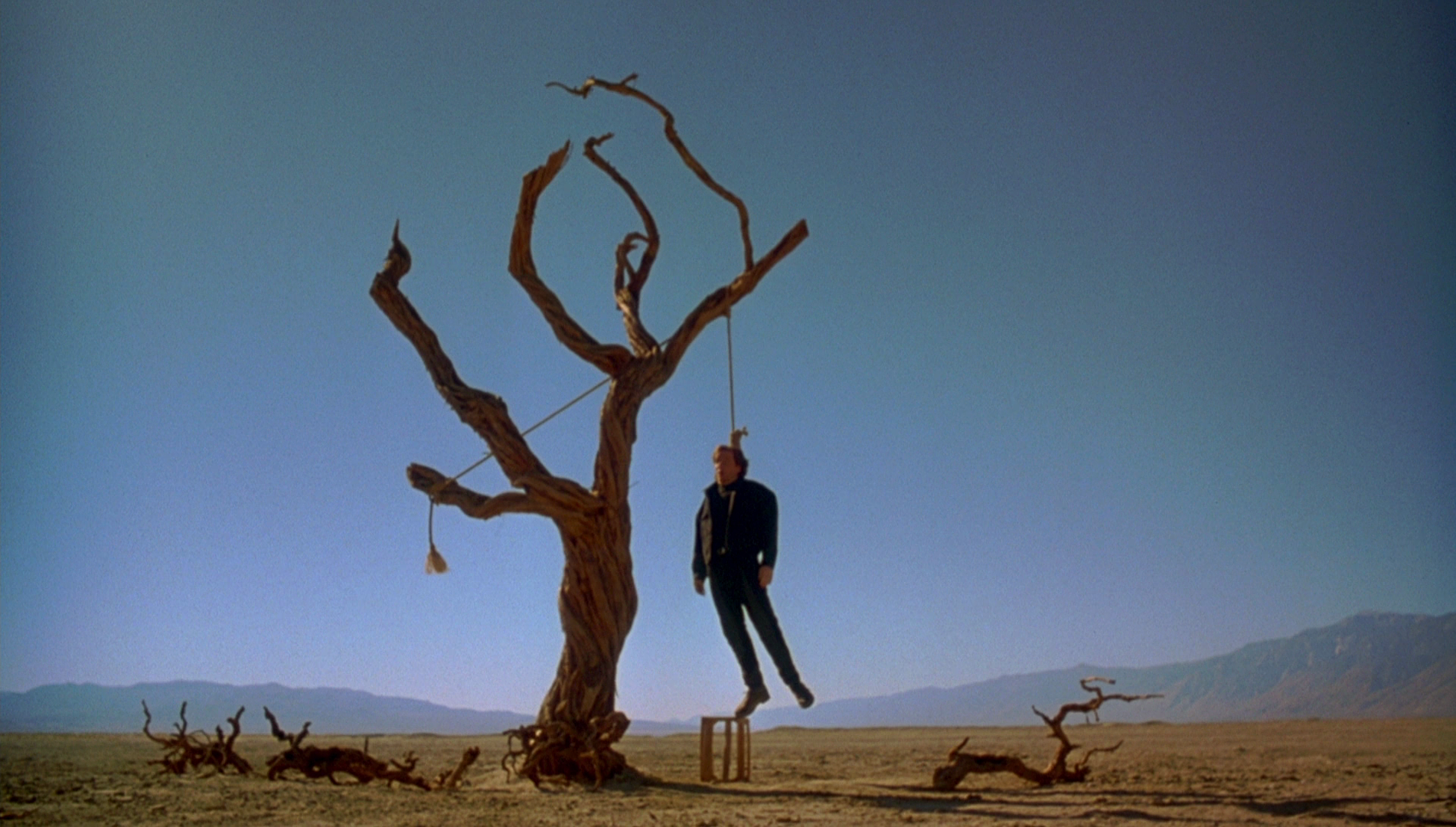 The Tall Man has a plan for Michael, suggesting that Michael has ‘no-one but me’ and is on a path to ‘evolution’. In the desert, Michael experiences a flashback to the Civil War, where he sees the Tall Man working as a field surgeon and claiming victims there. In the present, Michael tries to hang himself from a Joshua Tree in the desert, hoping that this will trap and end the Tall Man; but he’s unsuccessful. Following this, Michael travels through a portal that he finds in the desert and finds himself in the 19th Century, in the home of Jebediah Morningside (Angus Scrimm). Michael witnesses Jebediah creating the portals which open the doorway to alternate dimensions, and after stepping through the portal Jebediah returns a different man, his body now the host of the Tall Man. Michael becomes convinced that even though the Tall man ‘can’t be killed […] could he be stopped from ever existing’. The Tall Man has a plan for Michael, suggesting that Michael has ‘no-one but me’ and is on a path to ‘evolution’. In the desert, Michael experiences a flashback to the Civil War, where he sees the Tall Man working as a field surgeon and claiming victims there. In the present, Michael tries to hang himself from a Joshua Tree in the desert, hoping that this will trap and end the Tall Man; but he’s unsuccessful. Following this, Michael travels through a portal that he finds in the desert and finds himself in the 19th Century, in the home of Jebediah Morningside (Angus Scrimm). Michael witnesses Jebediah creating the portals which open the doorway to alternate dimensions, and after stepping through the portal Jebediah returns a different man, his body now the host of the Tall Man. Michael becomes convinced that even though the Tall man ‘can’t be killed […] could he be stopped from ever existing’.
The film intercuts Michael’s story with Reggie’s search for his friend. Along the way, Reggie picks up a hitchhiker, Jennifer (Heidi Marnhout), who in the night shows herself to be possessed by the Tall Man. Reggie kills Jennifer with a sledgehammer. Finally, Reggie comes across Michael and Jody in the desert. Michael warns Reggie not to trust Jody. Michael and Jody step through the portal, visiting the past and witnessing Jebediah’s transformation into the Tall Man. They travel through the portal again and find themselves in Morningside Cemetery, where Jody attacks Michael. However, already suspecting Jody of being in collusion with the Tall Man, Michael is prepared and defends himself successfully. Michael awakens in a mausoleum; he is being held captive by the Tall Man, who uses one of his spheres to cut into Michael’s skull. However, Michael saves himself by activating Reggie’s tuning fork – which Reggie slipped into Michael’s pocket earlier. The vibrations cause the Tall Man to spasm, the sphere slicing through the throat of Jody (who is standing next to the Tall Man). Michael is reunited with Reggie, but the Tall Man is close behind and determined to access whatever is buried in Michael’s skull. 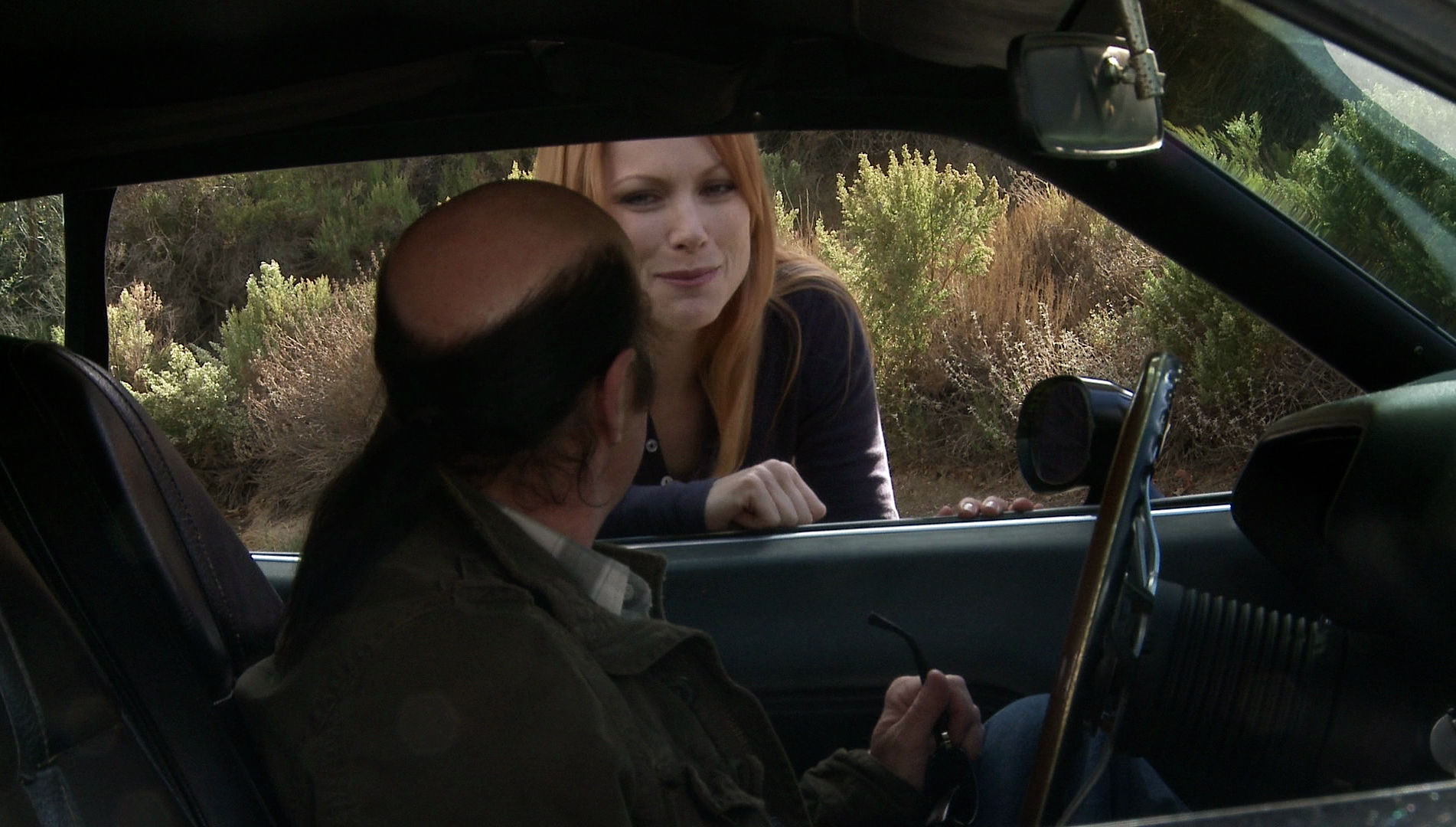 At the start of Phantasm V: Ravager (David Hartman, 2016), Reggie wanders out of the desert in search of his Plymouth Barracuda, which has been stolen. Reggie wanders the desert, exploring an abandoned house before spotting his stolen car. The car stops; the driver offers Reggie a ride – for a price. Reggie accepts before pulling a gun on the driver and retrieving his beloved ‘Cuda. Reggie is attacked by two spheres and successfully outmaneuvres them. At the start of Phantasm V: Ravager (David Hartman, 2016), Reggie wanders out of the desert in search of his Plymouth Barracuda, which has been stolen. Reggie wanders the desert, exploring an abandoned house before spotting his stolen car. The car stops; the driver offers Reggie a ride – for a price. Reggie accepts before pulling a gun on the driver and retrieving his beloved ‘Cuda. Reggie is attacked by two spheres and successfully outmaneuvres them.
Reggie suddenly finds himself in a care home, where he is visited by Mike. Reggie is in a wheelchair, and Mike tells Reggie that he (Reggie) is suffering from early onset dementia. However, Mike humours Reggie by offering to listen to Reggie’s outlandish story one more time. Driving his car through the desert, Reggie picks up a hitchhiker, Dawn (Dawn Cody). He takes Dawn to her farmhouse, and she offers Reggie a place to stay for the night. After a nightmare in which he finds himself in a hospital bed next to Jebediah Morningside, Reggie awakens to witness Dawn being killed by one of the spheres. He flees to a barn, hiding there with Dawn’s farmhand Demeter (Daniel Roebuck). The spheres get into the barn and kill Demeter. 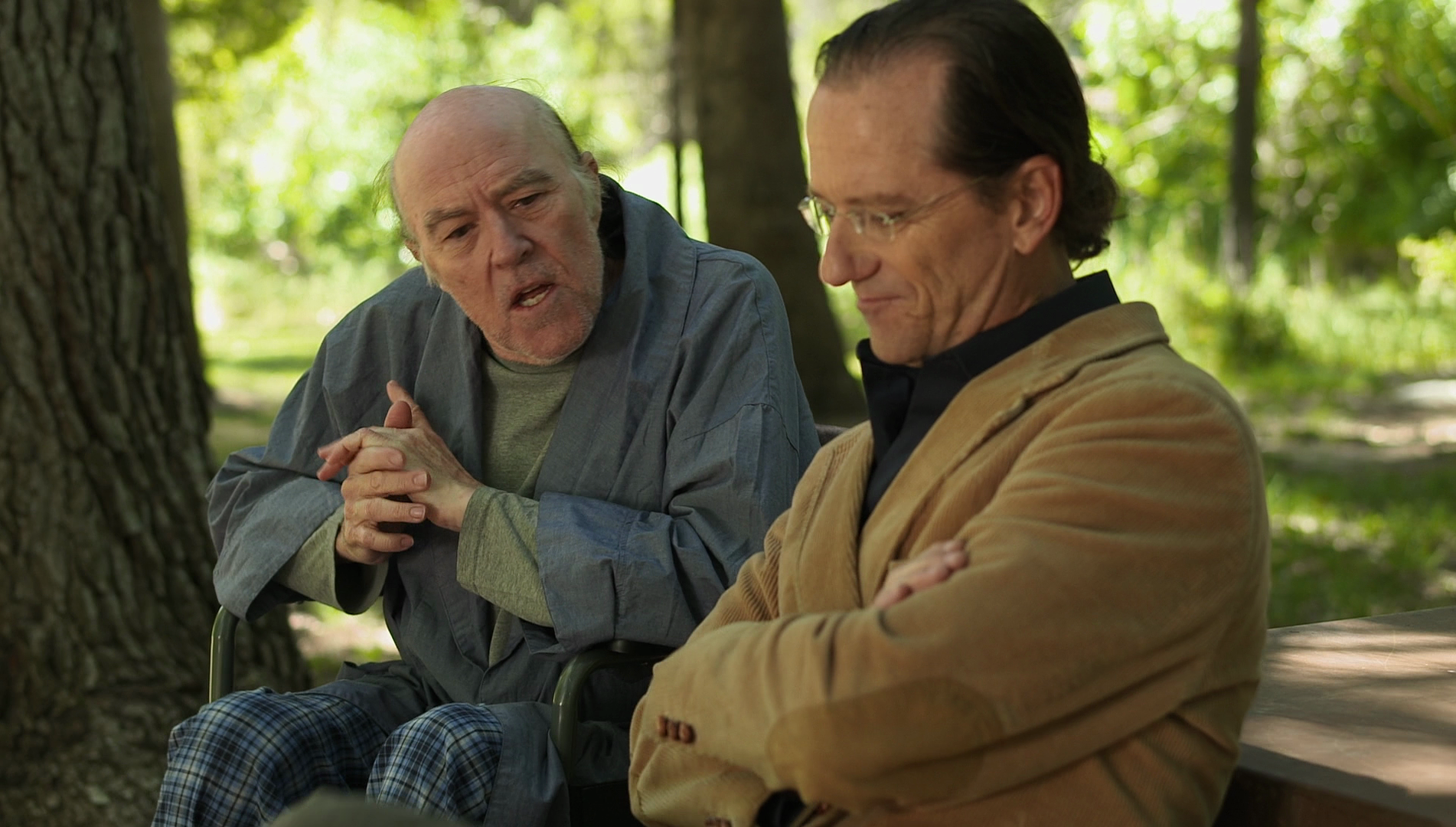 Reggie opens his eyes: he’s in conversation with Mike at the care home. Passing through the portal, Reggie finds himself in a room with the Tall Man, who tells Reggie that he will return Reggie’s family to him if he will ‘stay out of my way. Let the plan complete itself’. However, Reggie refuses. The Tall Man places Reggie in a ‘trap’; Reggie comes to in a room with Jane (Dawn Cody) and Chunk (Stephen Jutras). They free him. Reggie is disoriented; he also encounters Mike, who tells Reggie that Reggie has been missing for a decade. Mike shows Reggie the scene outside the building: the sky is bathed in red, giant spheres hovering over the city, firing lasers which cut through buildings. Reggie then finds himself in the care home once more and must discover a way of assessing which ‘reality’ is the true one: is he really suffering from early onset dementia, or is this all a trick on the part of the Tall Man. Reggie opens his eyes: he’s in conversation with Mike at the care home. Passing through the portal, Reggie finds himself in a room with the Tall Man, who tells Reggie that he will return Reggie’s family to him if he will ‘stay out of my way. Let the plan complete itself’. However, Reggie refuses. The Tall Man places Reggie in a ‘trap’; Reggie comes to in a room with Jane (Dawn Cody) and Chunk (Stephen Jutras). They free him. Reggie is disoriented; he also encounters Mike, who tells Reggie that Reggie has been missing for a decade. Mike shows Reggie the scene outside the building: the sky is bathed in red, giant spheres hovering over the city, firing lasers which cut through buildings. Reggie then finds himself in the care home once more and must discover a way of assessing which ‘reality’ is the true one: is he really suffering from early onset dementia, or is this all a trick on the part of the Tall Man.
Coscarelli was reputedly inspired to write Phantasm after reading Ray Bradbury’s 1962 novel Something Wicked This Way Comes, and like the Bradbury book Phantasm features at its heart a story of a thirteen year old boy who witnesses the small town in which he lives becoming the victim of an unknowable evil. In Phantasm, Michael is the first to suspect that the Tall Man is at the centre of something strange when he witnesses, through his binoculars, the Tall Man picking up Tommy’s coffin single-handedly. Michael is a child marked as ‘needy’ by his older brother Jody, who tells a neighbour that Michael is ‘thirteen now. I’m thinking of sending him off to live with his aunt [….] As it is, he follows me everywhere. It’s like he knows I’m gonna leave him’. Of course, as the narrative progresses, Jody does indeed ‘leave’ Michael, when he (Jody) is killed by the Tall Man and his minions; throughout the sequels, Michael’s relationship with his ‘lost’ brother (who the second film reveals has been converted by the Tall Man into one of the sentinels/spheres, and who in the fourth film is framed as a traitor in league with the Tall Man) becomes increasingly important. 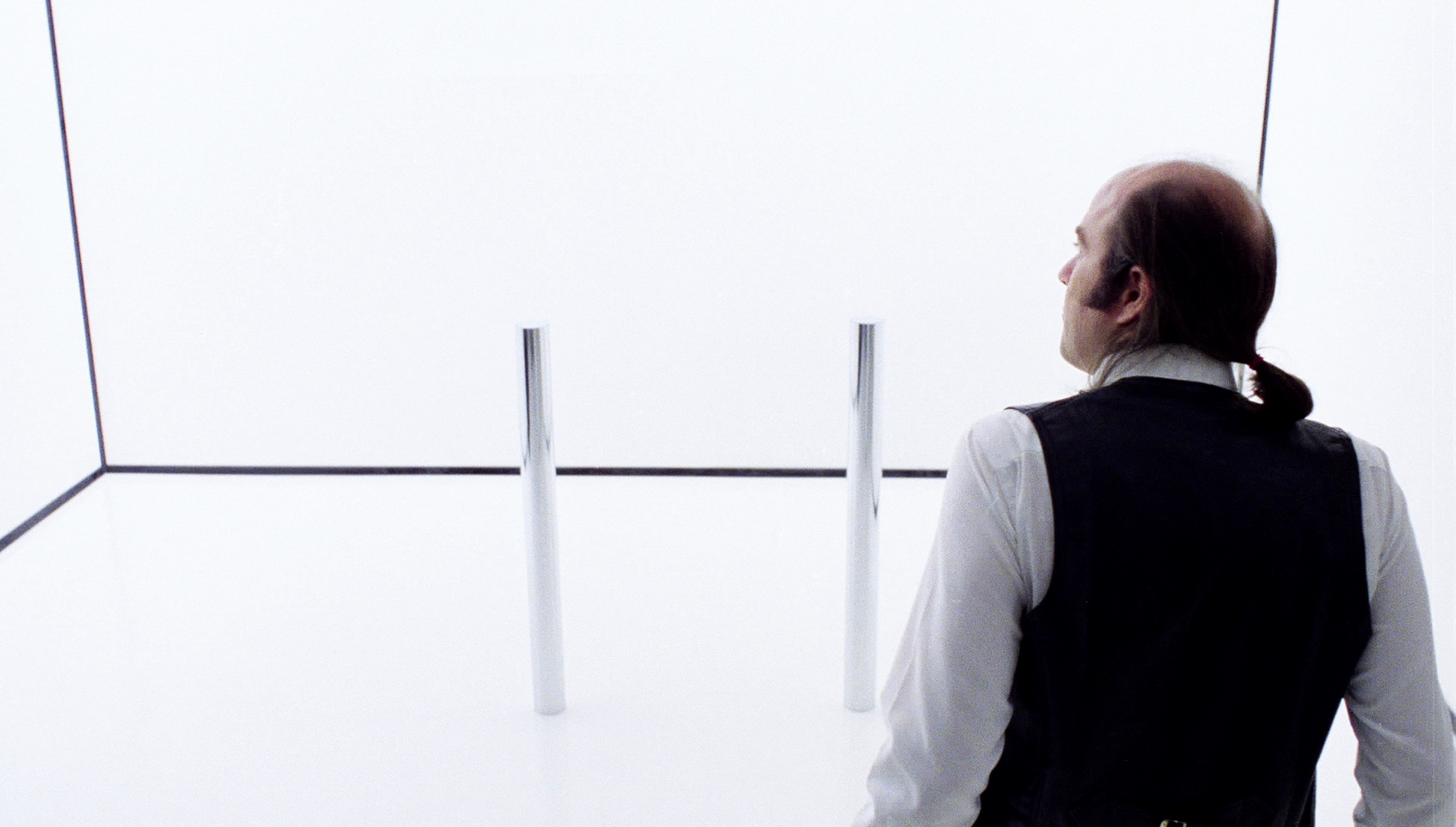 The films’ suggestion that reality can be manipulated and may be a product of internal states is established early in Phantasm, when Michael visits an elderly fortune teller (Mary Ellen Shaw); blind and mute, the fortune teller speaks via her granddaughter (Terrie Kalbus). The fortune teller, or rather her grandchild, tells Michael to place his hand in a black box. Michael does as he is told – reluctantly. However, something in the box seems to grab hold of Michael’s hand, refusing to release him. Michael begins to panic, but he’s told not to fear. Michael manages to calm his nerves and finds that when he has overcome his fear, his hand is miraculously released. ‘It was simply a reflection’, the fortune teller’s granddaughter says, ‘Fear is the killer. That’s what grandmother wants you to learn’. ‘Boy, that really hurt’, Mike says. ‘It was all in your mind’, the young woman tells him. Not long afterwards, Michael is lying in his bed before the Tall Man slowly appears above him (in an image which perhaps inspired the famous shot of Freddie Krueger appearing above Nancy’s bed in Wes Craven’s 1984 picture A Nightmare on Elm Street), and then the Tall Man’s dwarf minions appear and grab Michael; but following this, the film cuts to another scene, suggesting that what Michael has experienced is simply a dream or nightmare. Throughout this film and its sequels, such sequences – in which the audience’s (and the characters’) perception of events is continually undermined – become commonplace. At the start of the second film, Reggie has no recollection of the events that took place in the first picture, his memories having been erased by the Tall Man and replaced with an alternate perception of events (that Jody was killed in a car crash, with the resultant mental pressure necessitating Michael concocting the story of the Tall Man and being incarcerated in a mental hospital). Characters are threatened with institutionalisation for sticking to their stories: as Phantasm II opens, Michael is held in a mental hospital; in Phantasm V, Reggie finds himself in a care home after being diagnosed with dementia. The films’ suggestion that reality can be manipulated and may be a product of internal states is established early in Phantasm, when Michael visits an elderly fortune teller (Mary Ellen Shaw); blind and mute, the fortune teller speaks via her granddaughter (Terrie Kalbus). The fortune teller, or rather her grandchild, tells Michael to place his hand in a black box. Michael does as he is told – reluctantly. However, something in the box seems to grab hold of Michael’s hand, refusing to release him. Michael begins to panic, but he’s told not to fear. Michael manages to calm his nerves and finds that when he has overcome his fear, his hand is miraculously released. ‘It was simply a reflection’, the fortune teller’s granddaughter says, ‘Fear is the killer. That’s what grandmother wants you to learn’. ‘Boy, that really hurt’, Mike says. ‘It was all in your mind’, the young woman tells him. Not long afterwards, Michael is lying in his bed before the Tall Man slowly appears above him (in an image which perhaps inspired the famous shot of Freddie Krueger appearing above Nancy’s bed in Wes Craven’s 1984 picture A Nightmare on Elm Street), and then the Tall Man’s dwarf minions appear and grab Michael; but following this, the film cuts to another scene, suggesting that what Michael has experienced is simply a dream or nightmare. Throughout this film and its sequels, such sequences – in which the audience’s (and the characters’) perception of events is continually undermined – become commonplace. At the start of the second film, Reggie has no recollection of the events that took place in the first picture, his memories having been erased by the Tall Man and replaced with an alternate perception of events (that Jody was killed in a car crash, with the resultant mental pressure necessitating Michael concocting the story of the Tall Man and being incarcerated in a mental hospital). Characters are threatened with institutionalisation for sticking to their stories: as Phantasm II opens, Michael is held in a mental hospital; in Phantasm V, Reggie finds himself in a care home after being diagnosed with dementia.
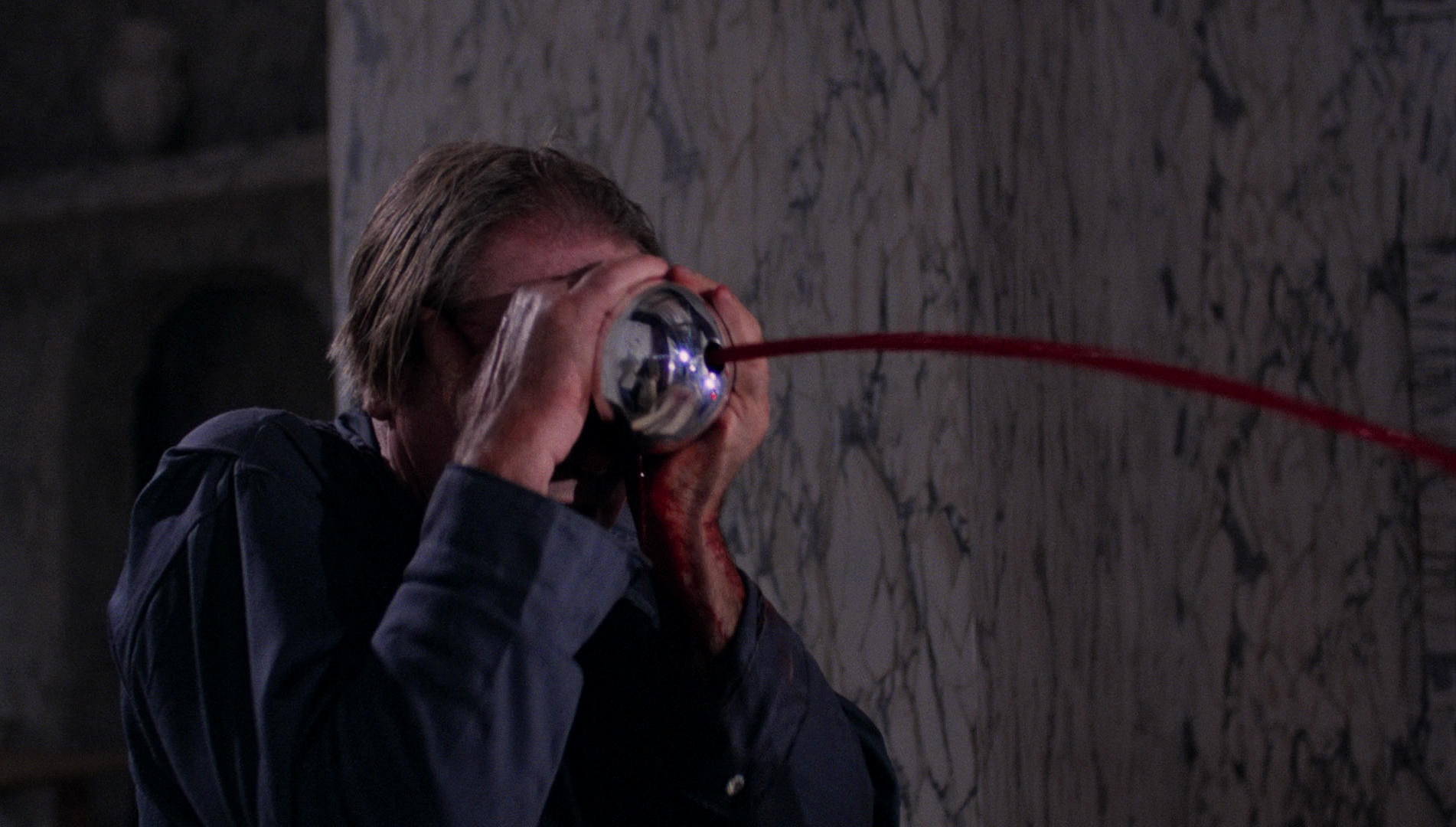 Likewise, several of the films end with sequences that are very similar to one another, which suggest that what has occurred previously in the narrative may simply be a nightmare – offering the protagonists a glimpse of a more stable reality, one which has not been disrupted by the Tall Man – before undercutting this by having one of the characters dragged through a window by the Tall Man’s minions, which appear suddenly and without warning. In the context of many other films, such an ending (the ‘it was all a dream’ trope) might leave the audience feeling cheated, but the Phantasm films carry it off with aplomb – in fact, making this type of resolution one of the key paradigms of the series. Likewise, several of the films end with sequences that are very similar to one another, which suggest that what has occurred previously in the narrative may simply be a nightmare – offering the protagonists a glimpse of a more stable reality, one which has not been disrupted by the Tall Man – before undercutting this by having one of the characters dragged through a window by the Tall Man’s minions, which appear suddenly and without warning. In the context of many other films, such an ending (the ‘it was all a dream’ trope) might leave the audience feeling cheated, but the Phantasm films carry it off with aplomb – in fact, making this type of resolution one of the key paradigms of the series.
Another recurring narrative feature of the films, beginning with the second picture, is an extended opening sequence which recaps the previous entries into the series, with the accompaniment of voiceover narration by one of the characters. Phantasm II begins with narration by Liz, who in her voiceover reflects on her psychic connection with Michael: ‘Eight years ago, my visions began’, Liz says, ‘Terrifying visions of things to come. Through them I found you, Mike, and your friend Reggie [….] I also found him, the Tall Man’. The opening sequence of Phantasm II recaps the events of the first film as if they were Liz’s memories of her visions of Michael. ‘I don’t know where he comes from’, Liz narrates, referring to the Tall Man, ‘Maybe another dimension […] He destroys towns and plunders their graveyards, to make slaves of the dead [….] Mike, we’ve grown up together. I know you’re out there. Soon, my grandfather will die and my visions become real [….] Mike, help me’. 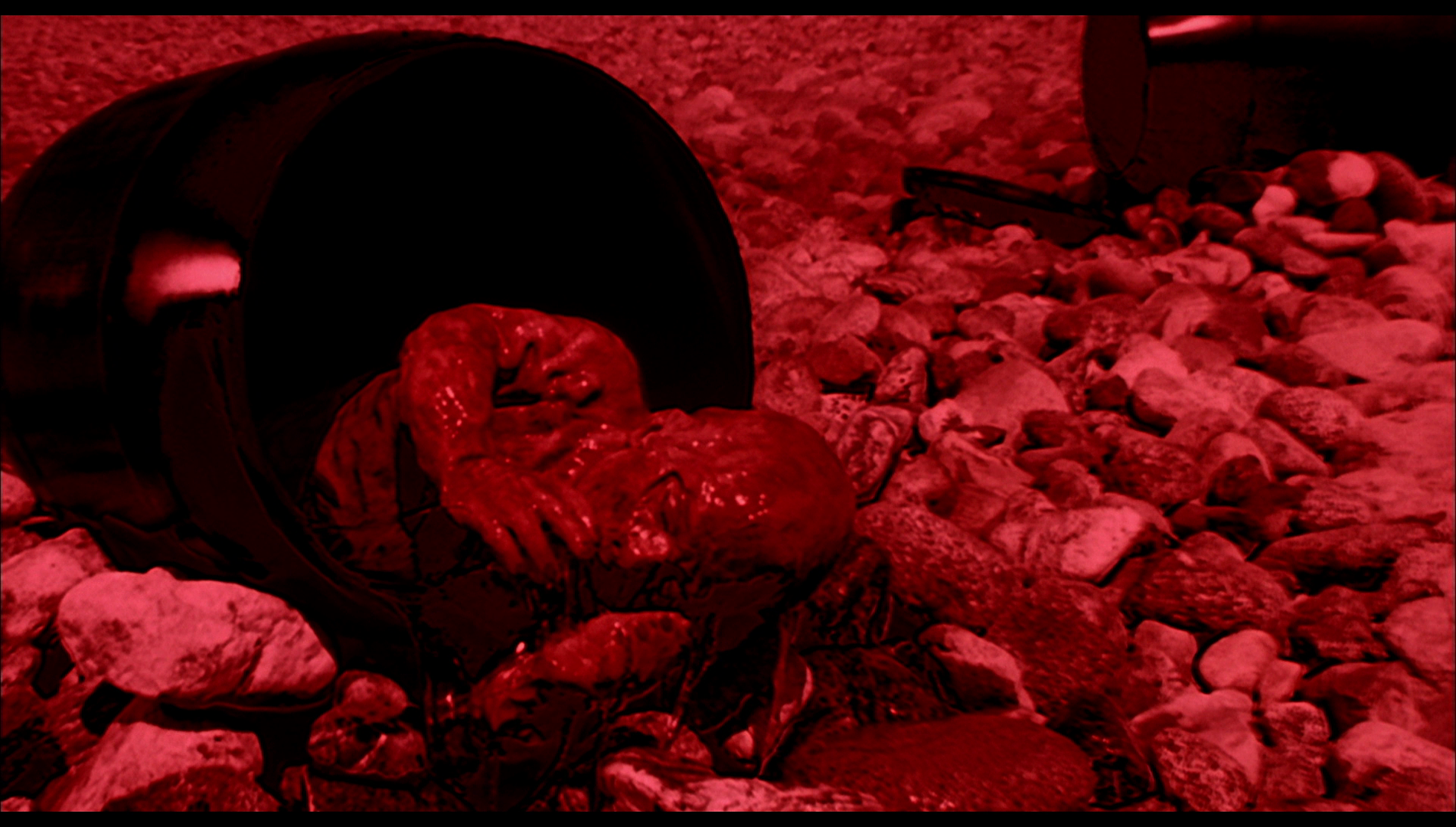 The narratives of Phantasm and its sequels are delirious, often featuring ‘fantasy’ sequences which overlap the main narrative and act as an index of the power of the Tall Man to manipulate his victims’ perception of the world. Characters within the films might even forget the events that have happened; this is the case with Reggie, who between the end of the first film and the beginning of the second picture has forgotten what took place in Phantasm, believing Jody’s death to have been caused by a car accident. Michael is the only character who can remember the events of the first film (aside from Liz, who has a psychic connection with Michael and thus seems to share his memories), but owing to the fact that he has stuck to the outlandish story of the Tall Man being a creature from another dimension who reanimates the dead, at the start of Phantasm II Michael has been incarcerated in a mental hospital. However, when Michael receives Liz’s telepathic cry for help, he manages to convince a psychiatrist that he should be released from the hospital by recanting his story: ‘And remember, it was all in your imagination’, the psychiatrist tells Michael. ‘Like fuck it was’, Michael mutters to himself, very quietly, as he leaves the room. In his narration at the start of Phantasm III, Michael notes over a montage of clips from the first film that ‘Reggie told me it was all a dream, and I was beginning to think maybe he was right’, observing that ‘We must remember to never trust the things that we see, because nothing is ever as it seems’. Later, at the climax of Phantasm III Jody tells the others, ‘Don’t believe everything you see [….] Seeing is easy. Understanding? It takes a little more time’. The narratives of Phantasm and its sequels are delirious, often featuring ‘fantasy’ sequences which overlap the main narrative and act as an index of the power of the Tall Man to manipulate his victims’ perception of the world. Characters within the films might even forget the events that have happened; this is the case with Reggie, who between the end of the first film and the beginning of the second picture has forgotten what took place in Phantasm, believing Jody’s death to have been caused by a car accident. Michael is the only character who can remember the events of the first film (aside from Liz, who has a psychic connection with Michael and thus seems to share his memories), but owing to the fact that he has stuck to the outlandish story of the Tall Man being a creature from another dimension who reanimates the dead, at the start of Phantasm II Michael has been incarcerated in a mental hospital. However, when Michael receives Liz’s telepathic cry for help, he manages to convince a psychiatrist that he should be released from the hospital by recanting his story: ‘And remember, it was all in your imagination’, the psychiatrist tells Michael. ‘Like fuck it was’, Michael mutters to himself, very quietly, as he leaves the room. In his narration at the start of Phantasm III, Michael notes over a montage of clips from the first film that ‘Reggie told me it was all a dream, and I was beginning to think maybe he was right’, observing that ‘We must remember to never trust the things that we see, because nothing is ever as it seems’. Later, at the climax of Phantasm III Jody tells the others, ‘Don’t believe everything you see [….] Seeing is easy. Understanding? It takes a little more time’.
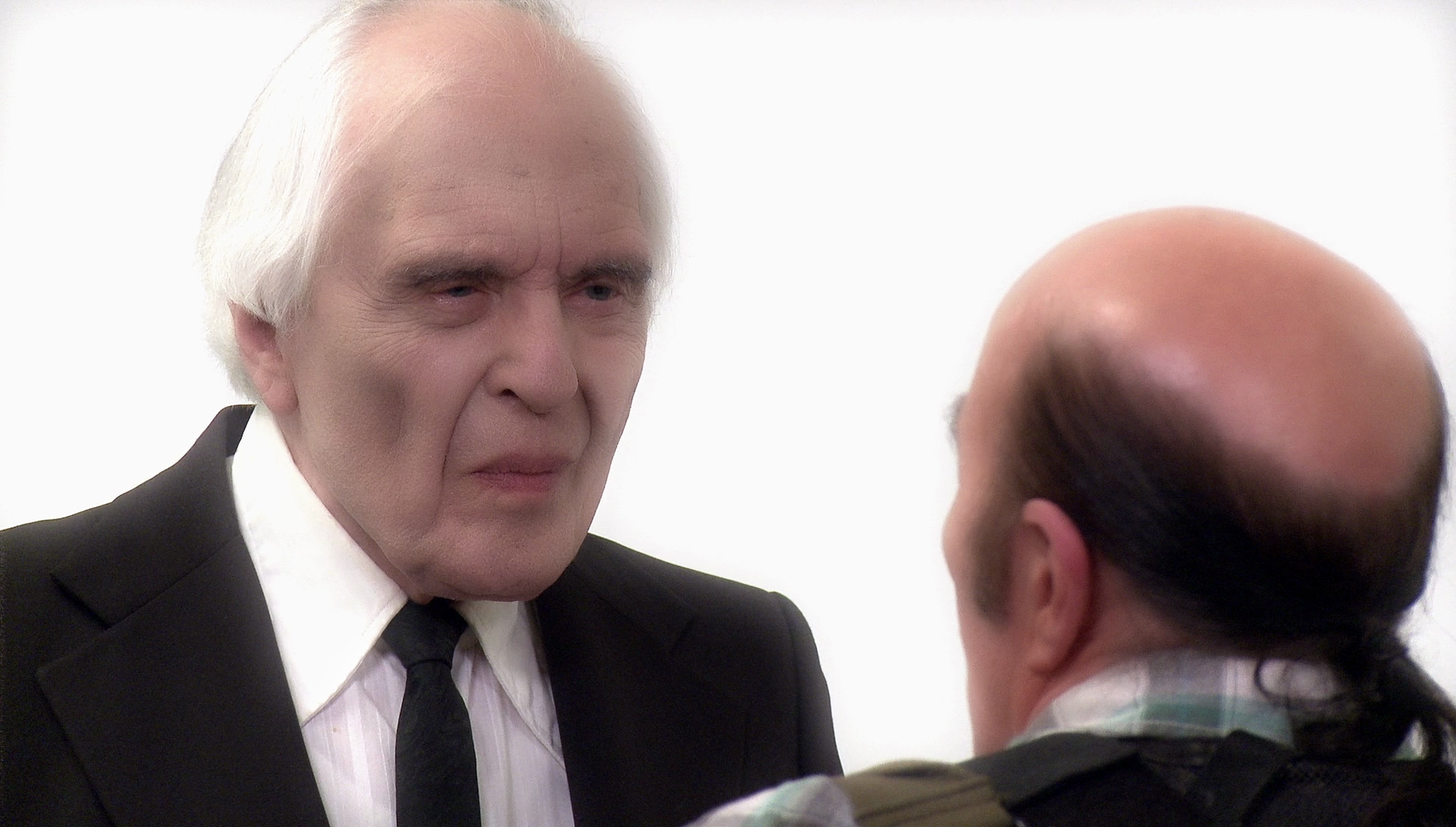 Though made by a different director, Phantasm V narrativises this juxtaposition of alternate dimensions most overtly and, potentially, confusingly. According to Reggie Bannister, Phantasm V was planned before Coscarelli went on to direct Bubba Ho-Tep in 2002; Roger Avery contributed a script to the project (Bannister, in McCarty, Michael, 2005: 81). The film begins as Phantasm IV ends, with Reggie wandering through the desert in search of his stolen Plymouth Barracuda. He asserts in voiceover that ‘It sure feels good to be back home. If this is home. I can’t tell what’s real anymore because of him [the Tall Man]’. However, shortly afterwards Reggie finds himself in a care home, in a wheelchair and visited by Michael, who tells Reggie that he (Reggie) has been diagnosed with dementia and is thus experiencing a confusion of ‘fantasy’ and ‘reality’. ‘They found you wandering in the desert, like Moses’, Michael quips. ‘This is just another one of his tricks’, Reggie warns a patient Mike. ‘The doctor says I’m supposed to keep you engaged, keep your mind active. So tell me the story, from the beginning, again’, Michael tells Reggie. ‘The story’s always the same, Mike’, Reggie responds. Later, after Reggie tells Mike the story of Dawn being killed in her farmhouse, Mike produces a hypothesis: ‘There are some schools of thought […] that suggest the possibility that one can be in two places at once along some kind of shifting time stream, parallel universes’, Mike says. The rest of the film cuts between these realities: in one of them, Reggie discovers he is in a post-apocalyptic landscape ravaged by the Tall Man and giant spheres which float above the cities, ripping them apart with lasers; in the other, Reggie is in a care home where he is visited by Mike and, later, Jody. ‘I think I’m losing it’, Reggie tells Mike after Jane and Chunk have freed Reggie from the Tall Man’s ‘trap’, ‘I don’t know what’s real anymore’. Reggie returns to the care home, telling Mike ‘I can’t get oriented. I’m slipping in and out of time. One minute I’m in the desert [….] Then I’m nuts deep in a war zone, man’. ‘I don’t wanna die here’, Reggie tells Mike in one of the scenes set in the care home, ‘a crazy old man in a bed, my body eventually thrown in a box’. In the series’ most poignant scene, Reggie seems to die a peaceful death in his bed in the care home, Mike and Jody by his bedside; but this again is undercut when we return to the post-apocalyptic landscape and find Reggie still alive and well. Though made by a different director, Phantasm V narrativises this juxtaposition of alternate dimensions most overtly and, potentially, confusingly. According to Reggie Bannister, Phantasm V was planned before Coscarelli went on to direct Bubba Ho-Tep in 2002; Roger Avery contributed a script to the project (Bannister, in McCarty, Michael, 2005: 81). The film begins as Phantasm IV ends, with Reggie wandering through the desert in search of his stolen Plymouth Barracuda. He asserts in voiceover that ‘It sure feels good to be back home. If this is home. I can’t tell what’s real anymore because of him [the Tall Man]’. However, shortly afterwards Reggie finds himself in a care home, in a wheelchair and visited by Michael, who tells Reggie that he (Reggie) has been diagnosed with dementia and is thus experiencing a confusion of ‘fantasy’ and ‘reality’. ‘They found you wandering in the desert, like Moses’, Michael quips. ‘This is just another one of his tricks’, Reggie warns a patient Mike. ‘The doctor says I’m supposed to keep you engaged, keep your mind active. So tell me the story, from the beginning, again’, Michael tells Reggie. ‘The story’s always the same, Mike’, Reggie responds. Later, after Reggie tells Mike the story of Dawn being killed in her farmhouse, Mike produces a hypothesis: ‘There are some schools of thought […] that suggest the possibility that one can be in two places at once along some kind of shifting time stream, parallel universes’, Mike says. The rest of the film cuts between these realities: in one of them, Reggie discovers he is in a post-apocalyptic landscape ravaged by the Tall Man and giant spheres which float above the cities, ripping them apart with lasers; in the other, Reggie is in a care home where he is visited by Mike and, later, Jody. ‘I think I’m losing it’, Reggie tells Mike after Jane and Chunk have freed Reggie from the Tall Man’s ‘trap’, ‘I don’t know what’s real anymore’. Reggie returns to the care home, telling Mike ‘I can’t get oriented. I’m slipping in and out of time. One minute I’m in the desert [….] Then I’m nuts deep in a war zone, man’. ‘I don’t wanna die here’, Reggie tells Mike in one of the scenes set in the care home, ‘a crazy old man in a bed, my body eventually thrown in a box’. In the series’ most poignant scene, Reggie seems to die a peaceful death in his bed in the care home, Mike and Jody by his bedside; but this again is undercut when we return to the post-apocalyptic landscape and find Reggie still alive and well.
 This sense of overlapping and contradicting realities (or perceptions of reality) can lead the films to becoming somewhat confusing; Phantasm IV: Oblivion, in particular, features many narrative diversions and sequences which journey into the past (using scenes filmed for but deleted from the first film), fantasy and reality bleeding together. With this film, Coscarelli said that he felt the series had ‘kind of hit the end of the road’ and he ‘wanted to answer a few more questions. The movies are notorious for being pretty mysterious so I decided to try to round things up a little more’ (Coscarelli, quoted in Baldassare, 1999: 50). This narrative structure is continued in Phantasm V: Ravager, which for its first half hour or so juxtaposes the two narratives involving Reggie – the first showing his battle with the Tall Man and his spheres, in the desert and later at Dawn’s farmhouse; and the second depicting Reggie in a wheelchair, Mike telling him that he’s suffering from early onset dementia but humouring Reggie by listening, once again, to Reggie’s ‘outlandish’ story. The effect can be confusing for a casual viewer, Kim Newman once suggesting in reference to the first film that ‘[t]he plot makes even less sense in the film, which is a minefield of false turns, silly ideas and illogical scare scenes’ (Newman, op cit.: 278). This sense of overlapping and contradicting realities (or perceptions of reality) can lead the films to becoming somewhat confusing; Phantasm IV: Oblivion, in particular, features many narrative diversions and sequences which journey into the past (using scenes filmed for but deleted from the first film), fantasy and reality bleeding together. With this film, Coscarelli said that he felt the series had ‘kind of hit the end of the road’ and he ‘wanted to answer a few more questions. The movies are notorious for being pretty mysterious so I decided to try to round things up a little more’ (Coscarelli, quoted in Baldassare, 1999: 50). This narrative structure is continued in Phantasm V: Ravager, which for its first half hour or so juxtaposes the two narratives involving Reggie – the first showing his battle with the Tall Man and his spheres, in the desert and later at Dawn’s farmhouse; and the second depicting Reggie in a wheelchair, Mike telling him that he’s suffering from early onset dementia but humouring Reggie by listening, once again, to Reggie’s ‘outlandish’ story. The effect can be confusing for a casual viewer, Kim Newman once suggesting in reference to the first film that ‘[t]he plot makes even less sense in the film, which is a minefield of false turns, silly ideas and illogical scare scenes’ (Newman, op cit.: 278).
From Phantasm II onwards, Reggie increasingly becomes the focus of the films’ narratives; he’s an unlikely hero – as Mike observes in the second film, ‘I’m a nineteen year old kid; you’re a bald, middle-aged ex-ice cream vendor’. Reggie isn’t the protagonist of the first film; he’s more of a background character in that picture, though one of the best and most unexpected scenes of the first Phantasm involves Reggie and Jody jamming on Jody’s front porch. It’s a scene filled with warmth and good humour, the actors’ enjoyment of playing music together seeming utterly genuine. Towards the end of Phantasm IV, we are presented with a scene featuring Reggie dressing in his ice cream seller attire before confronting the Tall Man at the climax of the picture; within the series, Reggie’s white shirt and trousers, black waistcoat and bow tie – and, of course, his 1971 Plymouth Barracuda (the series’ equivalent of Ash’s Oldsmobile in the Evil Dead films) – become almost as iconic as the Tall Man’s spheres. By the time we get to Phantasm IV, Reggie’s opening narration asserts that ‘My name is Reggie. I was an ice cream vendor by trade. Now, I’m a soldier; a soldier in a war against his army of the living dead’. 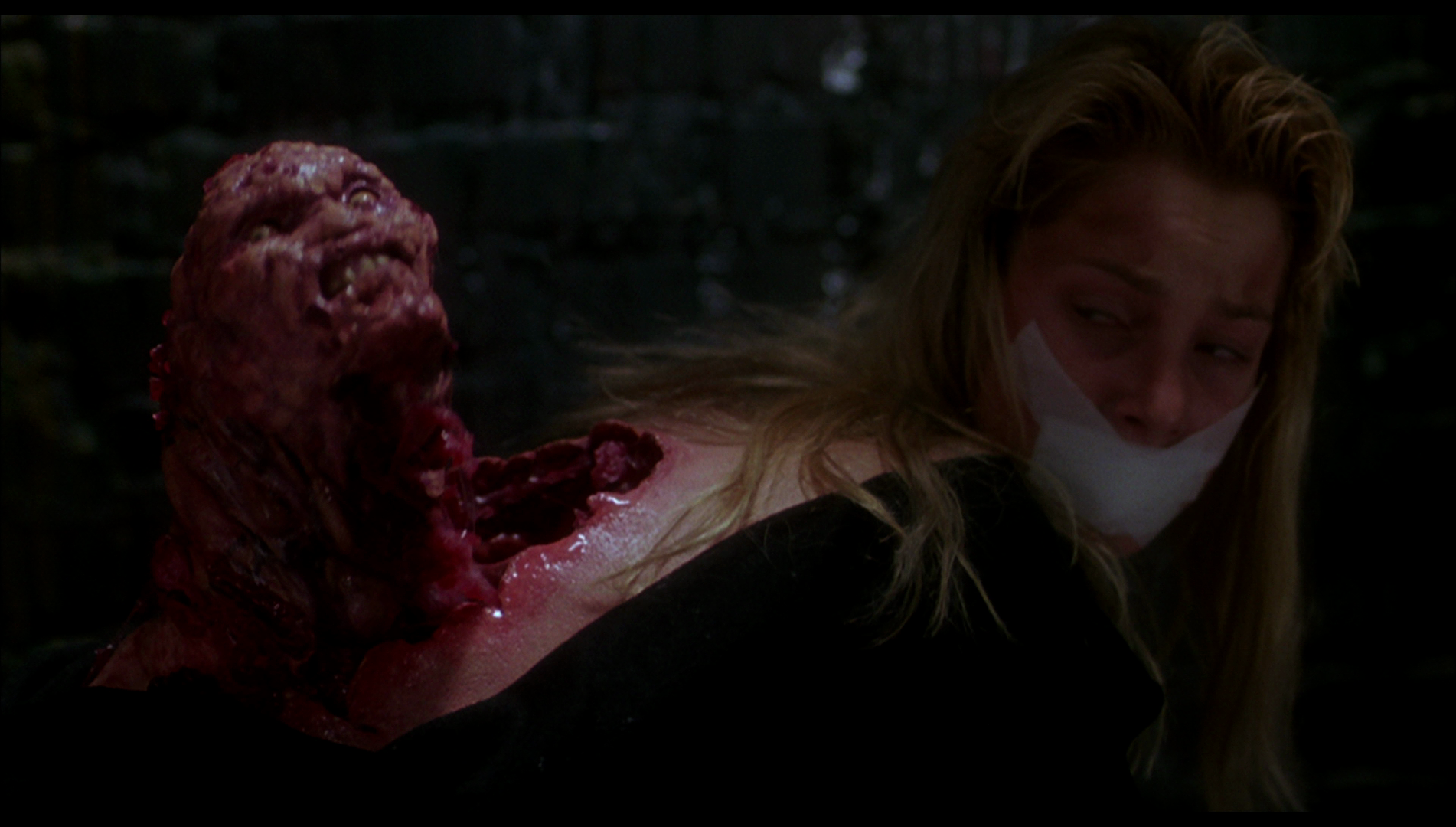 As the series of films progresses, the effects become more elaborate, and with each successive film there is a noticeable emphasis on capturing exploding vehicles (especially long shots of exploding vehicles offset by key actors, usually Angus Scrimm, in the foreground). Coscarelli has asserted that the first film ‘was done with a spirit of a student with student-type resources’, hence Coscarelli filling the roles of cameraman and editor on the first picture in the series, but with the progression to Phantasm IV ‘[t]he budgets have gotten a little higher and I’ve been able to get money to hire an editor and a cameraman’ (Coscarelli, quoted in Baldassare, 1999: 50). As the series of films progresses, the effects become more elaborate, and with each successive film there is a noticeable emphasis on capturing exploding vehicles (especially long shots of exploding vehicles offset by key actors, usually Angus Scrimm, in the foreground). Coscarelli has asserted that the first film ‘was done with a spirit of a student with student-type resources’, hence Coscarelli filling the roles of cameraman and editor on the first picture in the series, but with the progression to Phantasm IV ‘[t]he budgets have gotten a little higher and I’ve been able to get money to hire an editor and a cameraman’ (Coscarelli, quoted in Baldassare, 1999: 50).
Coscarelli has admitted to being influenced by Dario Argento. When he was making the first Phantasm, Argento’s Suspiria (1977) had recently been released in the US ‘and I just found that to be such a spellbinding movie’, even going so far as to attempt to replicate some of the ‘images [from Suspiria] that are still with me today’ (Coscarelli, quoted in ibid.). The first film is relatively light on gore, though this becomes an increasingly significant element within the film’s sequels. The most outrageous moment comes when Jody witnesses one of the Tall Man’s ‘sentinels’, a silver sphere, drilling into the head of a man who attacks Jody at the Morningside Cemetery mausoleum. In imagery which recalls the most contentious moment in Abel Ferrara’s Driller Killer (released the same year, 1979), the drill tears into the man’s forehead, blood gushing out of the wound. Phantasm II features some particularly gruesome makeup effects, which make nods towards Rob Bottin’s creature effects for John Carpenter’s The Thing 1982), by Greg Nicotero and Robert Kurtzman; Nicotero and Kurtzman would, of course, form KNB (with Howard Berger) in the year of Phantasm II’s release. In Phantasm III, it is revealed that the spheres are sentient, containing the brains of the Tall Man’s victims; the Tall Man extracts from his victims their brains, transforming their bodies into mindless servants. ‘He […] turns their bodies into drones and their minds into killers’, Jody tells Michael. 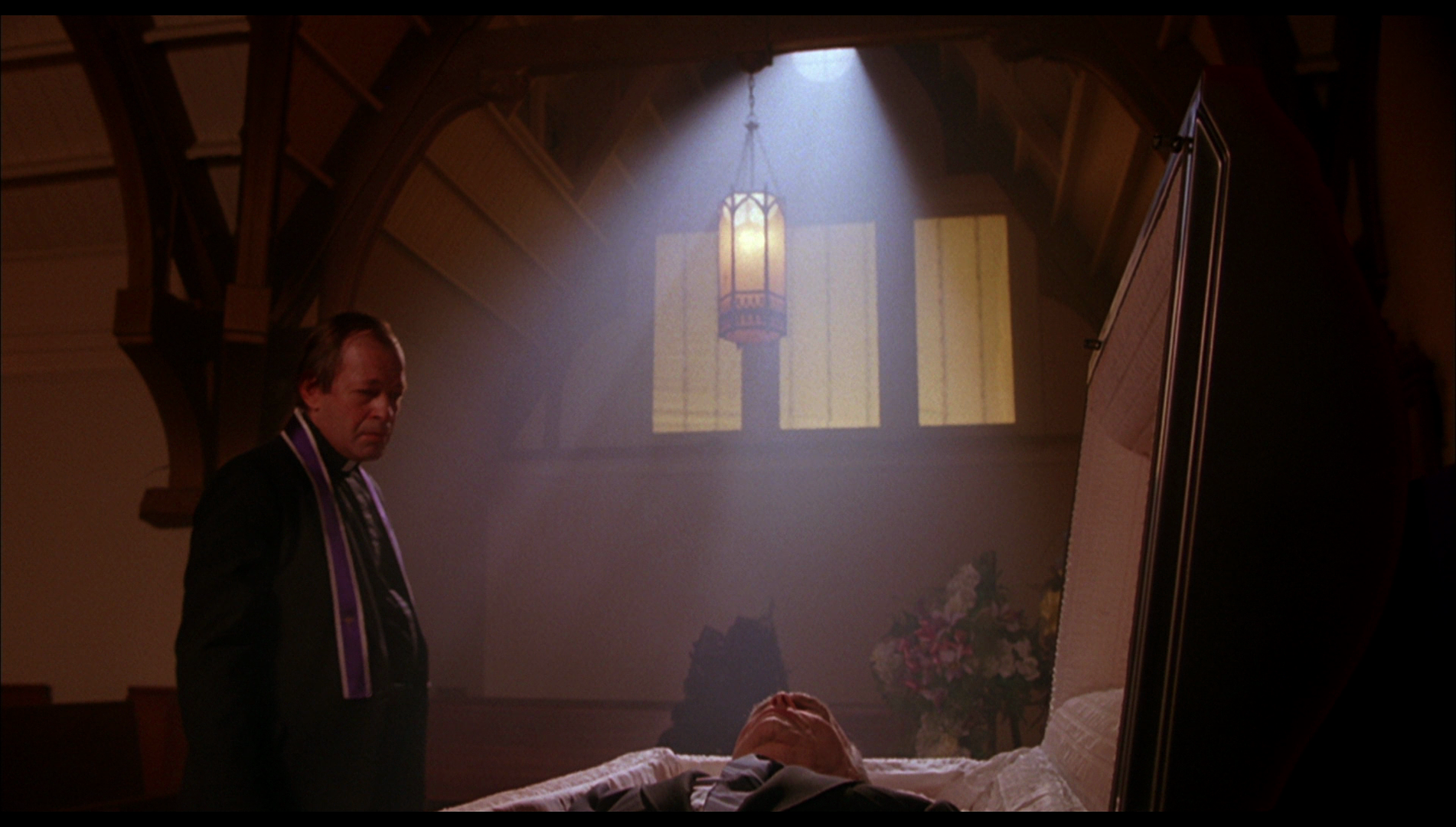 One of the most striking sequences in the series comes in Phantasm III, when the trio of looters stumble into the house that Tim has booby-trapped; Tim’s graphic killing of Edna and Rufus (Edna is killed by an axe which buries itself in her skull, and Rufus is killed with the razor blade-wielding Frisbee that Tim throws) is potentially disturbing because the perpetrator of this violence is a child. However, this sequence speaks of an era of American cinema in which young people and children seemed often to be shown booby-trapping their homes against various groups – from horror films like Wes Craven’s A Nightmare on Elm Street (1984) to comedies such as Chris Columbus’ Home Alone (1990). One of the most striking sequences in the series comes in Phantasm III, when the trio of looters stumble into the house that Tim has booby-trapped; Tim’s graphic killing of Edna and Rufus (Edna is killed by an axe which buries itself in her skull, and Rufus is killed with the razor blade-wielding Frisbee that Tim throws) is potentially disturbing because the perpetrator of this violence is a child. However, this sequence speaks of an era of American cinema in which young people and children seemed often to be shown booby-trapping their homes against various groups – from horror films like Wes Craven’s A Nightmare on Elm Street (1984) to comedies such as Chris Columbus’ Home Alone (1990).
The series’ chief source of horror is in the suggestion that death is not a peaceful rest. The first film’s suggestion that the Tall Man desecrates the graves of his victims, stealing corpses to reanimate them and use them as slaves on his home planet/dimension, is more disturbing than the gore. When Michael, Reggie and Jody discover that their friend Tommy – or rather, his reanimated corpse, shrunk down to the size of a dwarf – has attacked them, Michael becomes worried about the implications of this, expressing concern that the Tall Man may have done the same thing to his and Jody’s parents. ‘What about mom and dad? They’re up there [in Morningside Cemetery] too’, he cries out. Later, after the trio have discovered the Tall Man’s portal, Michael realises the core element in the Tall Man’s plan: ‘They’re using them [the dwarfs] as slaves’, Michael tells Jody, ‘And they gotta crush them because of the gravity and the heat. And this is the door to their planet’. The Tall Man has other minions besides the dwarfs, including what Michael calls ‘gravers’; first appearing in Phantasm II and usually seen wearing gas masks, the gravers ‘are the ones that exhume the bodies for him’ (as Michael tells Reggie). The Tall Man’s purpose in acquiring these minions is explained by Jody in Phantasm III: ‘He’s amassing an army’, Jody tells the others, ‘to conquer dimensions, worlds unknown’. 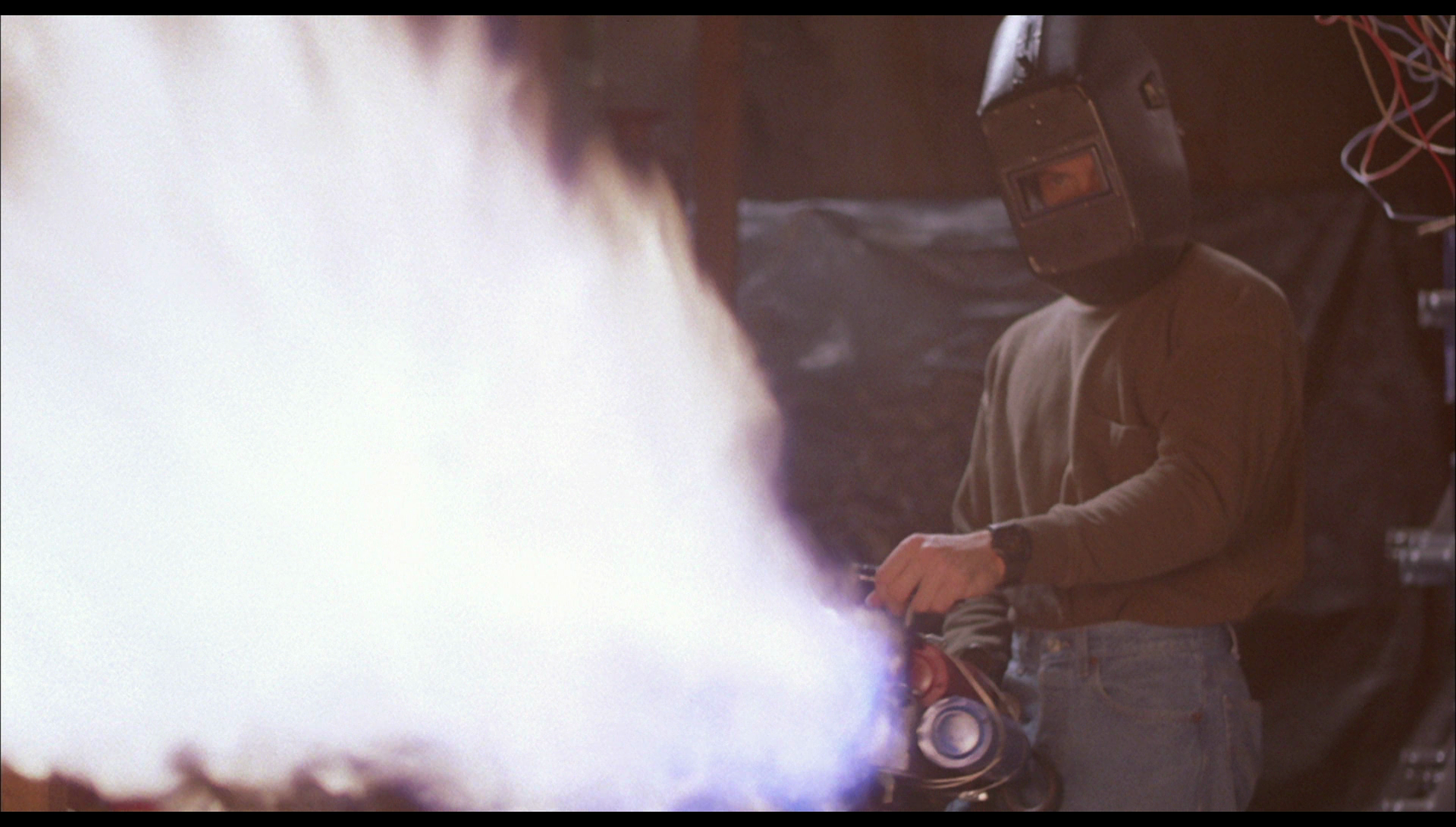 Coscarelli ascribed the lasting success of the Phantasm films to two factors: the presence of Angus Scrimm, who Coscarelli says ‘really has a power over audiences; they love to be scared by him’; and ‘the chrome spheres, which are the killing devices and audiences like to see them do their tricks’ (Coscarelli, quoted in ibid.: 51). From these spheres spring blades and drills that drain the fluid from their victims’ brain skulls, like a high-tech form of trepanning. In Phantasm II, Liz refers to the sphere she saw kill the priest as ‘a flying cuisinart’. The violence, Coscarelli says, is ‘out of the realm of the ordinary’, a type of brutality ‘that just could never happen in real life’ (Coscarelli, quoted in ibid.). It’s a type of violence that separates the Phantasm films from slasher pictures: the Phantasm films, Coscarelli asserts, are ‘nothing like slasher films where teenagers are having sex and then they’re butchered. They’ve never been like that’ (Coscarelli, quoted in ibid.). However, Coscarelli admits to being disturbed when fans approach him to say they saw the first Phantasm picture at a young age (Coscarelli, in ibid.). Coscarelli ascribed the lasting success of the Phantasm films to two factors: the presence of Angus Scrimm, who Coscarelli says ‘really has a power over audiences; they love to be scared by him’; and ‘the chrome spheres, which are the killing devices and audiences like to see them do their tricks’ (Coscarelli, quoted in ibid.: 51). From these spheres spring blades and drills that drain the fluid from their victims’ brain skulls, like a high-tech form of trepanning. In Phantasm II, Liz refers to the sphere she saw kill the priest as ‘a flying cuisinart’. The violence, Coscarelli says, is ‘out of the realm of the ordinary’, a type of brutality ‘that just could never happen in real life’ (Coscarelli, quoted in ibid.). It’s a type of violence that separates the Phantasm films from slasher pictures: the Phantasm films, Coscarelli asserts, are ‘nothing like slasher films where teenagers are having sex and then they’re butchered. They’ve never been like that’ (Coscarelli, quoted in ibid.). However, Coscarelli admits to being disturbed when fans approach him to say they saw the first Phantasm picture at a young age (Coscarelli, in ibid.).
Like Evil Dead II: Dead By Dawn (Sam Raimi, 1987) is as much a thinly-veiled remake of The Evil Dead (Raimi, 1981) as it is a ‘pure’ sequel, Phantasm II essentially reworks the narrative of Phantasm but adds an increasing emphasis on action. Both films speak of the dominant trends in popular cinema at the time. Where Phantasm is a Gothic horror picture filled with suggestion, Phantasm II sees Mike and Reggie ‘tooling up’ to combat the Tall Man and his minions, even going as far as including a montage in which the protagonists gather their weapons (in the manner of 1980s action pictures like Mark L Lester’s Commmando, 1985). After Reggie’s home has been destroyed and Reggie begins to believe Mike’s stories of the Tall Man, before setting out on their journey to find Liz, Reggie and Mike break into a hardware store and assemble a variety of weapons – including a chainsaw and a ‘homemade’ flamethrower. The shots of Mike rehearsing with this flamethrower might remind the viewer of the imagery within James Glickenhaus’ The Exterminator (1980), often used in the promotional art for that film, of vigilante John Eastland (Robert Ginty) wielding the flamethrower with which he confronts his prey. Later in the film, Reggie and Mike explore an abandoned, derelict mausoleum, Mike wielding his flamethrower in a manner similar to Ripley (Sigourney Weaver) when she enters the xenomorph nest in James Cameron’s Aliens (1986). They encounter what they believe to be Liz, cowering in the corner of one of the rooms; she is covered in a blanket, and when the blanket is removed Reggie and Mike are astonished to see a bizarre creature growing out of her back. They realise that this isn’t the ‘real’ Liz but rather an imposter, or trap, left in place by the Tall Man, and they set the Liz-clone alight with the flamethrower, the creature screaming in a manner that suggests this moment is a direct allusion to the sequence in John Carpenter’s The Thing (1982) in which Macready (Kurt Russell) uses his flamethrower to dispatch the infected/transforming Windows (Thomas G Waites). In their journey into the nest of the Tall Man, aided by Mike’s homemade flamethrower, Phantasm II cements its role as very much a post-Aliens/The Thing hybrid of action and horror. 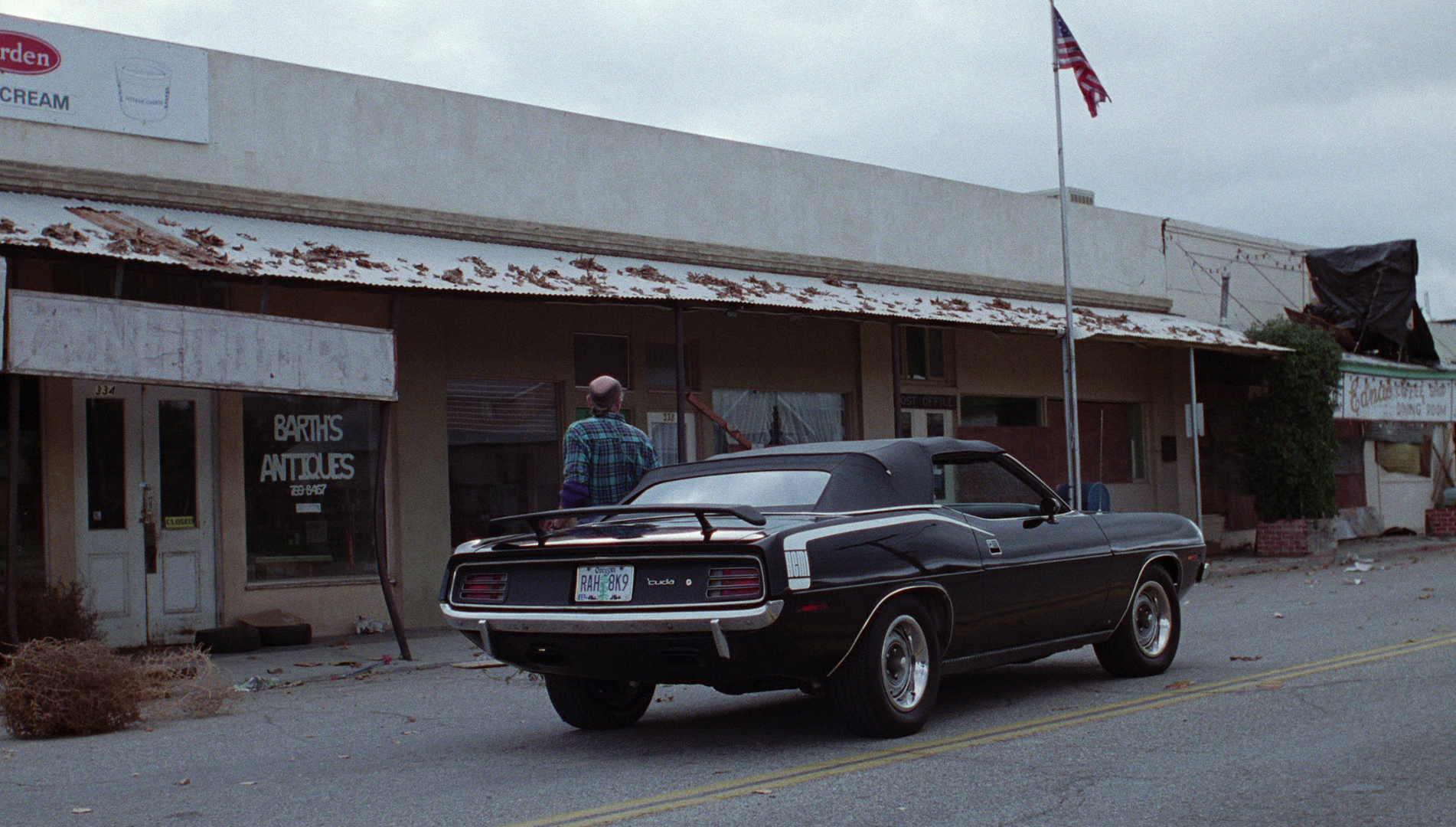 Furthermore, as the films progress the impact of the Tall Man on small town American becomes more obvious and destructive. Each successive film builds on the series’ ongoing narrative, Phantasm III showing the devastation wrought by the Tall Man on the small towns he visits; with Phantasm IV, which predominantly takes place in the desert, this sense of the landscape being post-apocalyptic (and Mike being the ‘saviour’) becomes more pronounced. In Phantasm V, Reggie finds himself in a future in which the sky is dominated by huge spheres from which spill lasers that rip open the ground and tear down buildings. ‘It’s really not our home anymore; it’s his’, Mike tells Reggie in that film. From Phantasm II onwards, the films share some elements of the road movie – in particular, a sense of near-constant movement through the American landscape, Reggie’s Plymouth Barracuda being the chief mode of transport. With each film, the landscape becomes more barren to the point that Phantasm IV and Phantasm V, in particular, become filled with imagery which gives the films a similar aesthetic to the popular post-apocalyptic pictures of the era such as Mad Max (George Miller, 1979) and its sequels. In Phantasm II, Reggie comments, via his narration, that identifying the Tall Man’s trail was easy: ‘Places he’d been to always looked the same. Small towns are like people. Some get old and die a natural death; some are murdered’. Furthermore, as the films progress the impact of the Tall Man on small town American becomes more obvious and destructive. Each successive film builds on the series’ ongoing narrative, Phantasm III showing the devastation wrought by the Tall Man on the small towns he visits; with Phantasm IV, which predominantly takes place in the desert, this sense of the landscape being post-apocalyptic (and Mike being the ‘saviour’) becomes more pronounced. In Phantasm V, Reggie finds himself in a future in which the sky is dominated by huge spheres from which spill lasers that rip open the ground and tear down buildings. ‘It’s really not our home anymore; it’s his’, Mike tells Reggie in that film. From Phantasm II onwards, the films share some elements of the road movie – in particular, a sense of near-constant movement through the American landscape, Reggie’s Plymouth Barracuda being the chief mode of transport. With each film, the landscape becomes more barren to the point that Phantasm IV and Phantasm V, in particular, become filled with imagery which gives the films a similar aesthetic to the popular post-apocalyptic pictures of the era such as Mad Max (George Miller, 1979) and its sequels. In Phantasm II, Reggie comments, via his narration, that identifying the Tall Man’s trail was easy: ‘Places he’d been to always looked the same. Small towns are like people. Some get old and die a natural death; some are murdered’.
Though not explicitly represented as an ‘unholy’ presence, the Tall Man challenges the paradigms of the Christian faith. This is a theme that is pushed to the foreground in Phantasm II, in particular. When Liz’s grandfather dies, Liz and her grandmother attend the funeral, which takes place in a chapel attached to the mausoleum. The priest is troubled; he appears to know of the Tall Man and his desecration of the graves of those who have died, but has turned a blind eye to this. However, following Liz’s grandfather’s funeral the priest mutters to himself: ‘I must end this sacrilege. I can’t close my eyes to the things I’ve seen. It must be stopped’. He swigs from a hip flask to gather his courage and plunges a dagger into the chest of Liz’s grandfather. Later, in the mausoleum, the priest encounters the Tall Man and a dialogue ensues which places the Tall Man in opposition to the Christian values symbolised by the priest. ‘They [the dead] have no need of your services’, the Tall Man tells the priest. ‘Who are you to question the word of God’s servant?’, the priest asks in response. The Tall Man raises an eyebrow before using psychokinesis to cause the priest’s rosary to tighten around his neck, choking the priest and lifting him off the ground. 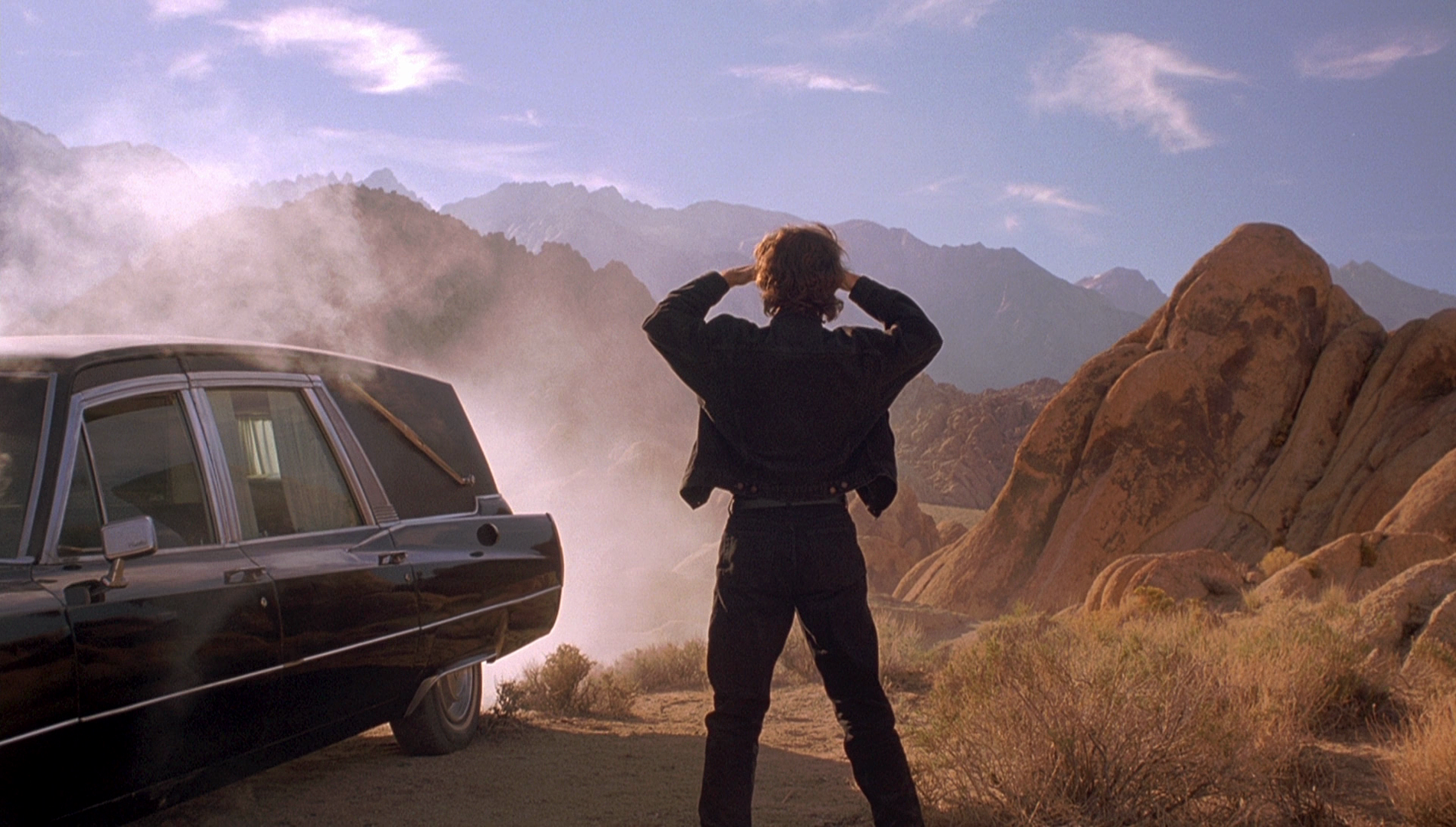 When, in Phantasm IV, Michael seeks self-imposed isolation in the desert, experiencing visions of the Tall Man, the viewer might be reminded of the temptations of Christ in the desert, as written in Luke, Mark and Matthew. Here, Michael becomes a cypher for Christ, whilst the Tall Man is clearly cast as Satan. Michael attempts to hang himself, believing that this act as a trap for the Tall Man owing to their seemingly psychic connection. However, Michael’s plan does not work. The Tall Man appears to Michael, telling him ‘Where do you think you’re going, boy? Death is no escape from me!’ As Michael hangs from the Joshua Tree, he experiences a vision of himself as a thirteen year old, and the Tall Man caught in a trap in which he is hanging from a tree at nighttime. (This is unused footage shot for the first Phantasm.) However, the Tall Man deceives young Michael, offering empty promises in exchange for his freedom; young Michael cuts the Tall Man down from the tree. As the Tall Man descends to the ground, we cut to the present as the rope from which Michael has hanged himself snaps. ‘I’ve been waiting for you for a very long time’, the Tall Man tells Michael, ‘You may not take your own life. That is my domain, exclusively’. When, in Phantasm IV, Michael seeks self-imposed isolation in the desert, experiencing visions of the Tall Man, the viewer might be reminded of the temptations of Christ in the desert, as written in Luke, Mark and Matthew. Here, Michael becomes a cypher for Christ, whilst the Tall Man is clearly cast as Satan. Michael attempts to hang himself, believing that this act as a trap for the Tall Man owing to their seemingly psychic connection. However, Michael’s plan does not work. The Tall Man appears to Michael, telling him ‘Where do you think you’re going, boy? Death is no escape from me!’ As Michael hangs from the Joshua Tree, he experiences a vision of himself as a thirteen year old, and the Tall Man caught in a trap in which he is hanging from a tree at nighttime. (This is unused footage shot for the first Phantasm.) However, the Tall Man deceives young Michael, offering empty promises in exchange for his freedom; young Michael cuts the Tall Man down from the tree. As the Tall Man descends to the ground, we cut to the present as the rope from which Michael has hanged himself snaps. ‘I’ve been waiting for you for a very long time’, the Tall Man tells Michael, ‘You may not take your own life. That is my domain, exclusively’.
Video
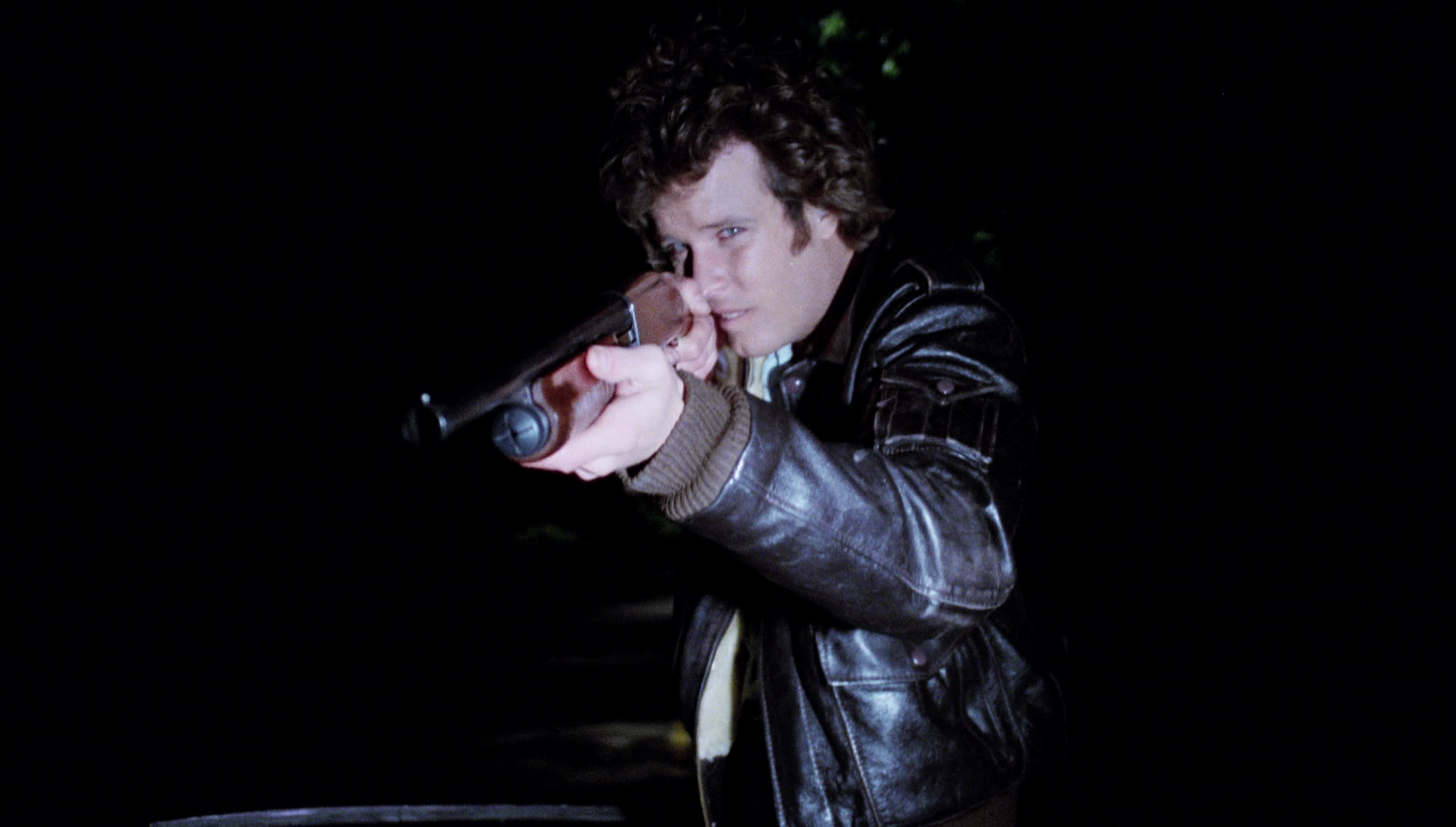 All five films are housed on separate Blu-ray discs, and all of the films take up around 24-30Gb of space on their respective discs. Running for 89:06 mins and in the 1.78:1 screen ratio, Arrow’s HD presentation of Phantasm is in 1080p and uses the AVC codec. The presentation is based on the new 4k restoration of the film, from the film’s negative, that was overseen by longtime Phantasm fan J J Abrams. In the process of restoring the film, Coscarelli digitally tweaked some of the effects involving the spheres, which has irked some of the film’s fans. All five films are housed on separate Blu-ray discs, and all of the films take up around 24-30Gb of space on their respective discs. Running for 89:06 mins and in the 1.78:1 screen ratio, Arrow’s HD presentation of Phantasm is in 1080p and uses the AVC codec. The presentation is based on the new 4k restoration of the film, from the film’s negative, that was overseen by longtime Phantasm fan J J Abrams. In the process of restoring the film, Coscarelli digitally tweaked some of the effects involving the spheres, which has irked some of the film’s fans.
The presentation of the first film is excellent. Most of the film takes place in low-light situations, and these are handled superbly here: contrast levels are very pleasing, midtones having a strong sense of definition to them and shadows tapering off into the deepest black. The 35mm colour photography has a very impressive level of detail communicated within this presentation, and the image is crisp and clean throughout. Colours are represented well, and a strong encode to disc ensures the presentation retains the structure of 35mm film. The presentation of Phantasm II is a little less impressive. Phantasm II has a running time of 96:38 mins, and is in the 1.85:1 ratio. Again, the 1080p presentation uses the AVC codec. Shot on 35mm colour stock, Phantasm II has good contrast here, with low-light scenes faring well; colours are natural, organic. However, this presentation seems to be based on the same master as the film’s previous Blu-ray releases; this master seems to have had some digital noise reduction applied to it, with textures sometimes looking smooth and the grain structure appearing muted. It’s a reasonable presentation, but something of a come-down after the superb presentation of the first picture. 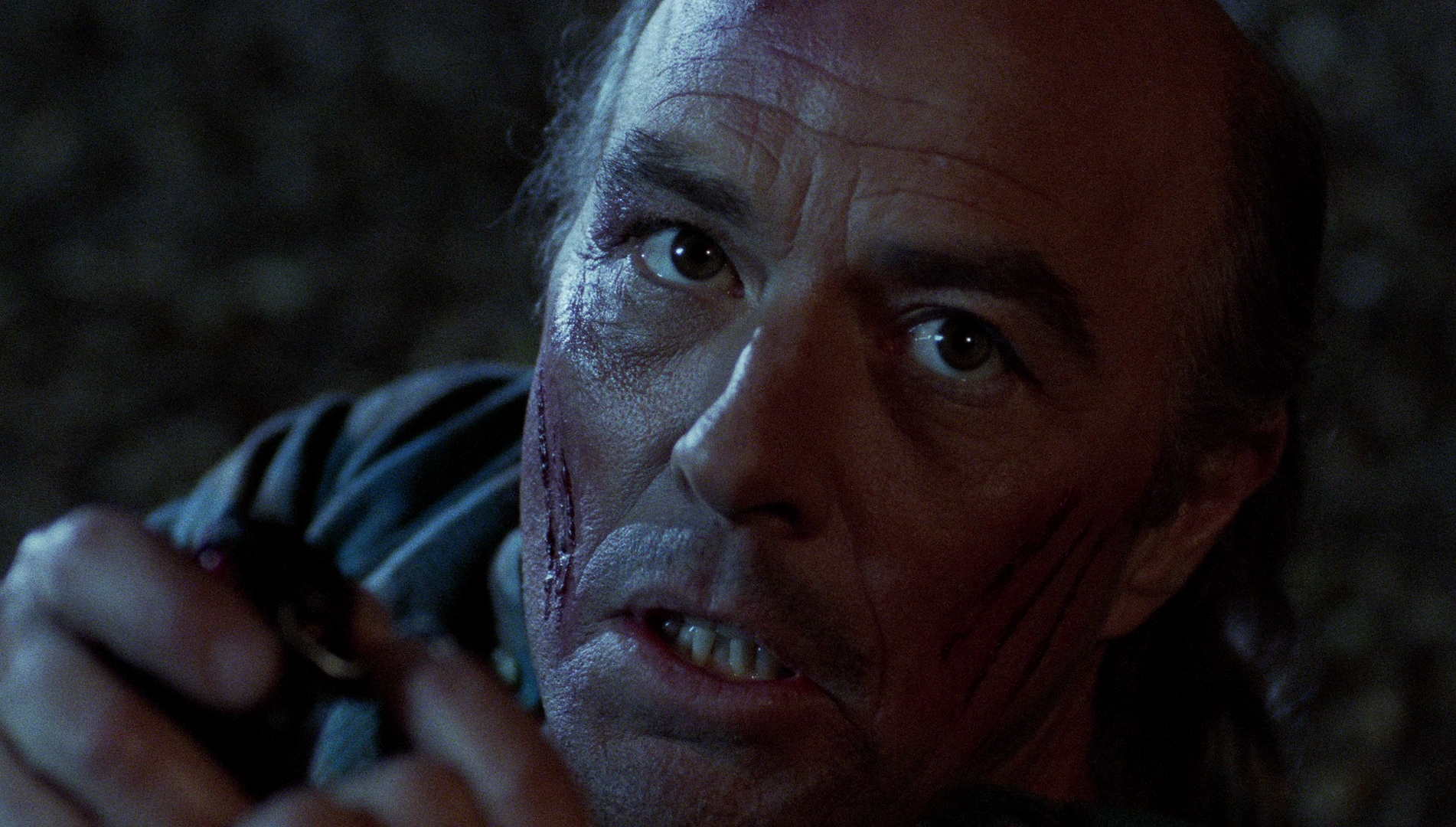 Phantasm III and Phantasm IV have a very similar look to them. Phantasm III runs for 91:14 mins; Phantasm IV has a running time of 90:00 mins. Both films are presented in 1080p, using the AVC codec, and in the 1.78:1 ratio. The image in both films is crisp, with a strong level of fine detail present. The mid/late-1990s film stock has a different texture to the stock used to shoot the first two pictures, the image here displaying different contrast levels and blacks not as deep as those in Phantasm and Phantasm II. Both films benefit from impressive encodes, retaining the structure of 35mm film. In comparison with the first two pictures, Phantasm III and Phantasm IV seem to have been shot with lenses that are almost clinically sharp. This is particularly noticeable in Phantasm IV, which also includes quite a lot of footage shot during the production of Phantasm but not included in the final edit of that picture. This footage has a noticeably different quality to the modern-day footage contained within the film. Phantasm IV also includes a brief monochrome sequence: Michael’s flashback to the Civil War, where he encounters the Tall Man working as a field surgeon. Contrast is excellent in this sequence, strongly defined midtones and balanced highlights being offset by bold blacks. Phantasm III and Phantasm IV have a very similar look to them. Phantasm III runs for 91:14 mins; Phantasm IV has a running time of 90:00 mins. Both films are presented in 1080p, using the AVC codec, and in the 1.78:1 ratio. The image in both films is crisp, with a strong level of fine detail present. The mid/late-1990s film stock has a different texture to the stock used to shoot the first two pictures, the image here displaying different contrast levels and blacks not as deep as those in Phantasm and Phantasm II. Both films benefit from impressive encodes, retaining the structure of 35mm film. In comparison with the first two pictures, Phantasm III and Phantasm IV seem to have been shot with lenses that are almost clinically sharp. This is particularly noticeable in Phantasm IV, which also includes quite a lot of footage shot during the production of Phantasm but not included in the final edit of that picture. This footage has a noticeably different quality to the modern-day footage contained within the film. Phantasm IV also includes a brief monochrome sequence: Michael’s flashback to the Civil War, where he encounters the Tall Man working as a field surgeon. Contrast is excellent in this sequence, strongly defined midtones and balanced highlights being offset by bold blacks.
Shot digitally, Phantasm V has a very different aesthetic to all of the previous pictures. Presented in the 1.78:1 ratio, this Blu-ray presentation of Phantasm V is, naturally, a downscaled presentation of a digital source. As such, as one might expect, the image is crisp and detailed, the film seemingly shot on light, mobile cameras. Highlights are pulled back as far as possible but clipped here and there owing to the lesser dynamic range of digital sensors compared with analogue film. Some HDR-type techniques seem to have been applied, resulting in fringing around objects. (There’s a scene in which Reggie is standing in front of some trees, the exposure levels on his face seeming equal to those behind him – unnaturally so – and the fringing on the trees suggesting the application of a HDR-type technique.) The encode is, once again, good; but it can’t disguise the fact that the digital aesthetic of Phantasm V is quite cheap and ugly, in comparison with some of the impressive photography of the earlier films (especially Phantasm). Phantasm 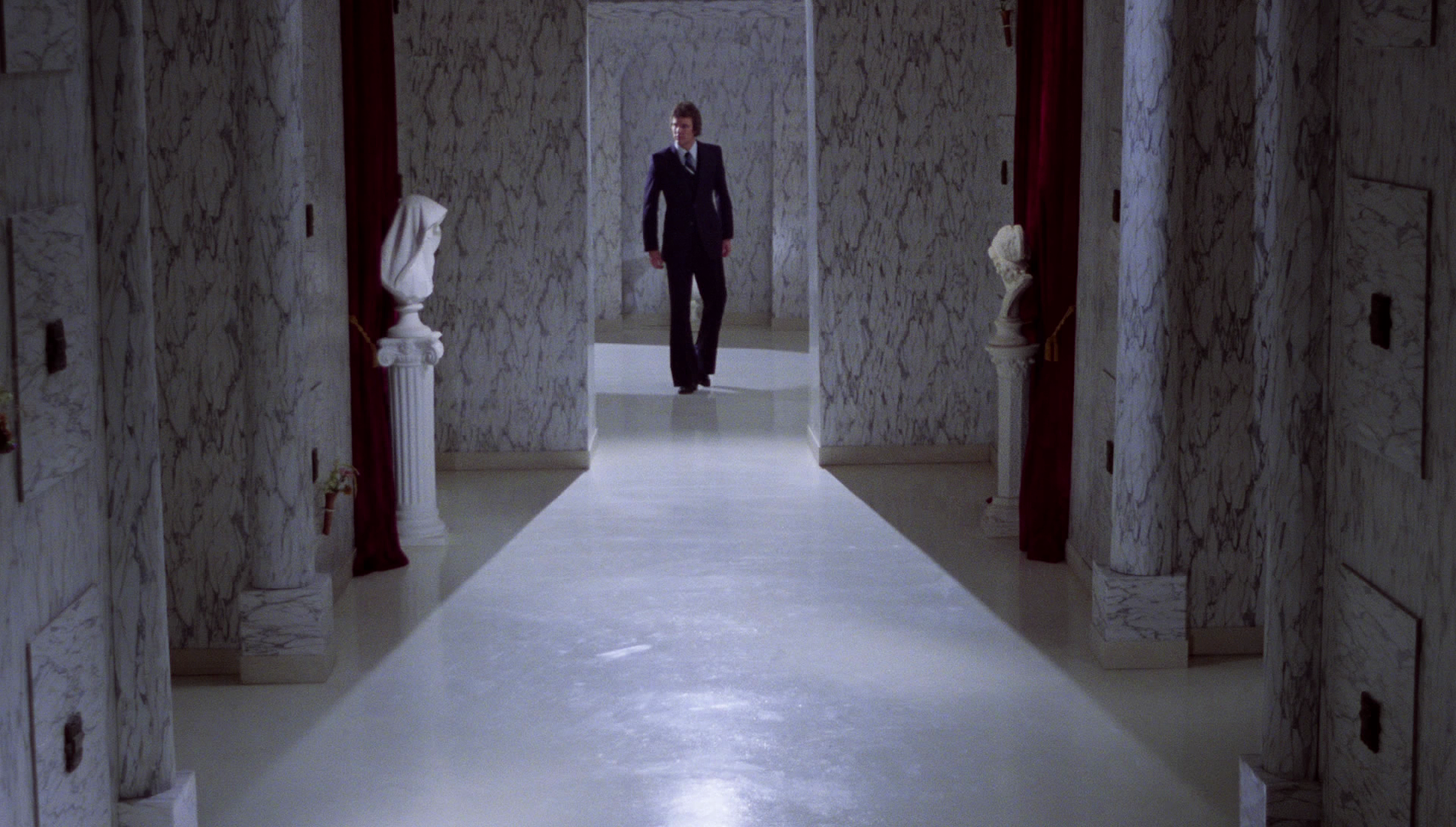 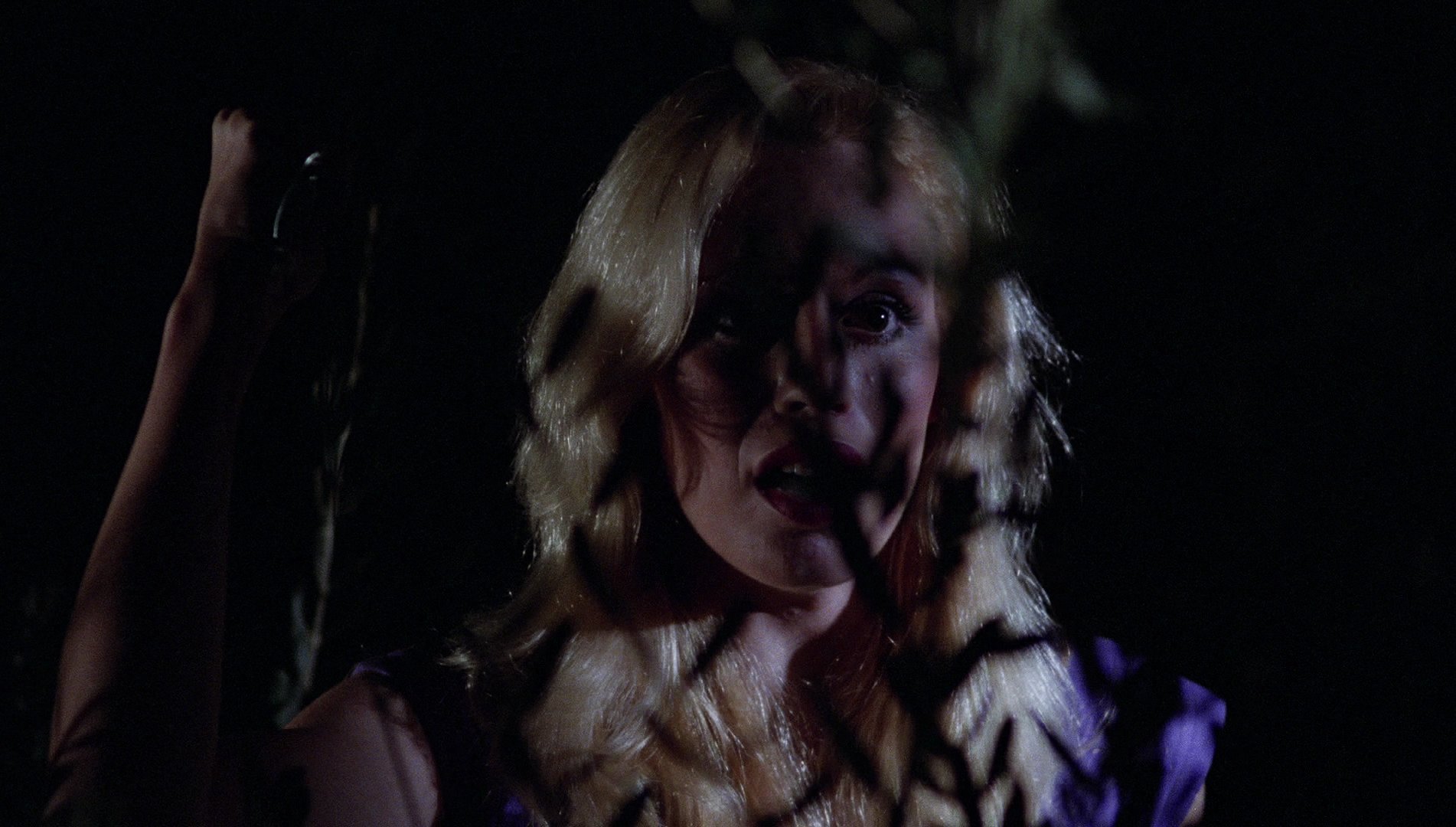 
Phantasm II 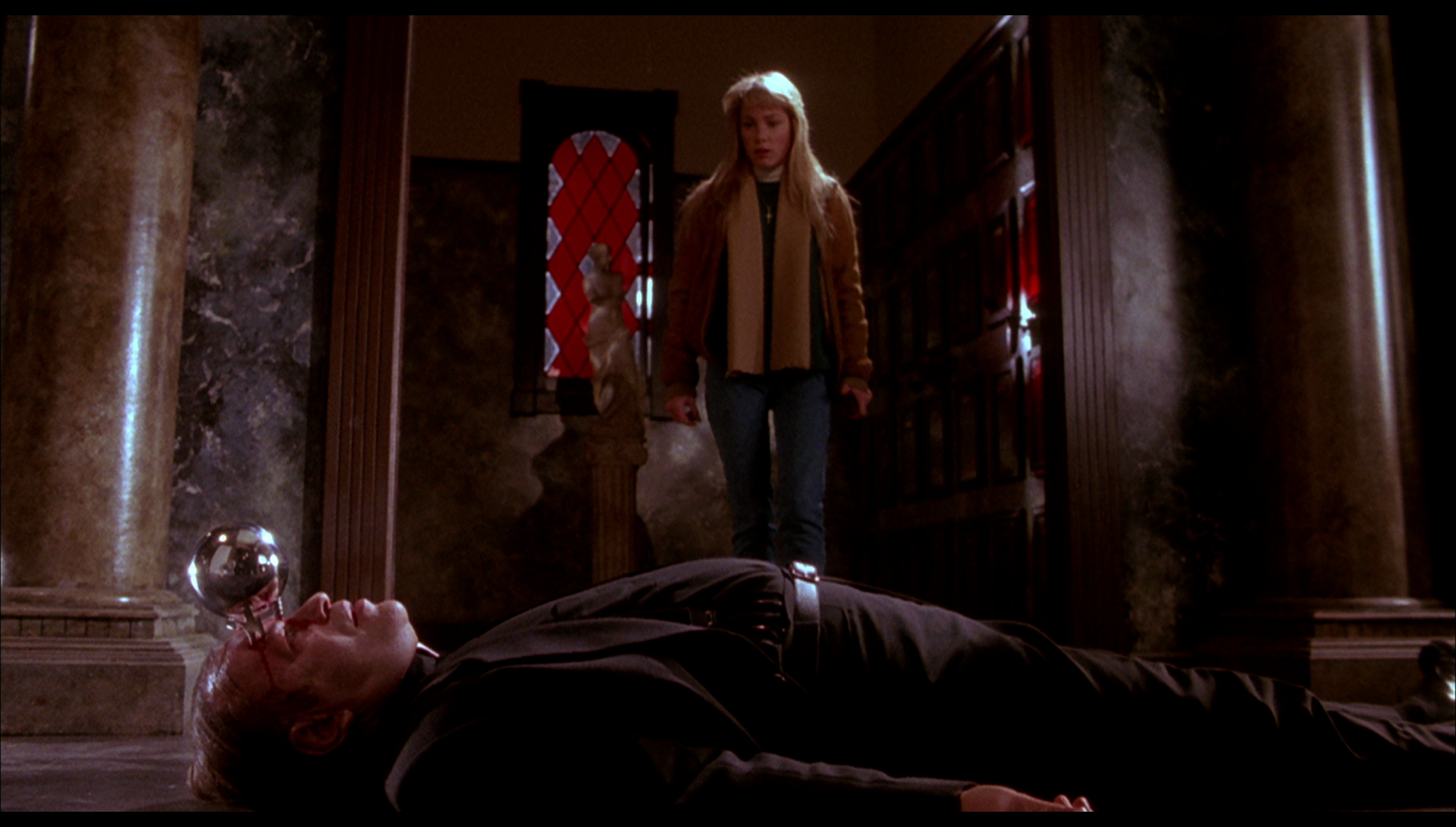 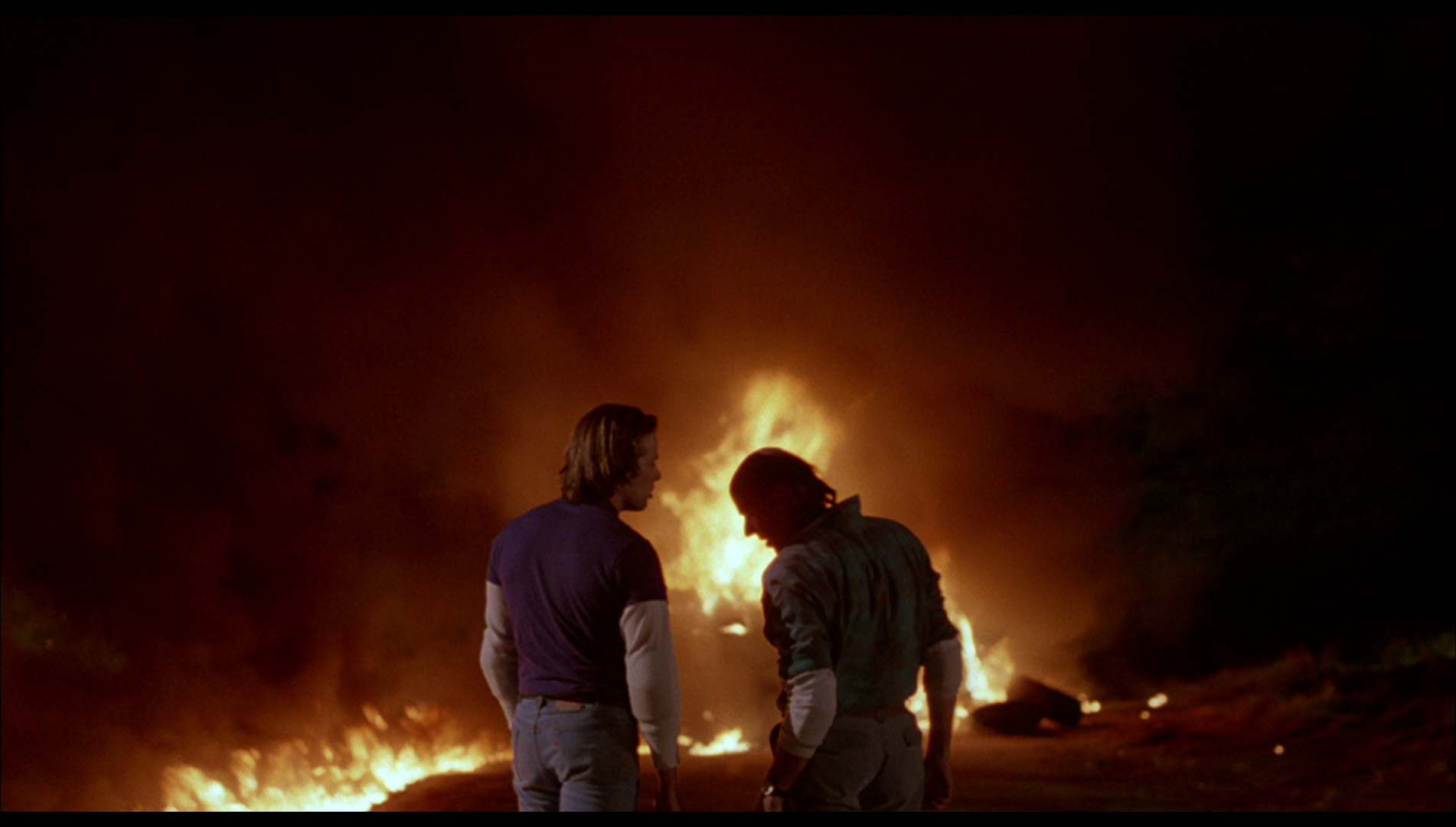 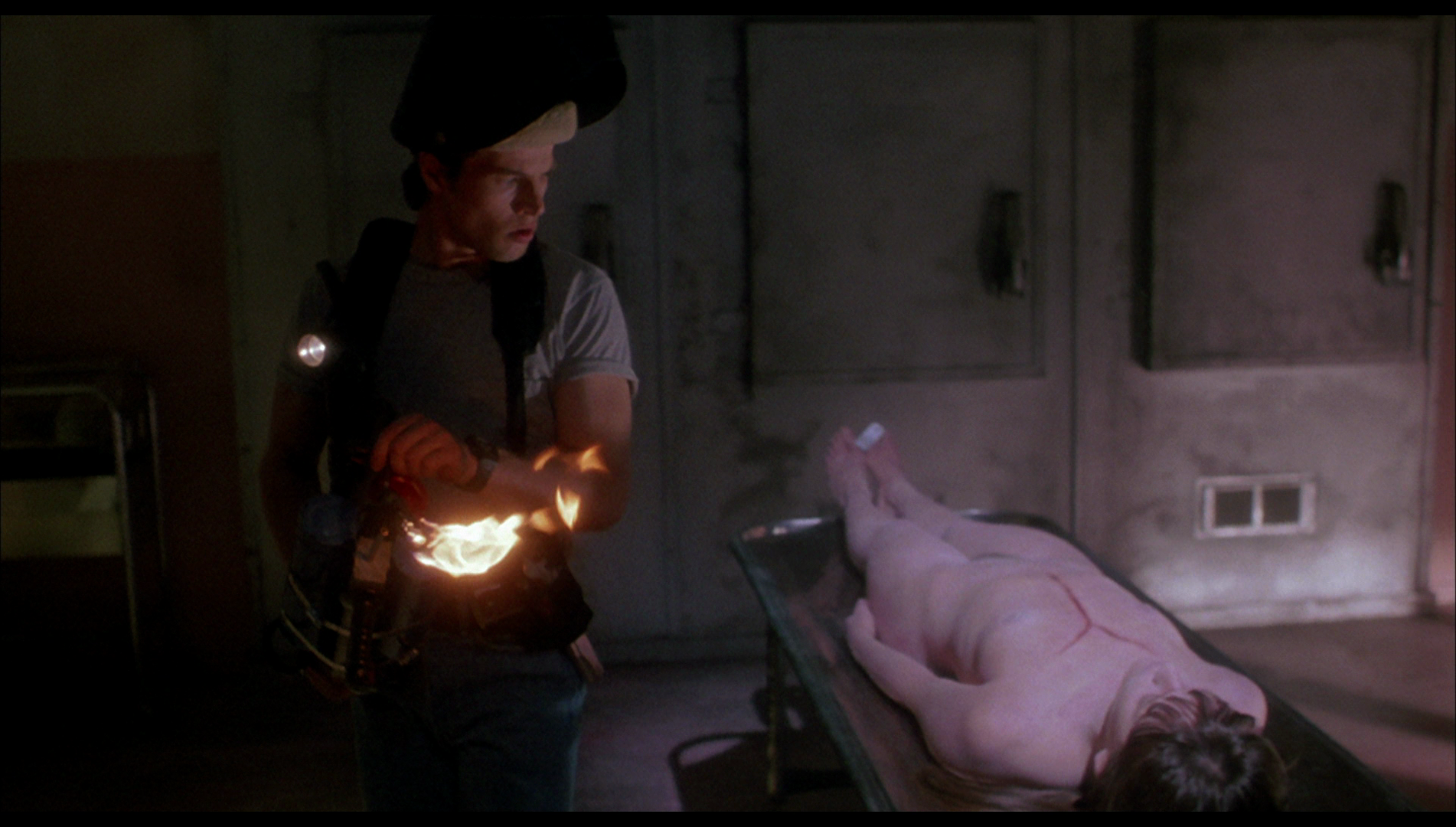
Phantasm III: Lord of the Dead 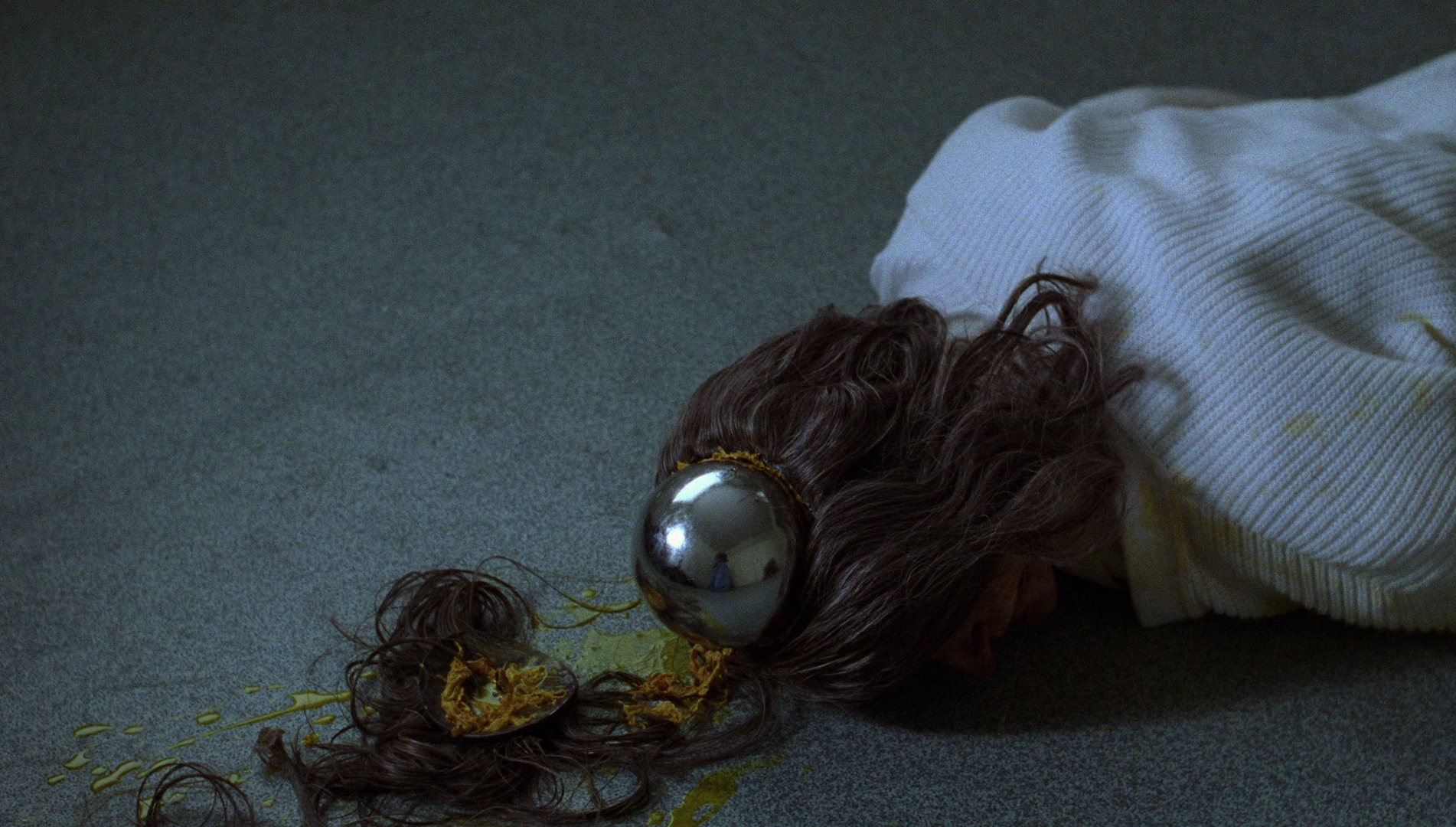 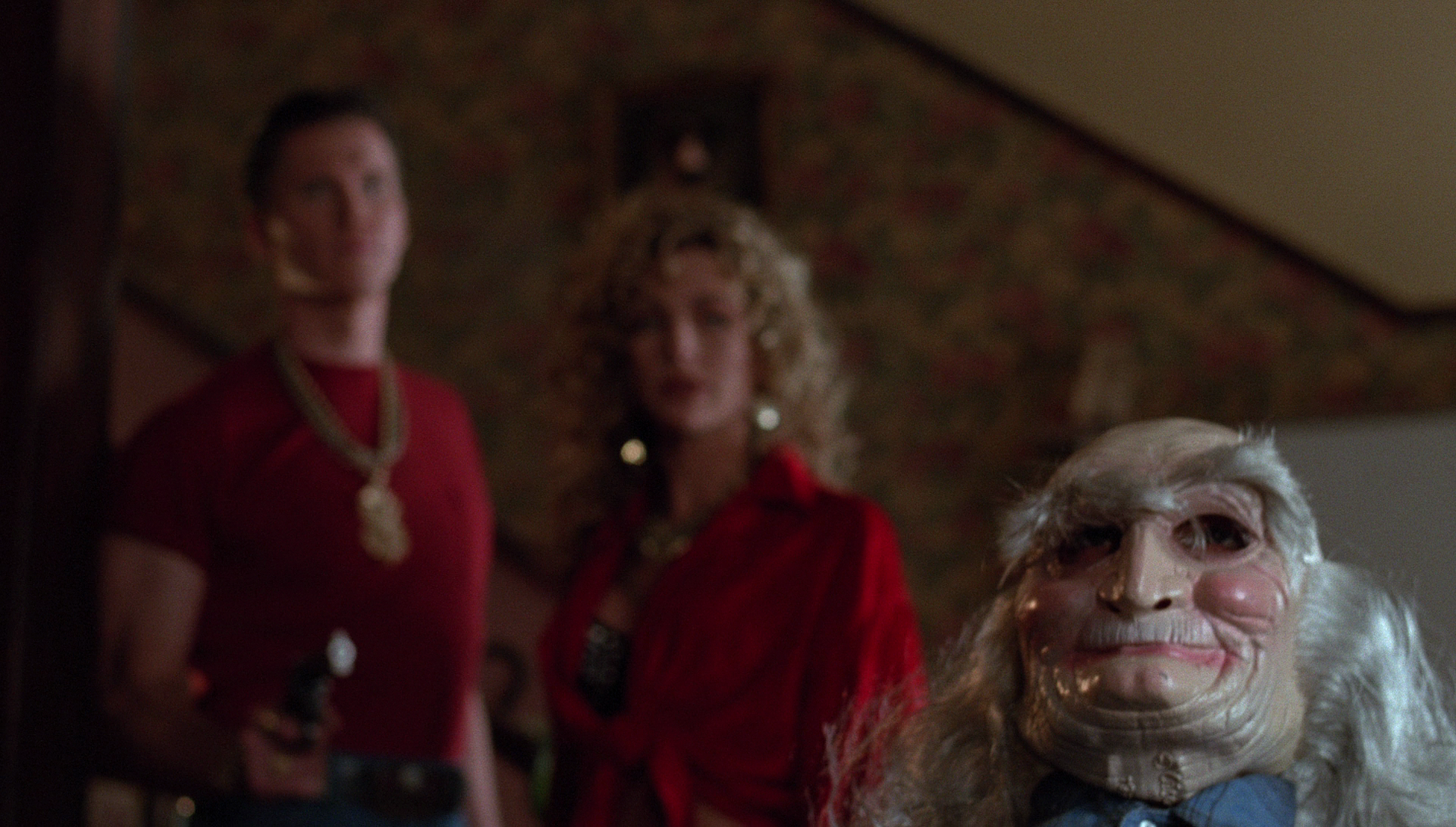 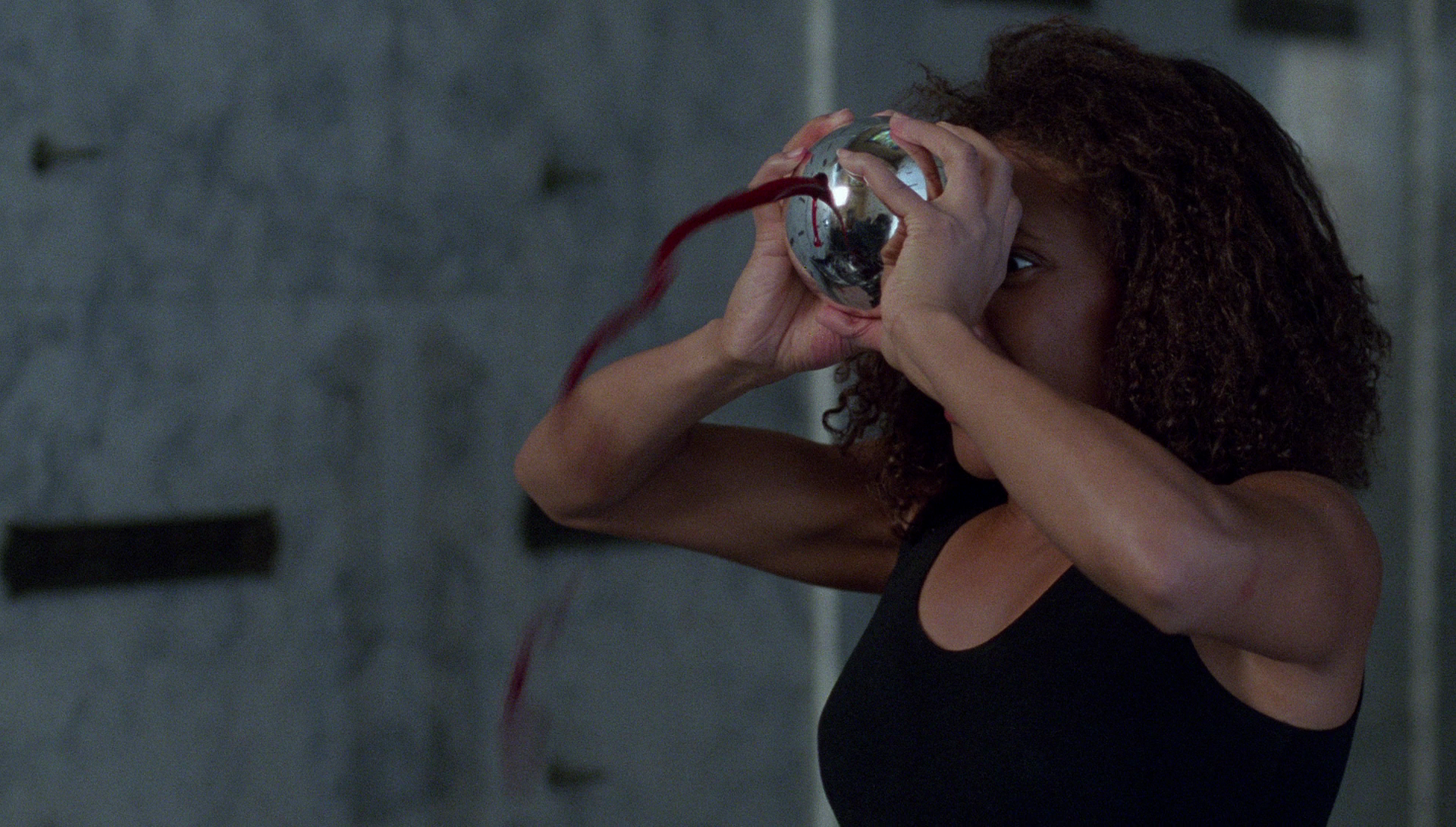
Phantasm IV: Oblivion 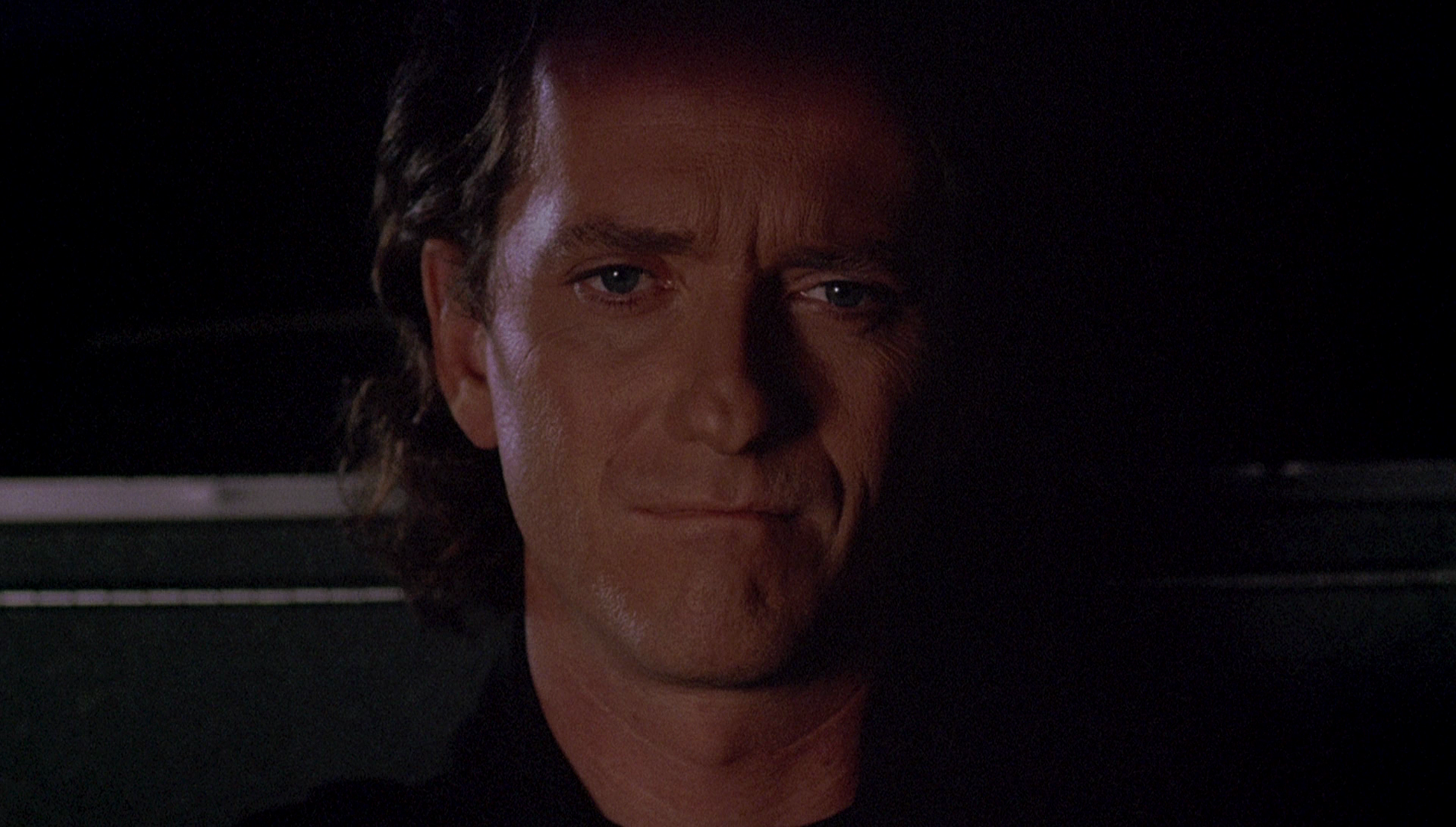 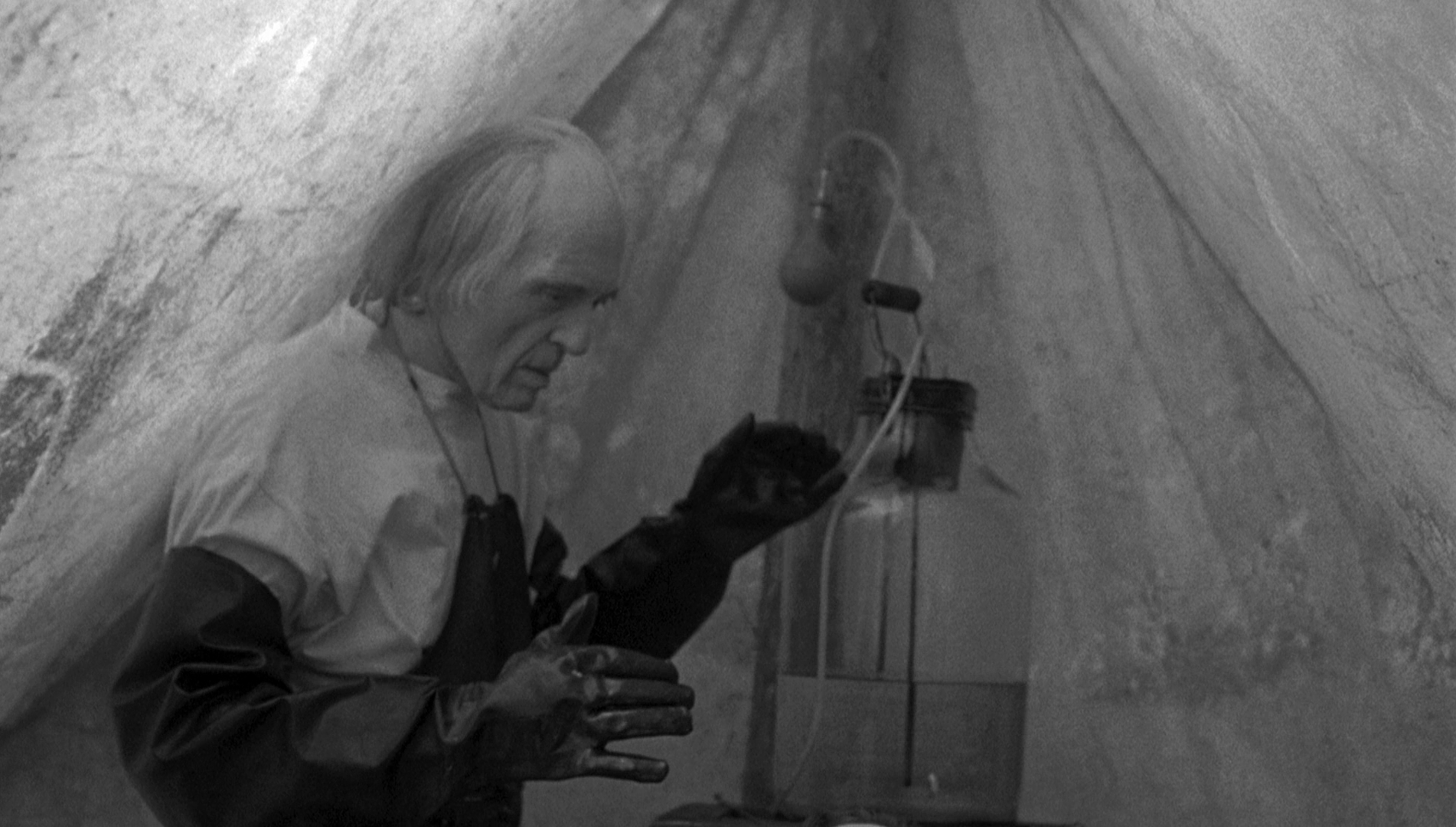 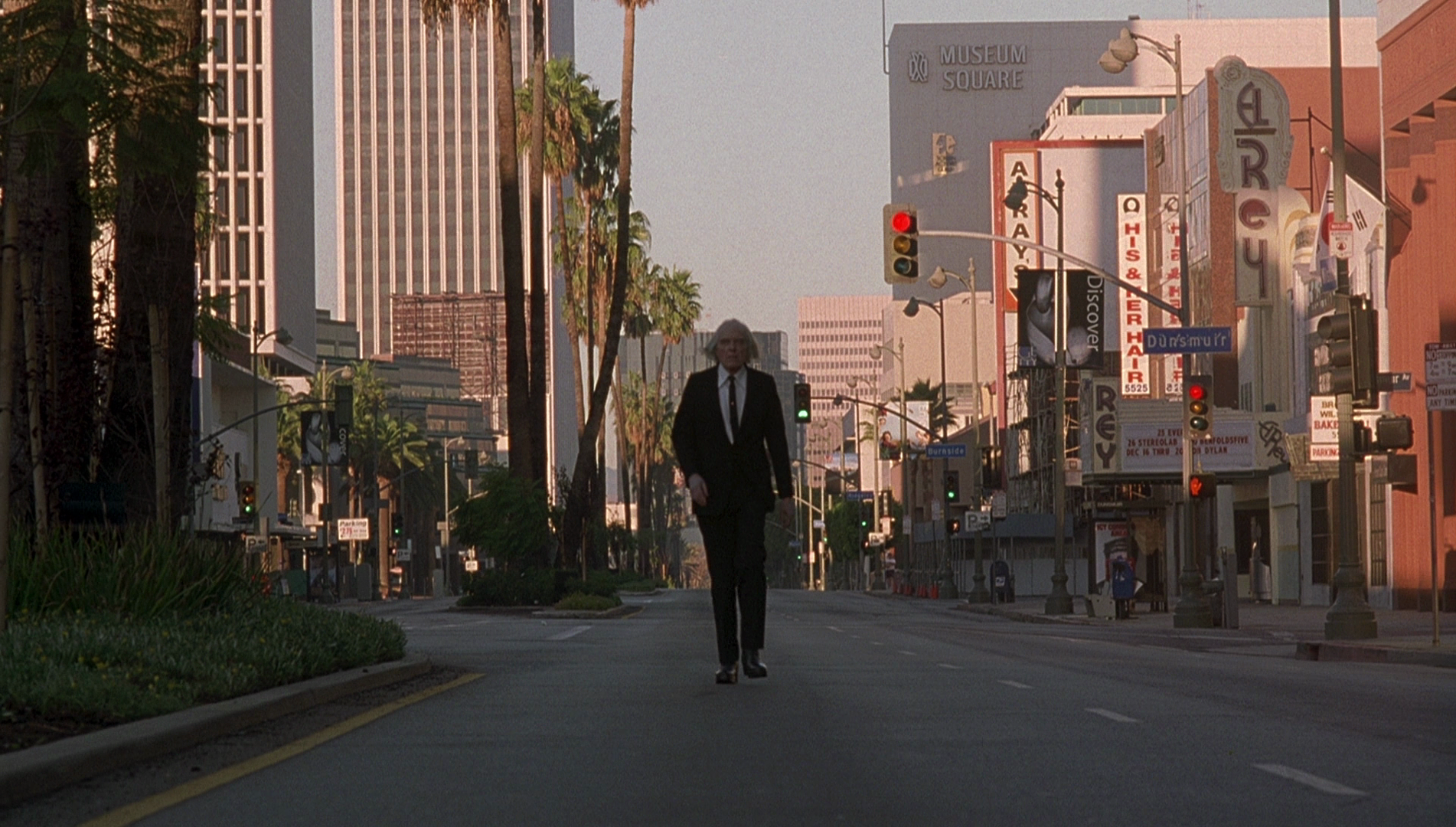
Phantasm V: Ravager 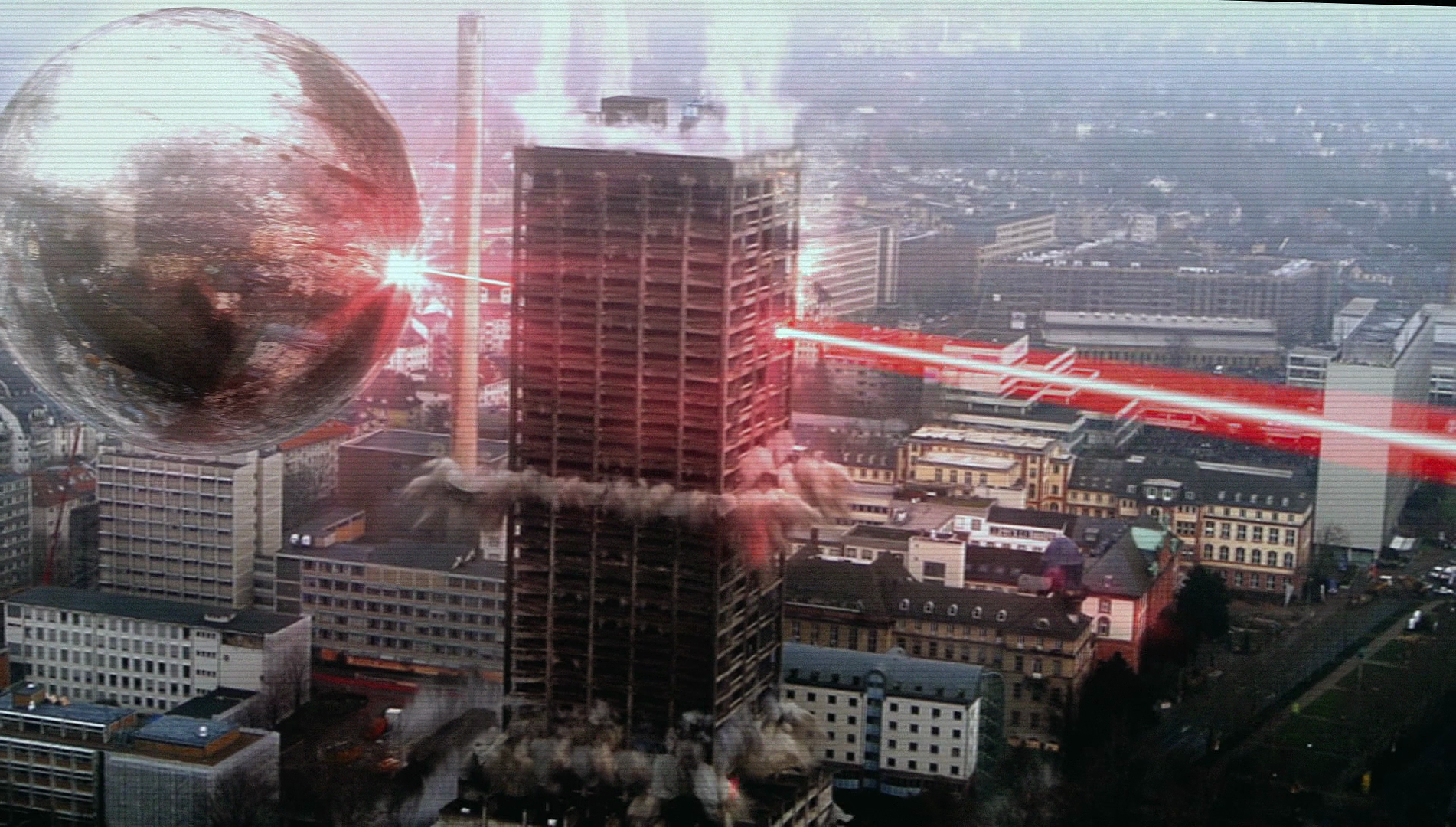 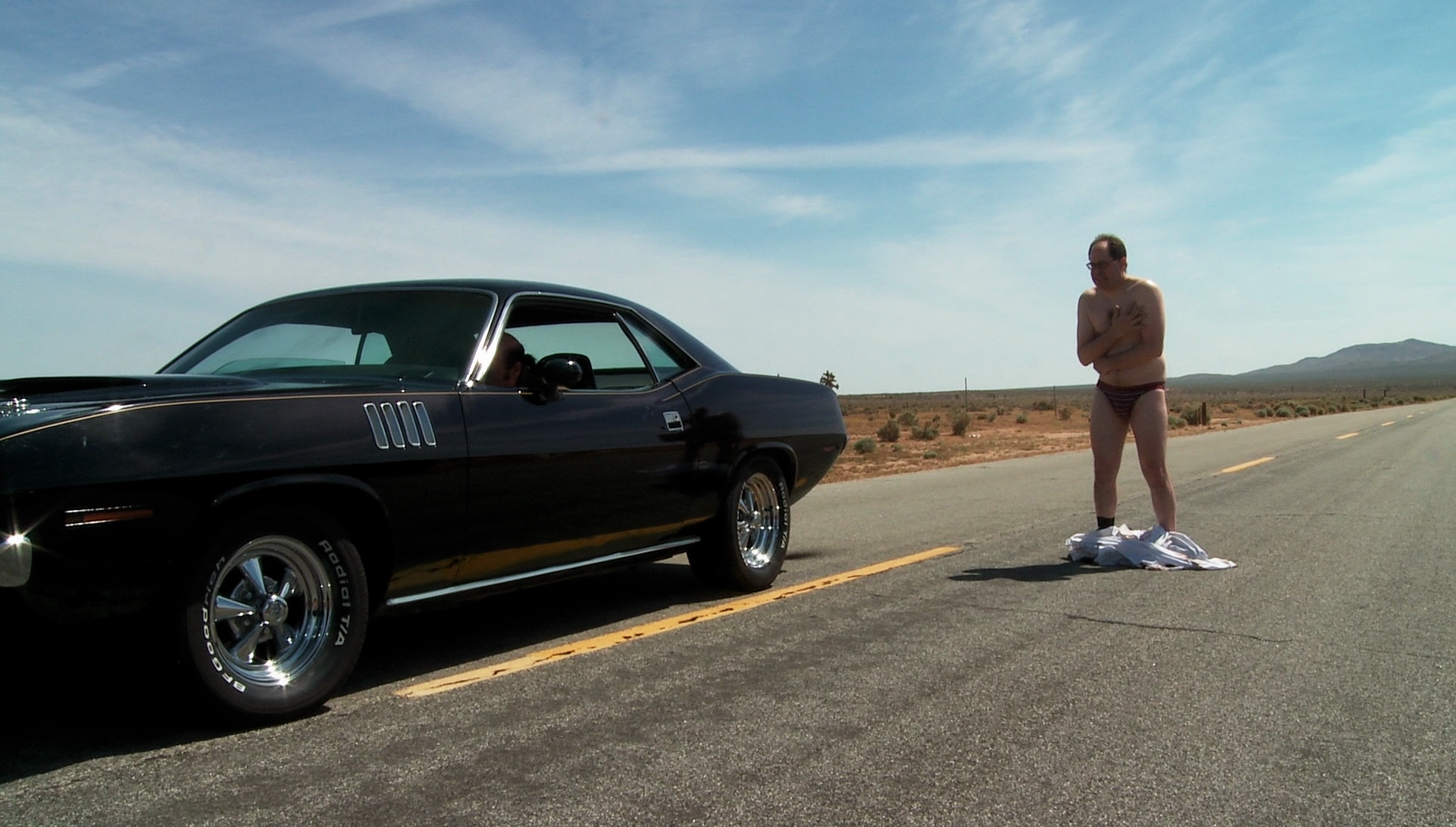 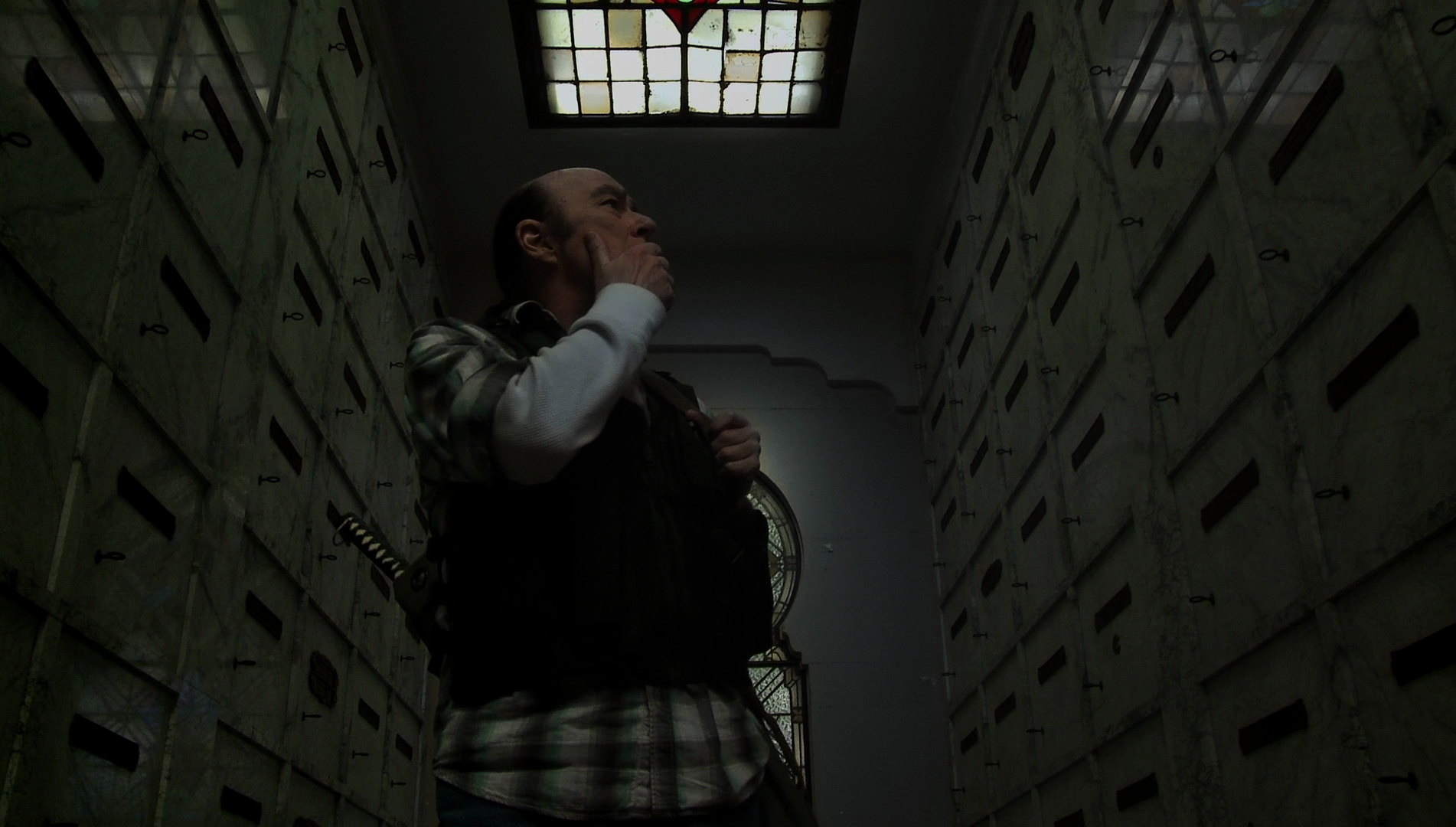
Audio
 Phantasm presents the audience with the option of watching the film with a LPCM 1.0 track or a DTS-HD MA 5.1 remix. Both tracks are rich and clear, with excellent range. Though the 5.1 remix has some added, and effective, separation of audio elements, purists will default to the original mono mix. Phantasm II, Phantasm III, Phantasm IV and Phantasm V offer identical options to one another: a LPCM 2.0 stereo track complemented by a DTS-HD MA 5.1 track. In the case of Phantasm II, the 5.1 track has, aside from the obvious sound separation, added ‘oomph’ in its range, in comparison with the stereo track on the same disc. The tracks on the other discs are roughly equal (and all equally pleasing), though again purists will most likely default to the stereo track on all of the films other than Phantasm V. Phantasm presents the audience with the option of watching the film with a LPCM 1.0 track or a DTS-HD MA 5.1 remix. Both tracks are rich and clear, with excellent range. Though the 5.1 remix has some added, and effective, separation of audio elements, purists will default to the original mono mix. Phantasm II, Phantasm III, Phantasm IV and Phantasm V offer identical options to one another: a LPCM 2.0 stereo track complemented by a DTS-HD MA 5.1 track. In the case of Phantasm II, the 5.1 track has, aside from the obvious sound separation, added ‘oomph’ in its range, in comparison with the stereo track on the same disc. The tracks on the other discs are roughly equal (and all equally pleasing), though again purists will most likely default to the stereo track on all of the films other than Phantasm V.
All of the films are accompanied by optional English subtitles for the Hard of Hearing. These are all easy to read and largely free from errors (though Phantasm V features, at 37 minutes into the picture, a noticeable grammatical error: ‘You [sic] loved ones’).
Extras
DISC ONE: 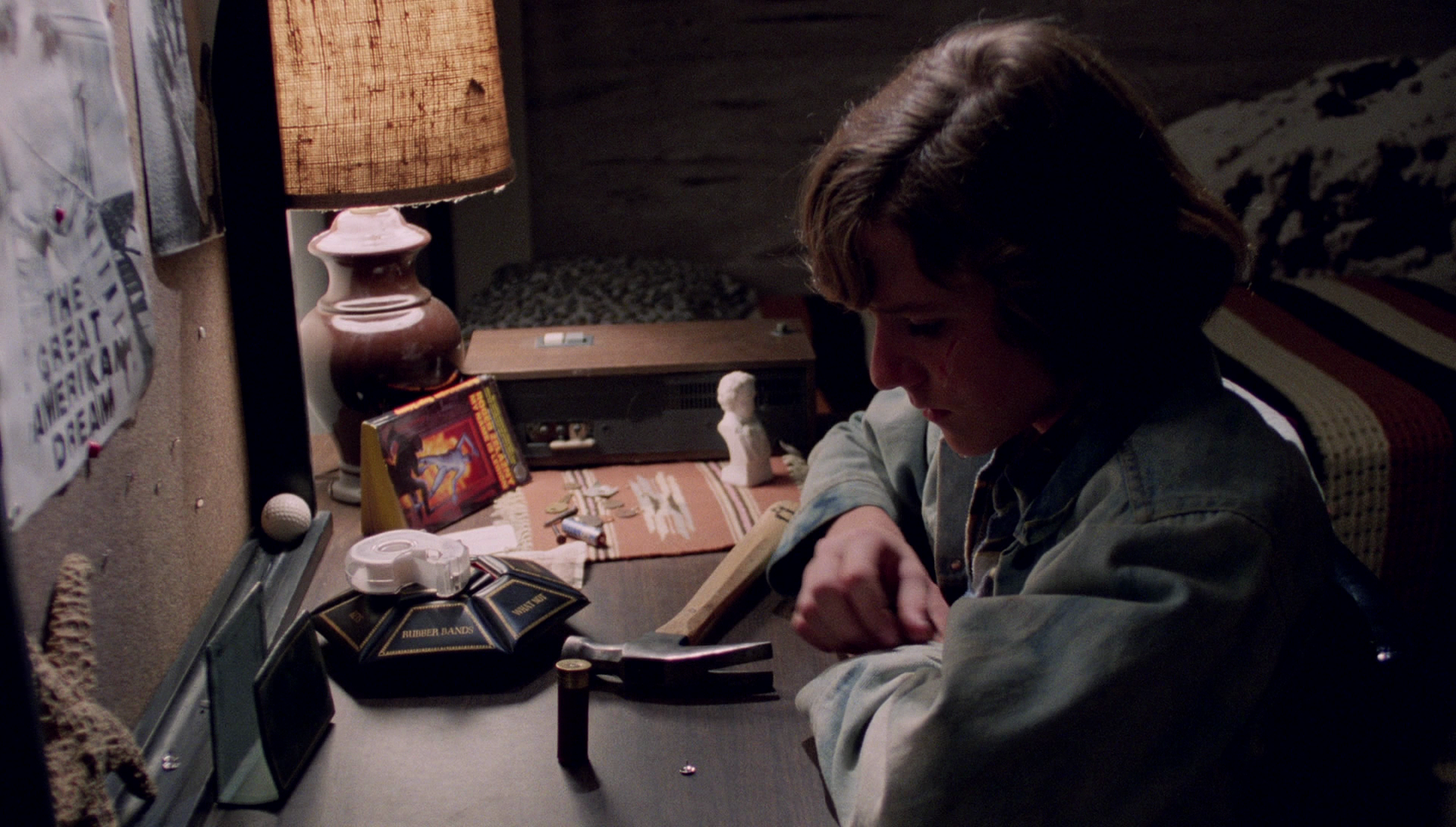 Phantasm Phantasm
- Optional introduction by Angus Scrimm (2:25). Scrimm introduces the film; this is the same introduction that has been seen on some of the film’s previous home video releases. - Audio commentary with Don Coscarelli, A Michael Baldwin, Angus Scrimm and Thornbury. In warm spirits throughout, the participants reflect on the making of the film and discuss their responses to the following Phantasm has received in the years since its initial release. This is the same audio commentary that appeared on the film’s DVD release from Anchor Bay in 2005. - LA Premiere Audience Track. This is a recording of the audience for the LA premiere of the remastered Phantasm in late 2016. The audience cheer, laugh and clap along with the film; it’s certainly not a Rocky Horror Show-style audience participation track. - ‘Reflections of Fear: Realising Phantasm’ (27:22). This new featurette sees Don Coscarelli, A Michael Baldwin, Reggie Bannister, Kathy Lester. Coscarelli reflects on the origins of what became Phantasm and the writing of the film. The participants discuss Angus Scrimm’s performance, Coscarelli admitting that the origins of the Tall Man came from Scrimm’s intimidating persona. - ‘The Phantasm: Remastered Premiere’ - -- Los Angeles Premiere Experience (1:17). Footage from the premiere of the remastered version of Phantasm, shown in LA in late 2016; this footage segues into the main feature, accompanied by the LA Premiere Audience Track. - -- Los Angeles Premiere Q&A (32:13). Don Coscarelli, A Michael Baldwin, Kathy Lester and Reggie Bannister join the audience for the 2016 premiere of the remastered Phantasm for a question-and-answer session. - -- Austin Premiere Q&A (32:00). This is a similar question-and-answer session, recorded at Fantastic Fest in 2016, featuring Coscarelli, Bannister, Bill Thornbury, Baldwin and Kathy Lester. - ‘Phantasm: Actors Having a Ball’ (4:43). In an older piece, Kathy Lester, A Michael Baldwin and Bill Thornbury reflect on the making of the film. - Angus Scrimm and Don Coscarelli Interview (28:06). This vintage interview from 1979, the year of the film’s release, and recorded for television broadcast finds Coscarelli and Angus Scrimm talking about Phantasm. - Behind-the Scenes (20:03). ‘Home movie’ footage from the production of the film is accompanied by an audio commentary from Coscarelli and Reggie Bannister. - Deleted Scenes (with ‘Play All’ option) -- Bank Scene (1:12) -- Casket Room (1:42) -- Ice Cream and Lead Up (4:28) -- Jody Visits Mike in Bed (0:56) -- Tall Man Fire-Extinguisher (1:35) -- Tall Man Smile (0:14) - Promo Gallery -- Trailer (2:13) -- 5 TV Spots (3:20) -- 5 Radio Spots (2:34) -- Australian TV Promo (3:45) DISC TWO: 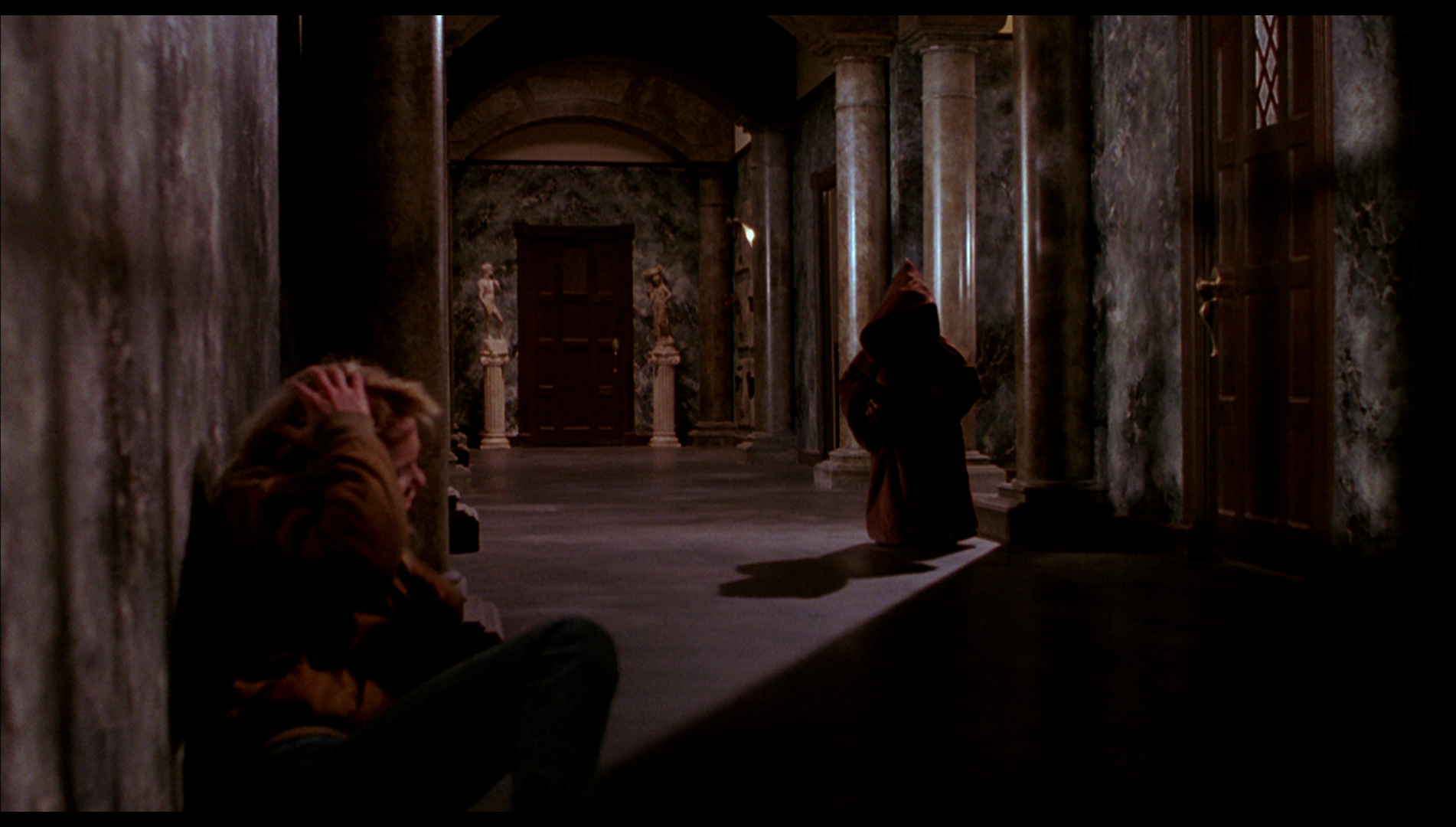 Phantasm II Phantasm II
- Audio Commentary with Don Coscarelli, Angus Scrimm and Reggie Bannister. This is the same audio commentary that was used on Anchor Bay’s 2005 DVD release of the film. Again, as with the commentary for the first film, this is a warm, light-hearted affair that is packed with anecdotes about the production; it opens with Scrimm jokily in character as the Tall Man. The participants reflect on the film’s photography and the effects by Kurtzman and Nicotero, who were referred to Coscarelli by Sam Raimi following their work on Evil Dead 2. - ‘Reflections of Fear: Phantasm II’ (19:35). In this new featurette, Coscarelli, Bannister, Baldwin, David Hartman, makeup effects practitioner Mark Shostrom,. Coscarelli suggests that ‘there wasn’t a precedent for doing sequels’ during the 1970s and saw the original film as ‘a standalone’. He wanted to ‘do a sequel […] a minute after the first one ended’. They talk about the replacement of Baldwin in the cast with James Le Gros, and reflect on the manner in which the film foregrounds the ‘gravers’. Reggie’s unique shotgun is also discussed, with Hartman saying this and the ‘Cuda were two elements that he had to use in Phantasm V. Interestingly, Shostrom suggests that some of the effects were inspired by a viewing of the ‘bog bodies’ at the British Museum. - ‘The Ball is Back!: The Making of Phantasm II’ (46:38). In this 2013 featurette, Scrimm, Bannister, Coscarelli, Paula Irvine, Kenneth Tigar and others involved in the production talk about the film. Bannister calls the picture a ‘stream of consciousness kind of film’, and Coscarelli refers to the picture as ‘a rumination of death’ and what happens after it. - ‘Greg Nicotero: The Gory Days’ (22:01). Made in 2005, this featurette sees Greg Nicotero discussing his work on Phantasm II. Nicotero’s comments are interspersed with some great behind-the-scenes footage showing the realisation of the film’s visual effects. - Deleted Scenes (with ‘Play All’ option) -- On the Slab (0:38) -- Kill the Fucker (1:34) -- Bad Dreams (1:08) -- Girl Talk (0:49) -- Enough Hearses to Bury an Army (0:46) -- Cut and Run (0:55) -- Hotel… Motel… Holiday Inn (0:34) - Workprint Scenes (with ‘Play All’ option) -- House Call (3:55) -- Dammit Grandma (0:30) -- Anyone Home? (2:18) -- Graveyard Disturbance (0:48) -- Bored to Death (0:46) -- Crystal Balls (0:36) -- Safe Sex (1:41) -- Hair Today (0:21) -- The Taste of Blood (1:47) -- A Sticky End (1:59) -- Tall Man Smile II (1:32) -- The End? (1:33) - Behind the Scenes Footage: -- Makeup & Effects (9:12). Some utterly fascinating footage of the makeup effects being realised, shot on videotape, is included. -- On the Set (9:08). Again shot on videotape, this footage offers the viewer a glimpse into the production of the film. - Angus Scrimm at the 1989 Fangoria Convention (9:59). In front of a live audience, Scrimm slips in and out of character as the Tall Man. - 1988 Fangoria Commercial with Angus Scrimm (0:48). This witty advert for Fangoria magazine features Scrimm as the Tall Man showing the viewer around Morningside Funeral Home. - Trailers & TV Spots -- Trailer (1:27) -- 3 TV Spots (1:30) - Stills Gallery (Courtesy of Mark Shostrom) (40 images) DISC THREE: 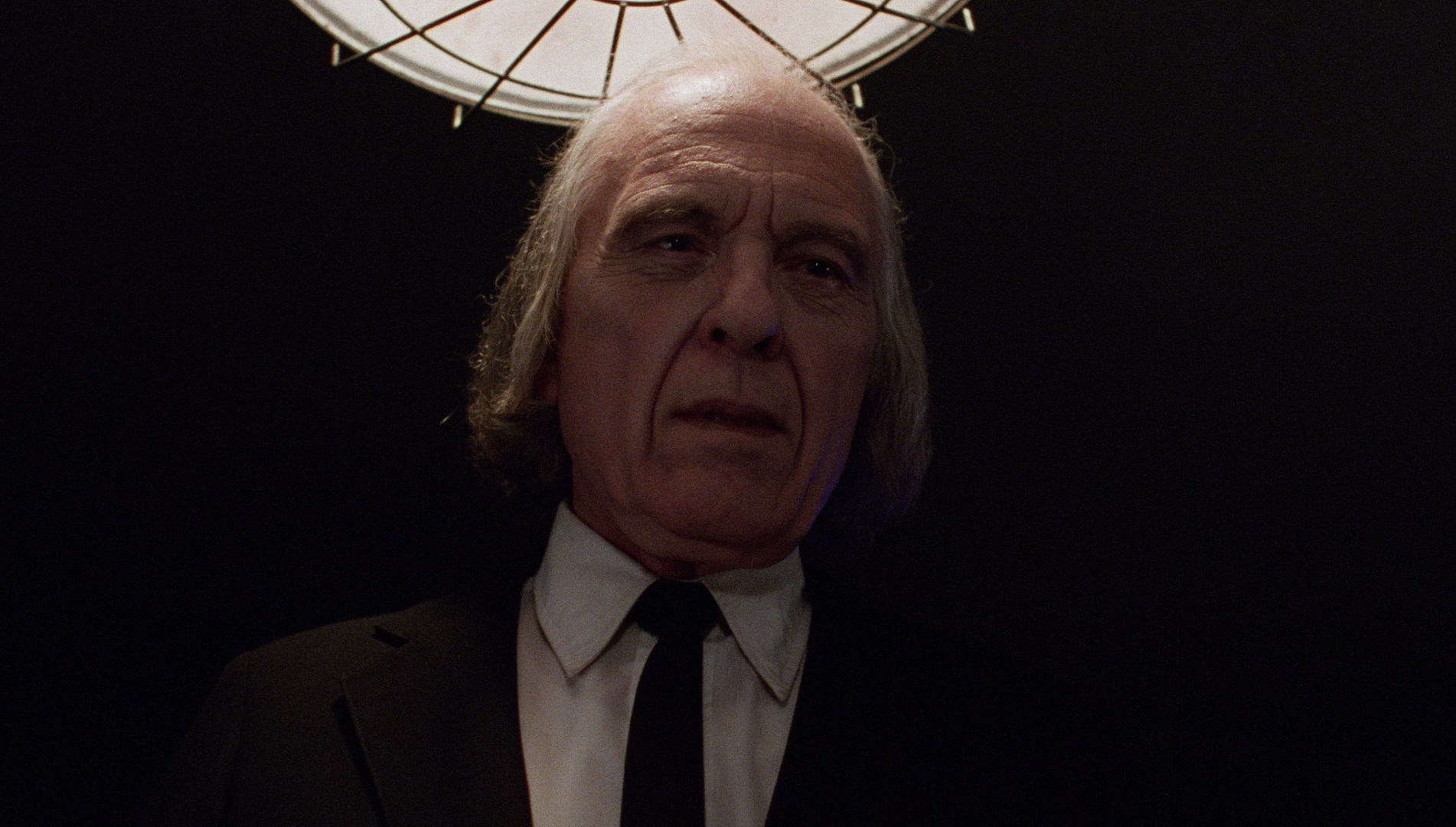 Phantasm III: Lord of the Dead Phantasm III: Lord of the Dead
- Audio Commentary with A. Michael Baldwin and Angus Scrimm. In this commentary, again previously found on Anchor Bay’s 2005 DVD release of the film, Scrimm and Baldwin talk about the third film in the series. Their recollections of the production are strong, but this track isn’t quite as enthusiastic as the commentaries for Phantasm and Phantasm II. - ‘Reflections of Fear: Phantasm III’ (23:13). Another new featurette sees Mark Shostrom and Dean Gates talking about the film’s effects. David Hartman comments on the ways in which the third film extends the themes of the series, and A Michael Baldwin appears too; but the featurette focuses heavily on the film’s visual effects. - ‘Phantasm III: Where the Dead are No Longer That Way’ (with optional audio commentary by Mark Shostrom and Dean Gates) (8:56). Videotaped footage of the film’s production is presented with the option of watching it with a commentary by effects practitioners Shostrom and Gates. - Deleted Scene (0:13) - Trailer (1:22) - Stills Gallery (60 images) DISC FOUR: 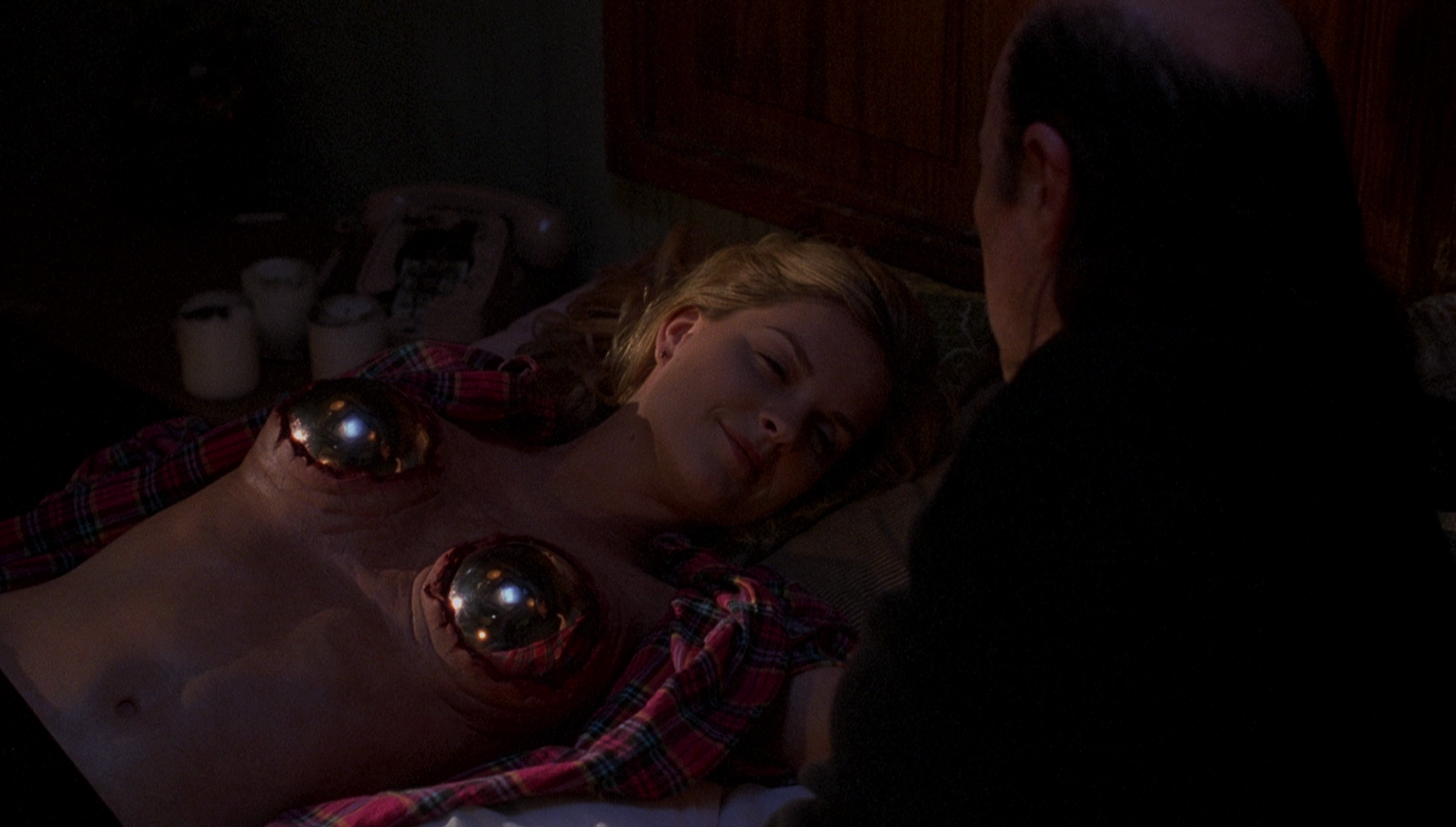 Phantasm IV: Oblivion Phantasm IV: Oblivion
- Audio Commentary with Don Coscarelli, Reggie Bannister and Angus Scrimm. Another commentary which was used on Anchor Bay’s 2005 DVD release of the first four films in the series, this track. The participants talk about the filming locations. They also reflect on the ways in which this film develops the character of Reggie. Perhaps thanks to the presence of Coscarelli and Bannister, this is a livelier commentary track than the one recorded for Phantasm III. - ‘Reflections of Fear: Phantasm IV’ (17:44). A new featurette sees Baldwin, Shostrom, Gates, Hartman and Coscarelli reflecting on the making of Phantasm IV. They discuss the film’s low budget and how the filmmakers tried to work around this by using unused footage from the shooting of Phantasm. Coscarelli talks at length about the passing of Angus Scrimm. - ‘Behind-The-Scenes’ (9:10). This footage, compiled for use in the film’s 2005 DVD release, intercuts behind the scenes footage (shot on videotape) with footage from the completed film. - Trailer (1:41) - Promo (1:33) - Stills Gallery (26 images) DISC FIVE: 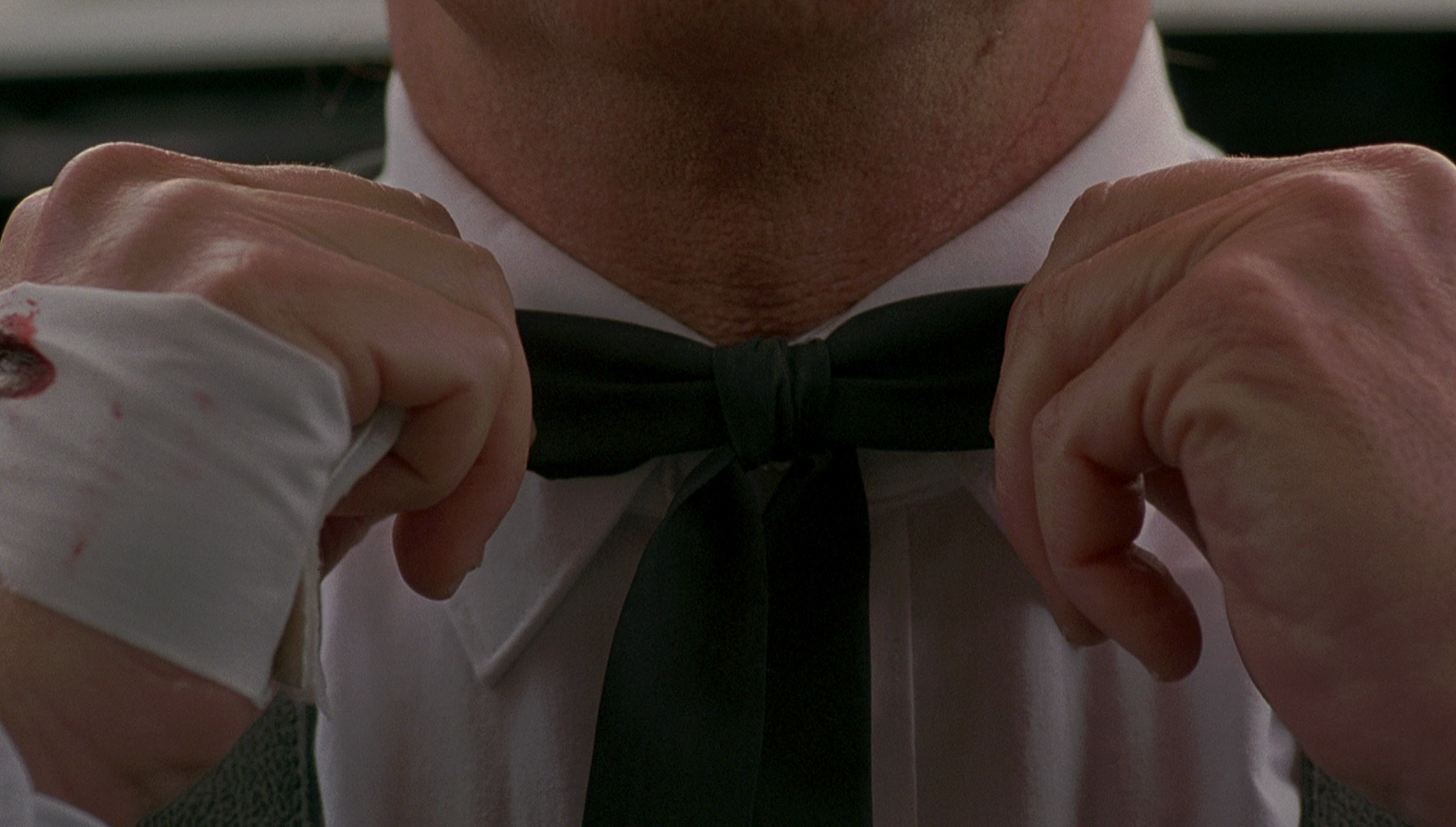 Phantasm V: Ravager Phantasm V: Ravager
- Audio Commentary with Don Coscarelli and David Hartman. Coscarelli begins by asserting that ‘it’s wonderful to be crossing the final finish line’ in terms of the making of Ravager. Coscarelli suggests that this film was ‘done on a very modest basis’ and was ‘a fun family affair over a number of years’, and was in this sense a return to similar methods used to make the first Phantasm. The pair discuss the extended gestation process of Ravager and the production of the film. Their memories are fresh, and the commentary track is lively and informative. - LA Premiere Audience Track. As with the audience track on the first disc of this set, this is a recording of the audience for the LA premiere Ravager. The audience whoop, laugh and applaud in all the right places (Reggie’s line ‘Get the fuck out of my car’ and the subsequent comeuppance visited upon the man who stole Reggie’s ‘Cuda get some of the biggest applause). - Introduction by Director David Hartman (0:25). Hartman gives a brief introduction, interrupted by one of those pesky spheres. - ‘Phantasm and You’ introduction by Director David Hartman (3:29). In the style of a 1950s public information film, Hartman provides a handy recapitulation of the key narrative events in the first four films. - ‘Reflections of Fear: Phantasm V’ (34:34). David Hartman, A Michael Baldwin and Reggie Bannister discuss this fifth film in the series. Baldwin refers to the first film as ‘a fever dream about a kid’ and suggests that the films have become more ‘adult’ in their themes as the series has progressed. Hartman talks about the theme of dementia within the film and praises Bannister’s willingness to peform his own stunts. - The Phantasm: Ravager Premieres: -- Los Angeles Premiere Introduction (1:14). Via time-lapse, the audience for the film’s LA premiere are shown taking their seats before the film begins. -- Austin, Texas Premiere Q&A (37:23). At 2016’s FantasticFest, Coscarelli, Hartman, Bannister, Baldwin, Lester, Thornbury and other members of Ravager’s cast field questions from the audience about the series and, particularly, Ravager. - Behind the Scenes (10:13). This is a montage of material relating to the film’s production, including extracts from the script, storyboard, on-set photographs, material shot on location and visual effects tests. - Deleted Scenes (with optional commentary by Don Coscarelli and David Hartman) -- Reg vs the Giant Dwarf (3:43) -- Escape from Dawn's Cabin (2:20) -- Cuda vs Sphere (1:38) - ‘Phuntasm’: Bloopers & Outtakes (8:36) - Trailers -- Trailer (1:46) -- Teaser (1:02) DISC SIX: -  ‘Phantasmagoria’ (97:41). This documentary, previously included on Anchor Bay’s 2005 DVD release of the first four films, features reflections on the making of Phantasm I-IV by Coscarelli, Bannister, Baldwin, Scrimm, Thornbury and numerous other members of the cast and crew of these productions. It’s an indepth examination of the series that explores its origins and its fusion of horror and SF/fantasy elements, also reflecting on the enduring appeal of the Phantasm mythos. ‘Phantasmagoria’ (97:41). This documentary, previously included on Anchor Bay’s 2005 DVD release of the first four films, features reflections on the making of Phantasm I-IV by Coscarelli, Bannister, Baldwin, Scrimm, Thornbury and numerous other members of the cast and crew of these productions. It’s an indepth examination of the series that explores its origins and its fusion of horror and SF/fantasy elements, also reflecting on the enduring appeal of the Phantasm mythos.
- ‘Phantasmagorical Mystery Tour’ (16:11). In this piece, also included on Anchor Bay’s 2005 DVD set, Reggie Bannister explores the locations used in the first film. - ‘Tall Tales’ (24:51). This is footage shot for inclusion in the ‘Phantasmagoria’ documentary but omitted from the final cut, newly-edited and assembled for inclusion in this release. It features Angus Scrimm interviewed at length about his relationship with the series. - ‘Dear Angus’ (20:49). A new piece by Kristen Deem, who worked as a script supervisor and production assistant on Phantasm II-IV, ‘Dear Angus’ is a highly-personal and touching tribute to Angus Scrimm. - ‘Phantasm Genesis’ (21:21). The stunts of the first four films are examined in this featurette, which features ample behind-the-scenes footage of the stunts being realised interspersed with interview footage of Coscarelli, Bannister and Baldwin. - ‘Phandom’ (18:40). Another featurette originally filmed for inclusion in the 2005 DVD release, ‘Phandom’ reflects on the enduring appeal of the series and its fans’ relationship with it. Coscarelli, Baldwin, Bannister, Thornbury, Kristen Deem and Scrimm are interviewed about their experiences with Phantasm’s fans.
Overall
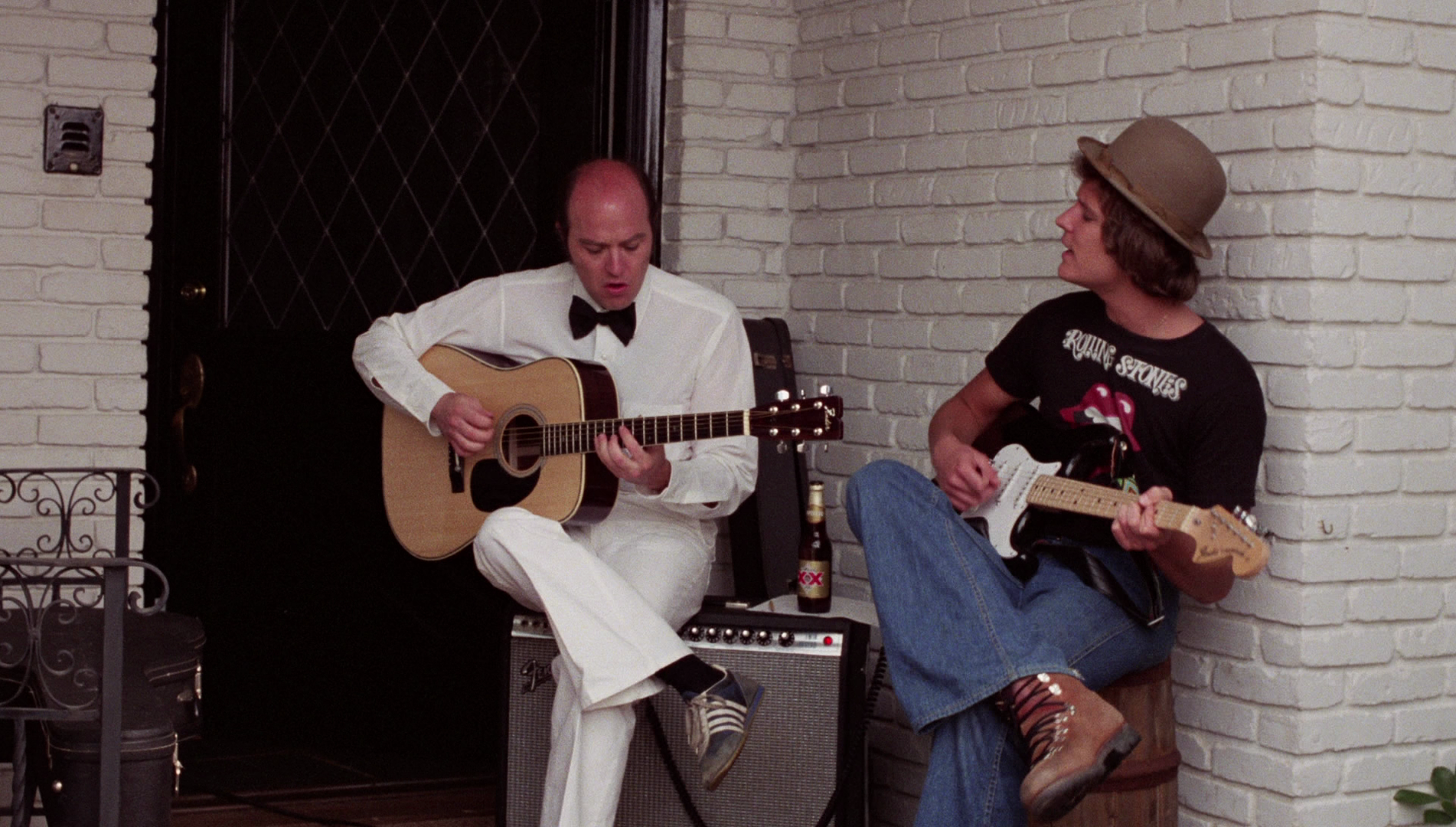 The basic premise of Phantasm has a Lovecraftian dimension, most obviously in the idea of a portal which opens a gateway to another dimension and the framing of the Tall Man as an unknowable evil of obscure origin. Like the Resonator in Lovecraft’s ‘From Beyond’ (adapted loosely for the screen by Stuart Gordon in 1986), the portals function through vibrations; the vibrations of these portals open a doorway into alternate dimensions. The original Phantasm is clearly the best of the films; Phantasm V has suffered some criticism, but in truth it’s an interesting picture – albeit the victim of its own ambitions. Its attempts to realise a post-apocalyptic world presided over by giant spheres which roam the skies and tear buildings asunder with their lasers are unconvincing, the digital effects complemented by some ugly digital photography which stands in stark contrast to the aesthetic of the previous pictures in the series. Nevertheless, despite these qualities, the fifth film takes the story of Reggie and Mike in an interesting direction, gaining poignancy via its willingness to confront the ageing process and the suggestion that Reggie may have constructed the whole series’ narrative as part of his struggles with dementia. The films need to be watched in sequence; whilst Phantasm II could perhaps be watched in isolation, Phantasm III, Phantasm IV and Phantasm V rely on the audience’s knowledge of the preceding films in the series. As the films progress, the narrative detail accumulates, and in this regard Phantasm V offers a fitting – though healthily ambiguous – resolution to the series. The basic premise of Phantasm has a Lovecraftian dimension, most obviously in the idea of a portal which opens a gateway to another dimension and the framing of the Tall Man as an unknowable evil of obscure origin. Like the Resonator in Lovecraft’s ‘From Beyond’ (adapted loosely for the screen by Stuart Gordon in 1986), the portals function through vibrations; the vibrations of these portals open a doorway into alternate dimensions. The original Phantasm is clearly the best of the films; Phantasm V has suffered some criticism, but in truth it’s an interesting picture – albeit the victim of its own ambitions. Its attempts to realise a post-apocalyptic world presided over by giant spheres which roam the skies and tear buildings asunder with their lasers are unconvincing, the digital effects complemented by some ugly digital photography which stands in stark contrast to the aesthetic of the previous pictures in the series. Nevertheless, despite these qualities, the fifth film takes the story of Reggie and Mike in an interesting direction, gaining poignancy via its willingness to confront the ageing process and the suggestion that Reggie may have constructed the whole series’ narrative as part of his struggles with dementia. The films need to be watched in sequence; whilst Phantasm II could perhaps be watched in isolation, Phantasm III, Phantasm IV and Phantasm V rely on the audience’s knowledge of the preceding films in the series. As the films progress, the narrative detail accumulates, and in this regard Phantasm V offers a fitting – though healthily ambiguous – resolution to the series.
Arguably, Phantasm II is to Phantasm as Evil Dead 2 is to The Evil Dead (or Aliens is to Alien): an energetic, action-oriented reimagining of the series’ premise. It’s an entertaining film, but James LeGros’ Mike is less vulnerable and less rounded than A Michael Baldwin’s performances as the same character. Phantasm III and Phantasm IV, whilst clearly struggling with budget limitations in their realisation of an increasingly desolate American landscape, extend the story of the first film in some fascinating directions, the Tall Man encircling Mike and Reggie like a hunter taunting his prey. 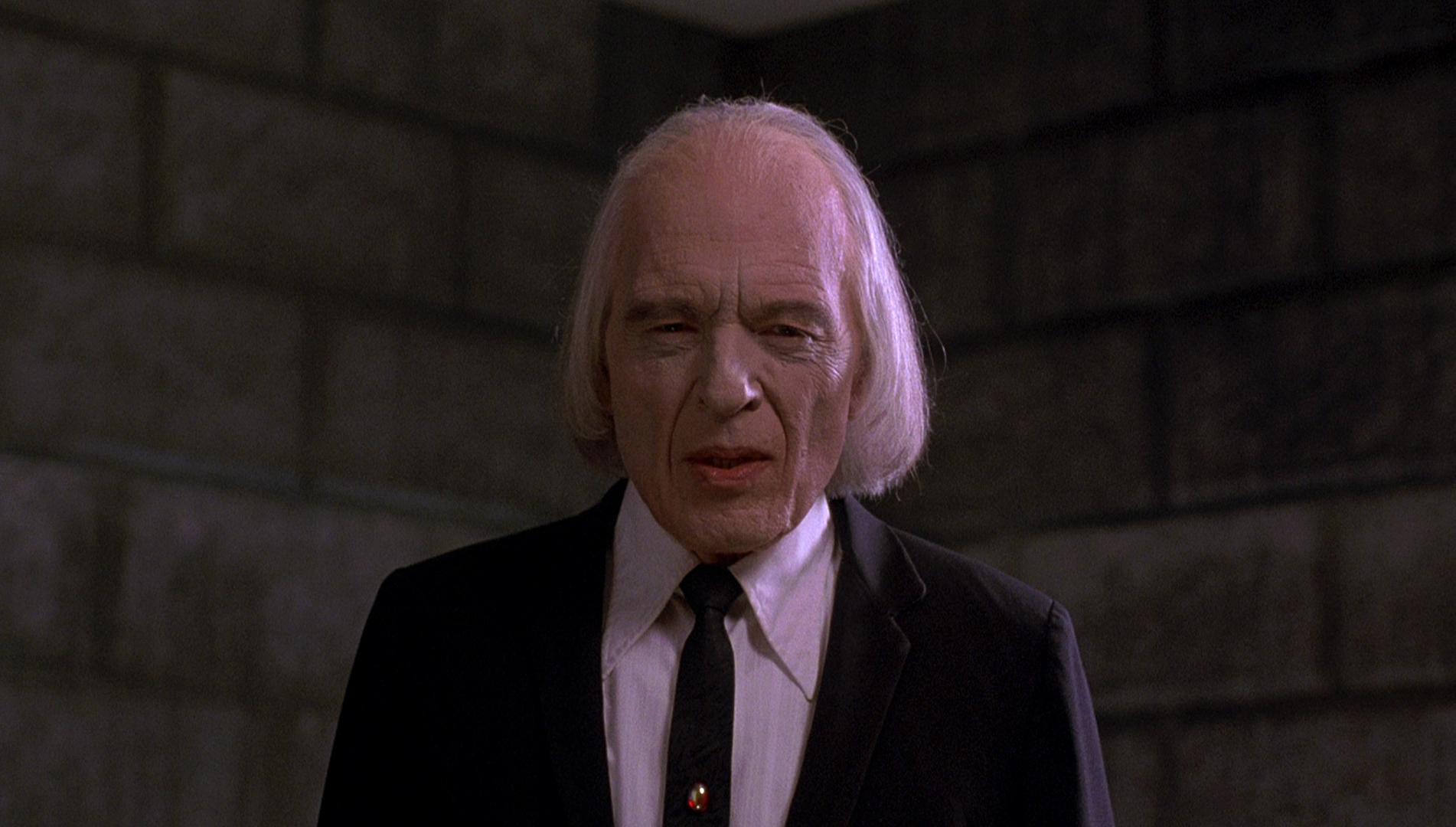 Arrow’s presentations of all five films is very impressive, particularly the 4k restoration of the first film, which is excellent. Phantasm V looks quite ugly, but that’s not an issue with this presentation – rather it’s an issue with the digital photography in that film and the realisation of the computer-generated effects; the presentation of the film on this Blu-ray release is unproblematic, true to the film’s aesthetic. The presentation of Phantasm II is pretty much identical to that specific film’s previous Blu-ray releases, with some noticeable noise reduction applied to the image, but it’s acceptable and certainly a big improvement over that film’s DVD releases. Phantasm III and Phantasm IV look very pleasing indeed. Arrow’s presentations of all five films is very impressive, particularly the 4k restoration of the first film, which is excellent. Phantasm V looks quite ugly, but that’s not an issue with this presentation – rather it’s an issue with the digital photography in that film and the realisation of the computer-generated effects; the presentation of the film on this Blu-ray release is unproblematic, true to the film’s aesthetic. The presentation of Phantasm II is pretty much identical to that specific film’s previous Blu-ray releases, with some noticeable noise reduction applied to the image, but it’s acceptable and certainly a big improvement over that film’s DVD releases. Phantasm III and Phantasm IV look very pleasing indeed.
The impressive presentations of the main feature are supported by an excellent range of contextual material, both old and new. It’s a cliché that’s all too easy to spout, but Arrow’s Blu-ray release of the Phantasm films is pretty much definitive and very much a worthwhile purchase for the films’ avowed fans. References: Baldassare, Angela, 1999: The Great Dictators: Interviews with Filmmakers of Italian Descent. Lancaster: Guernica McCarty, Michael, 2005: More Giants of the Genre. Wildside Press Newman, Kim, 2011: Nightmare Movies: Horror on Screen Since the 1960s. London: Bloomsbury (Revised Edition) Phantasm 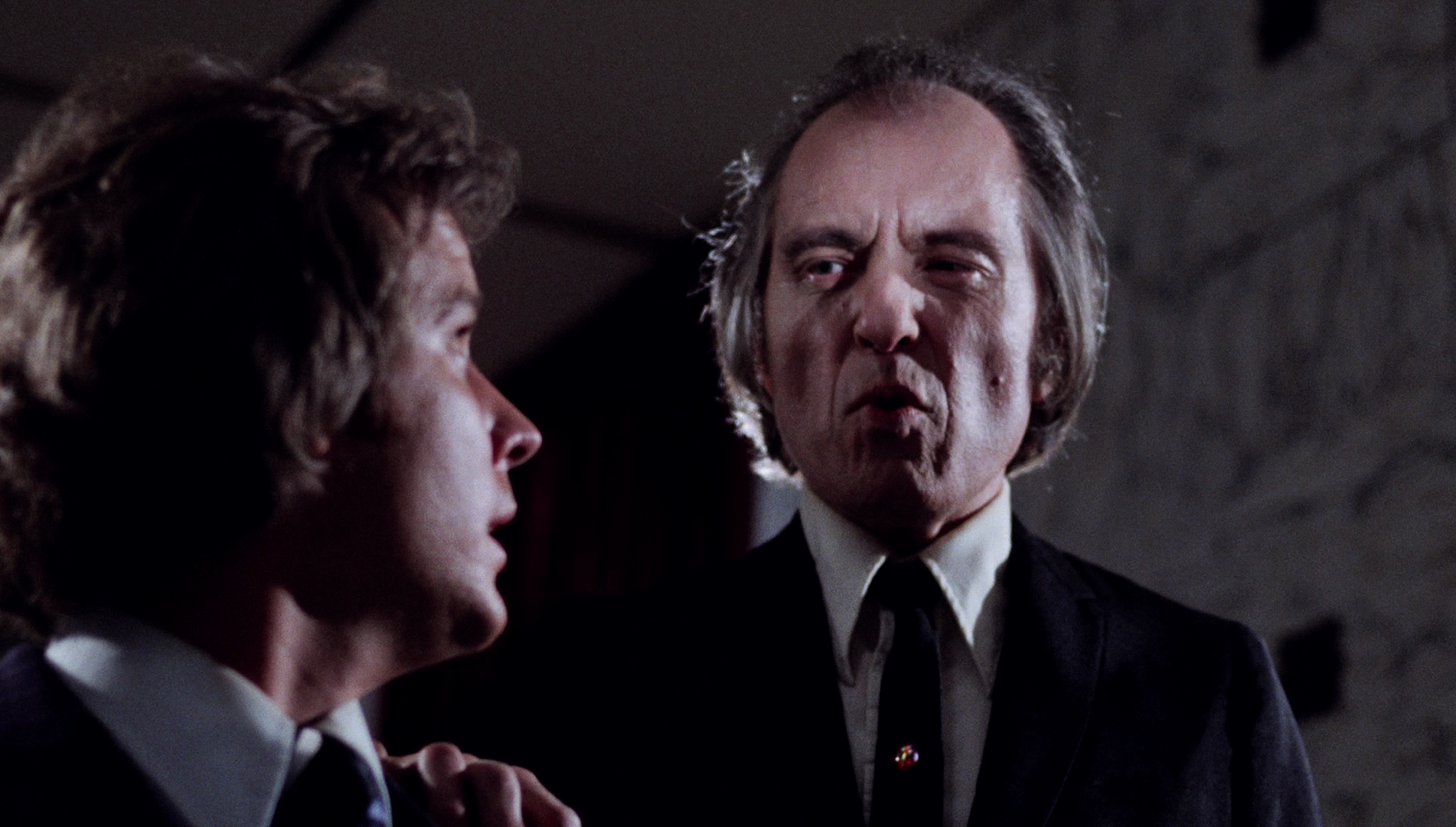
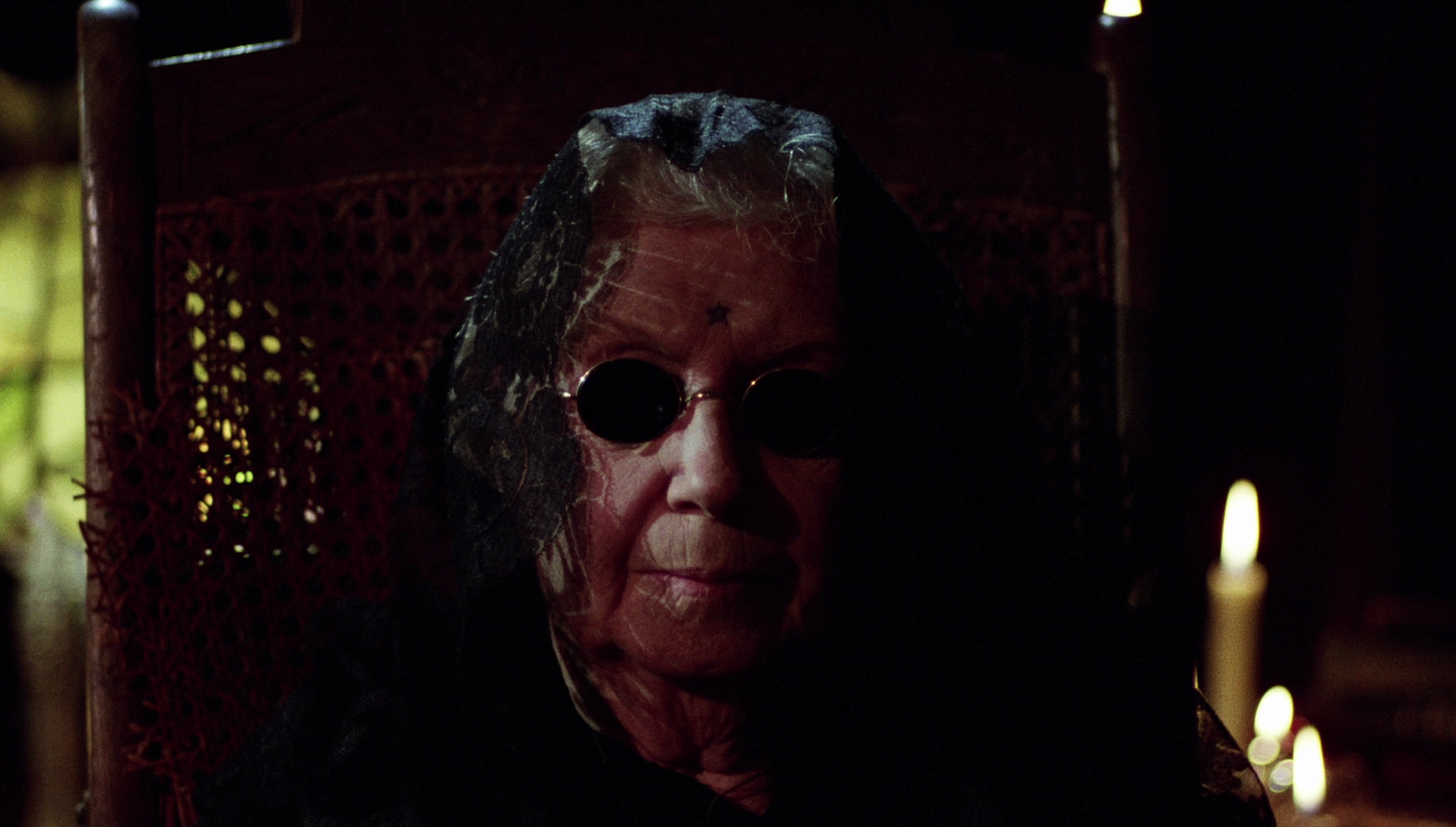

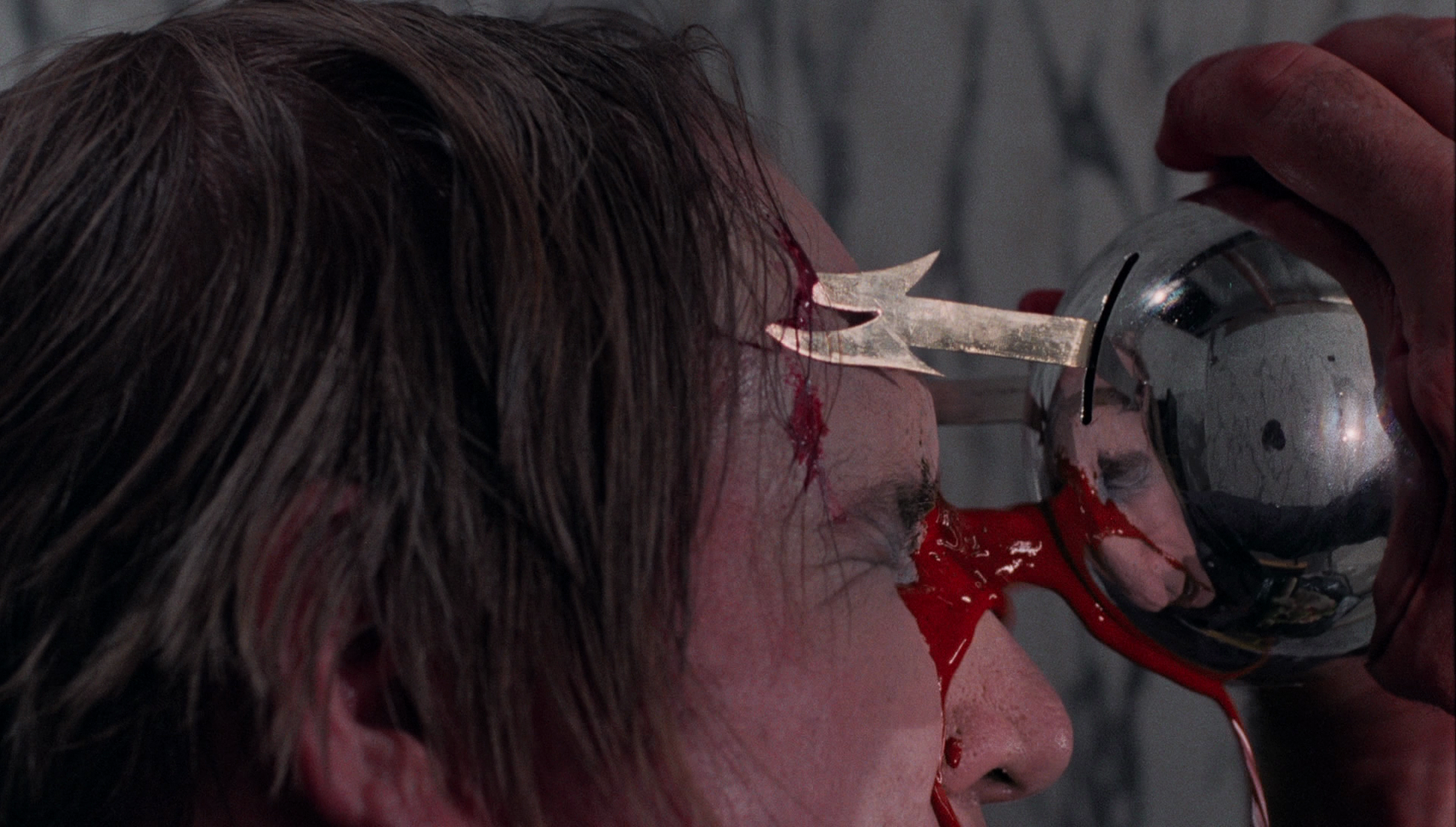
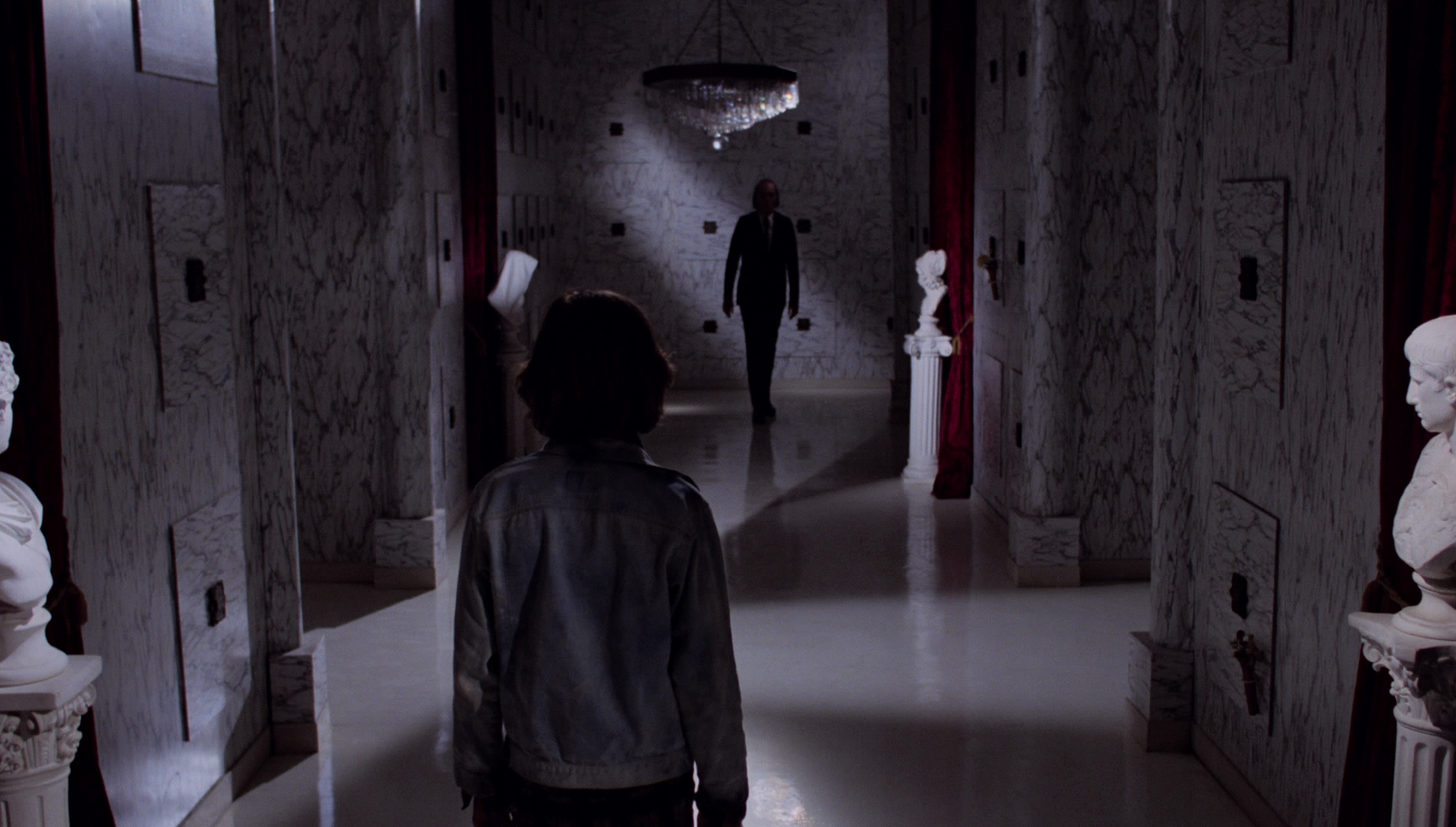
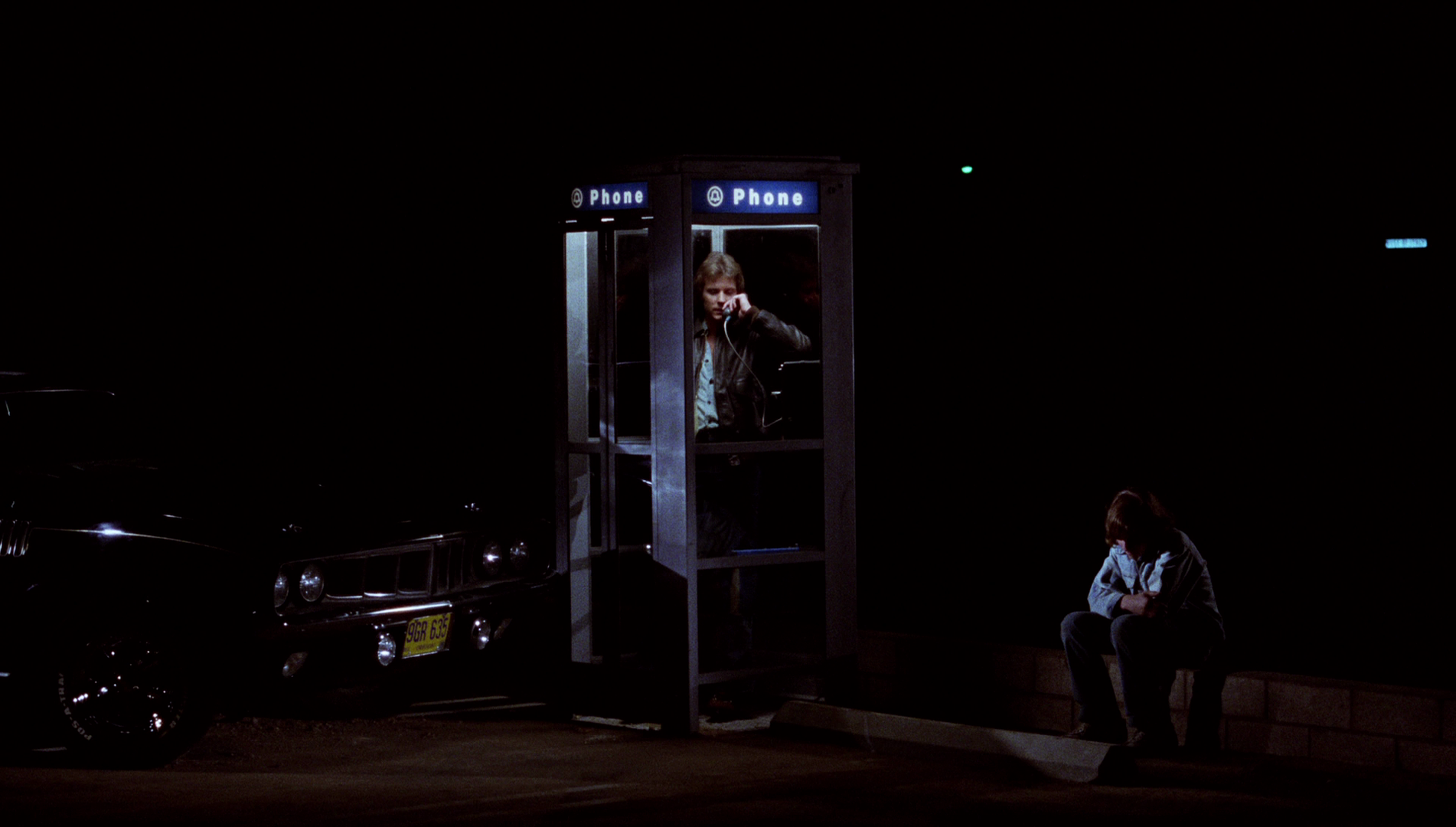
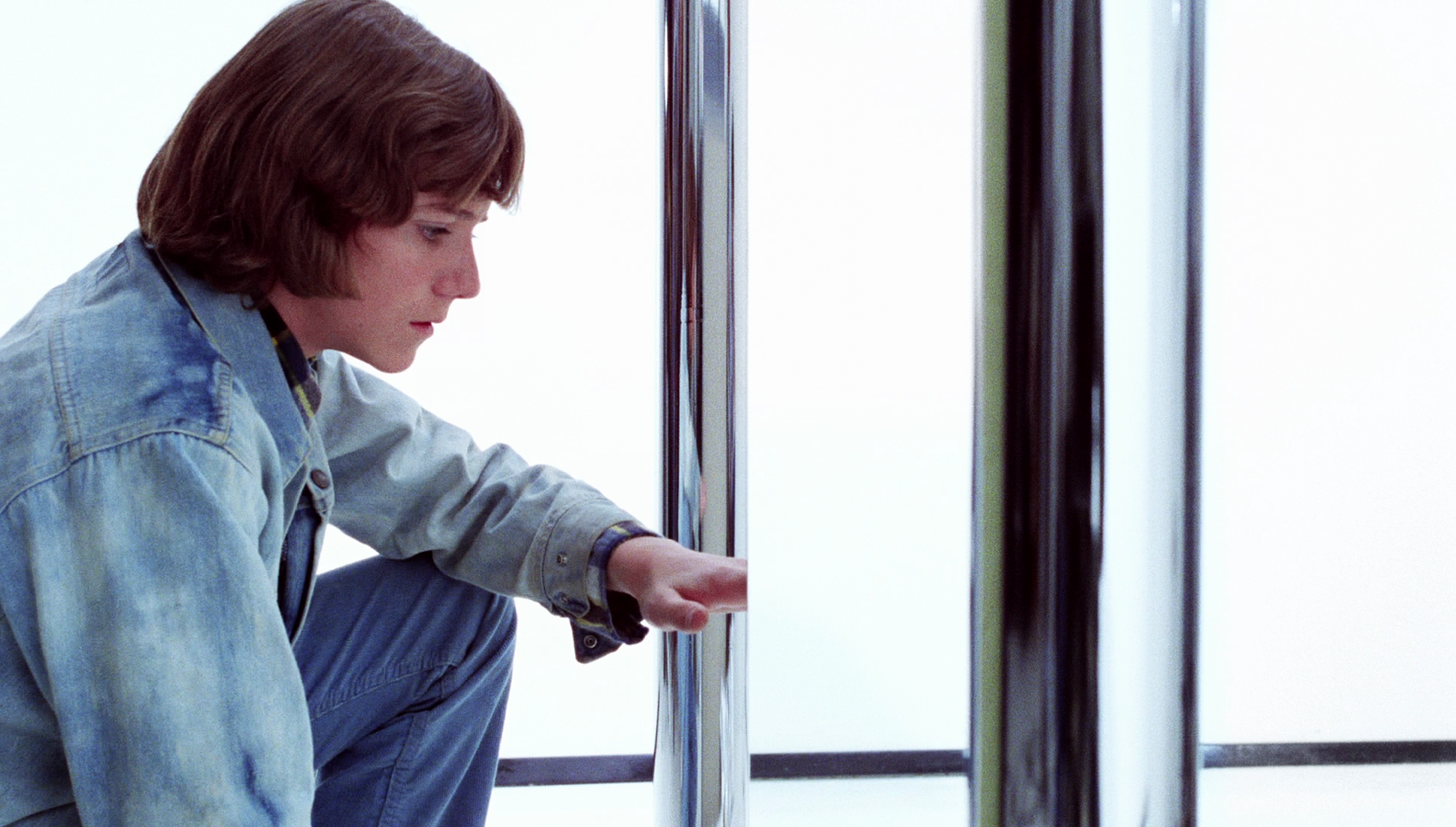
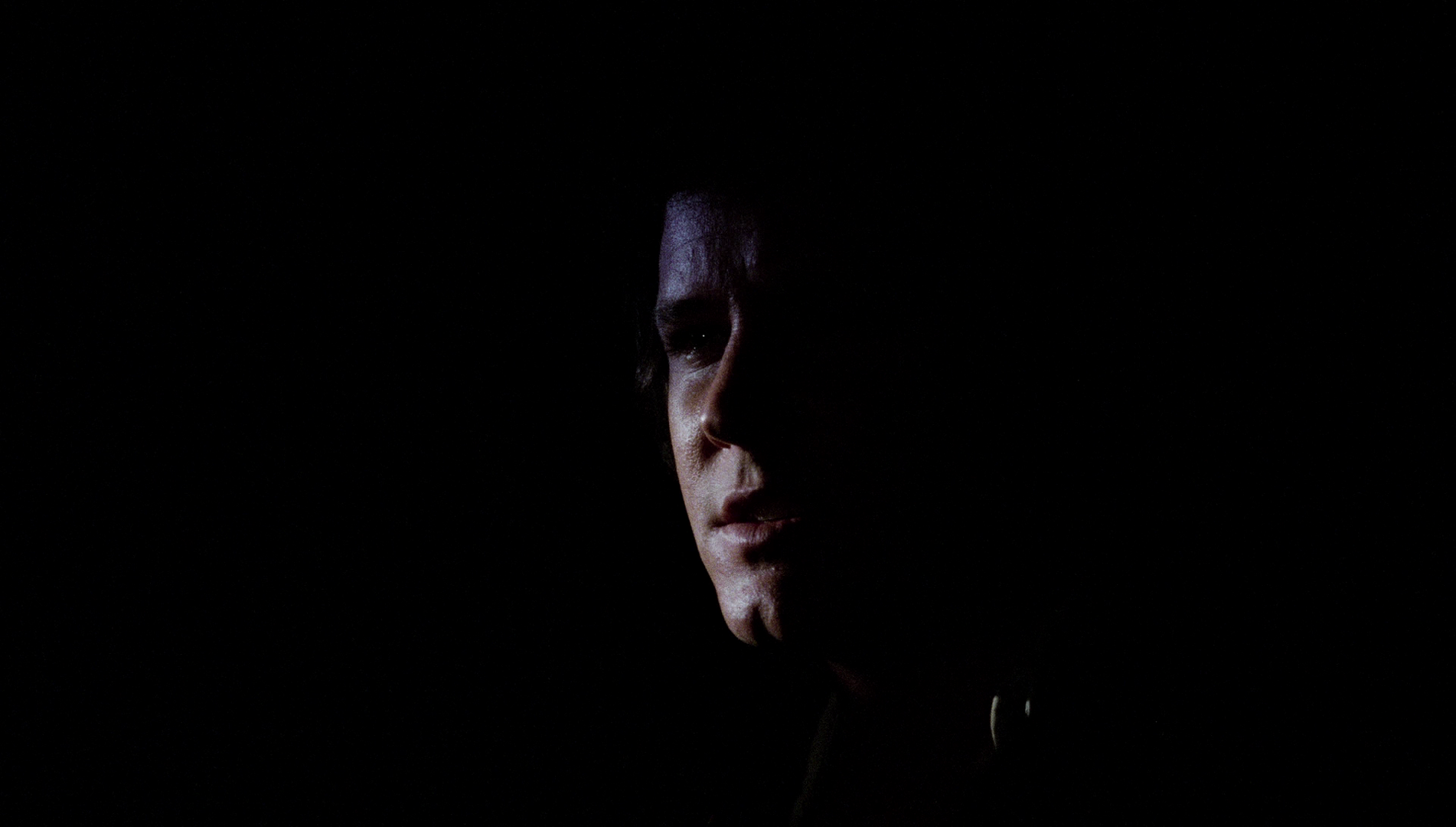
Phantasm II 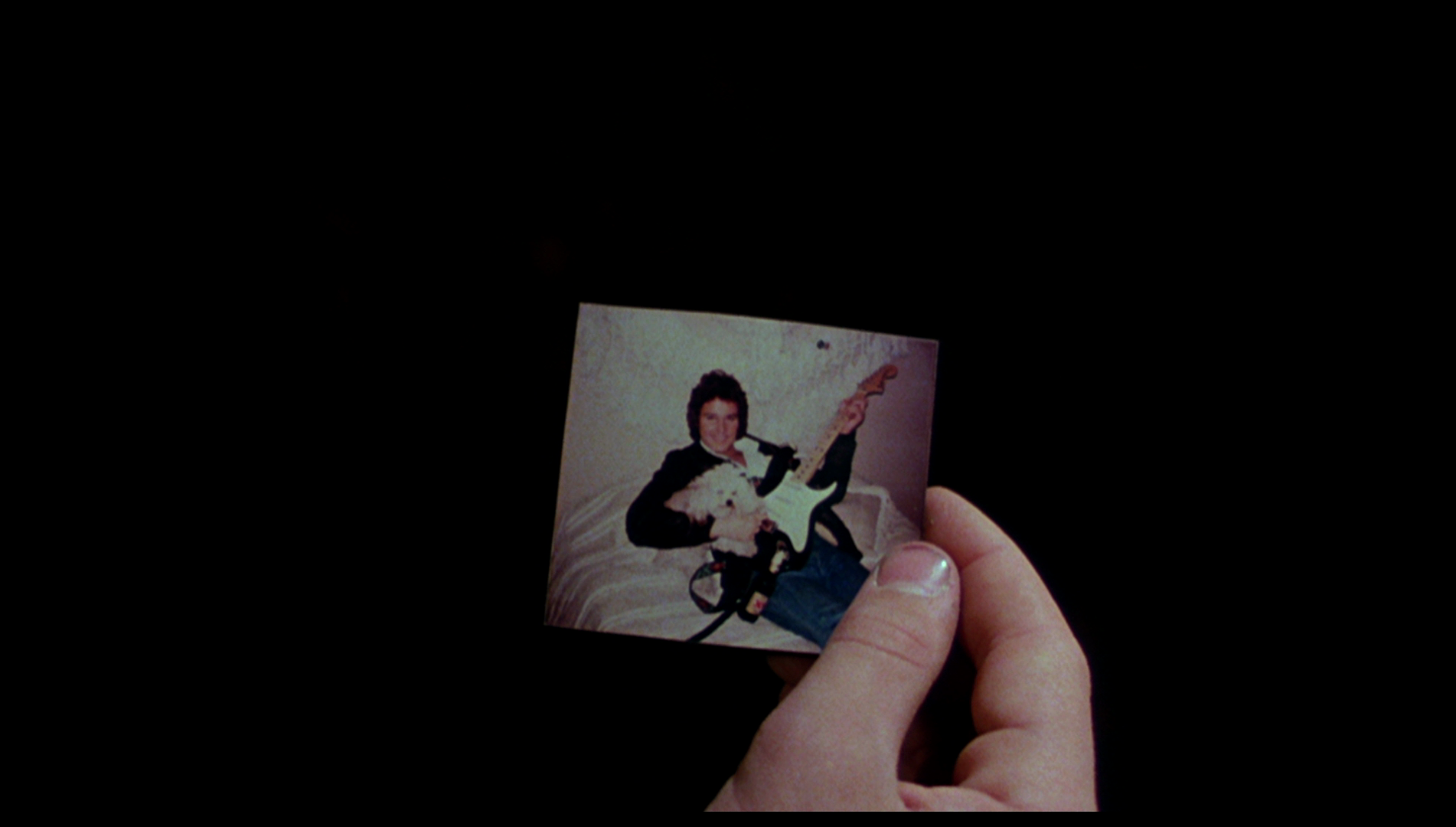

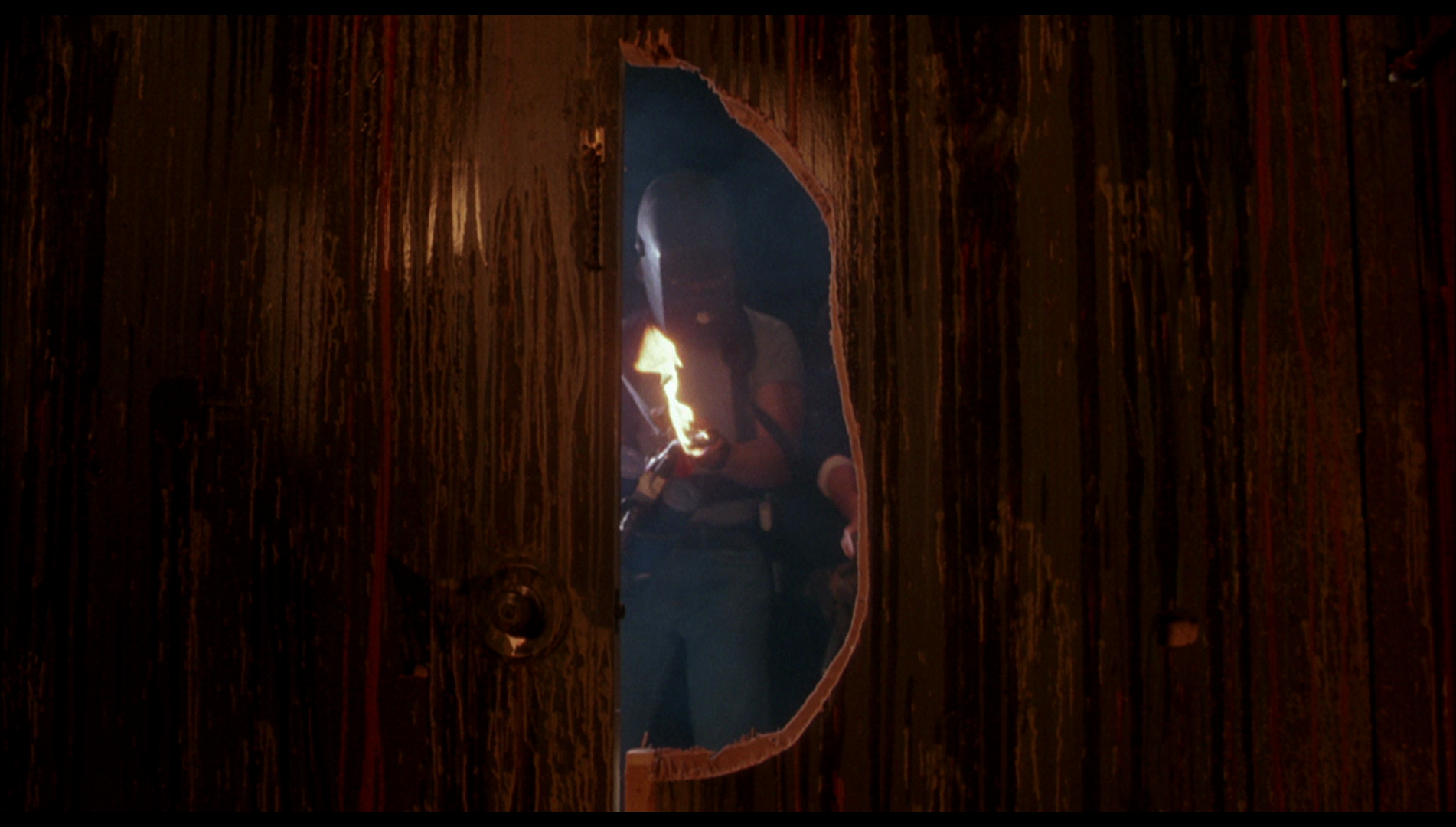
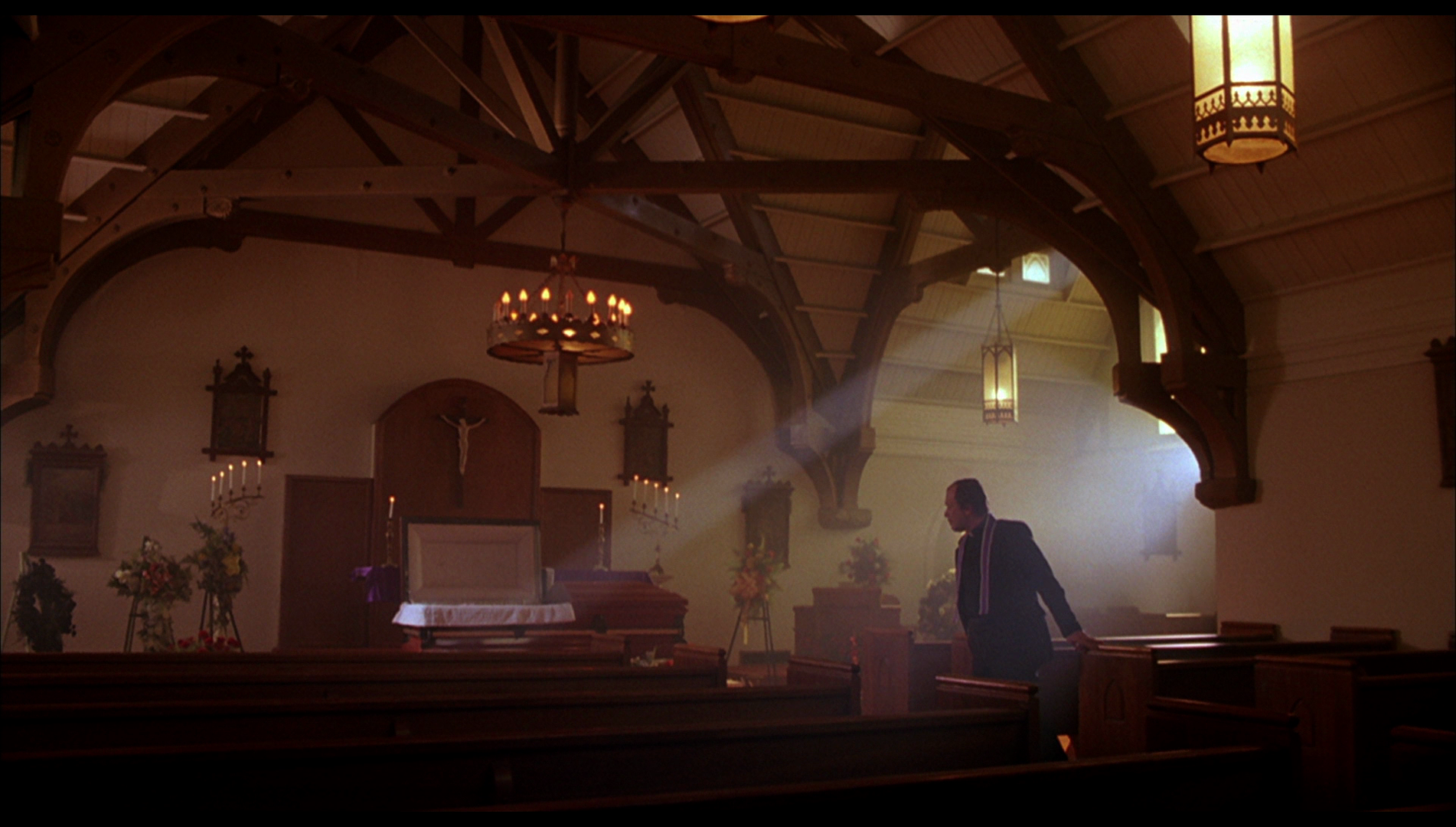
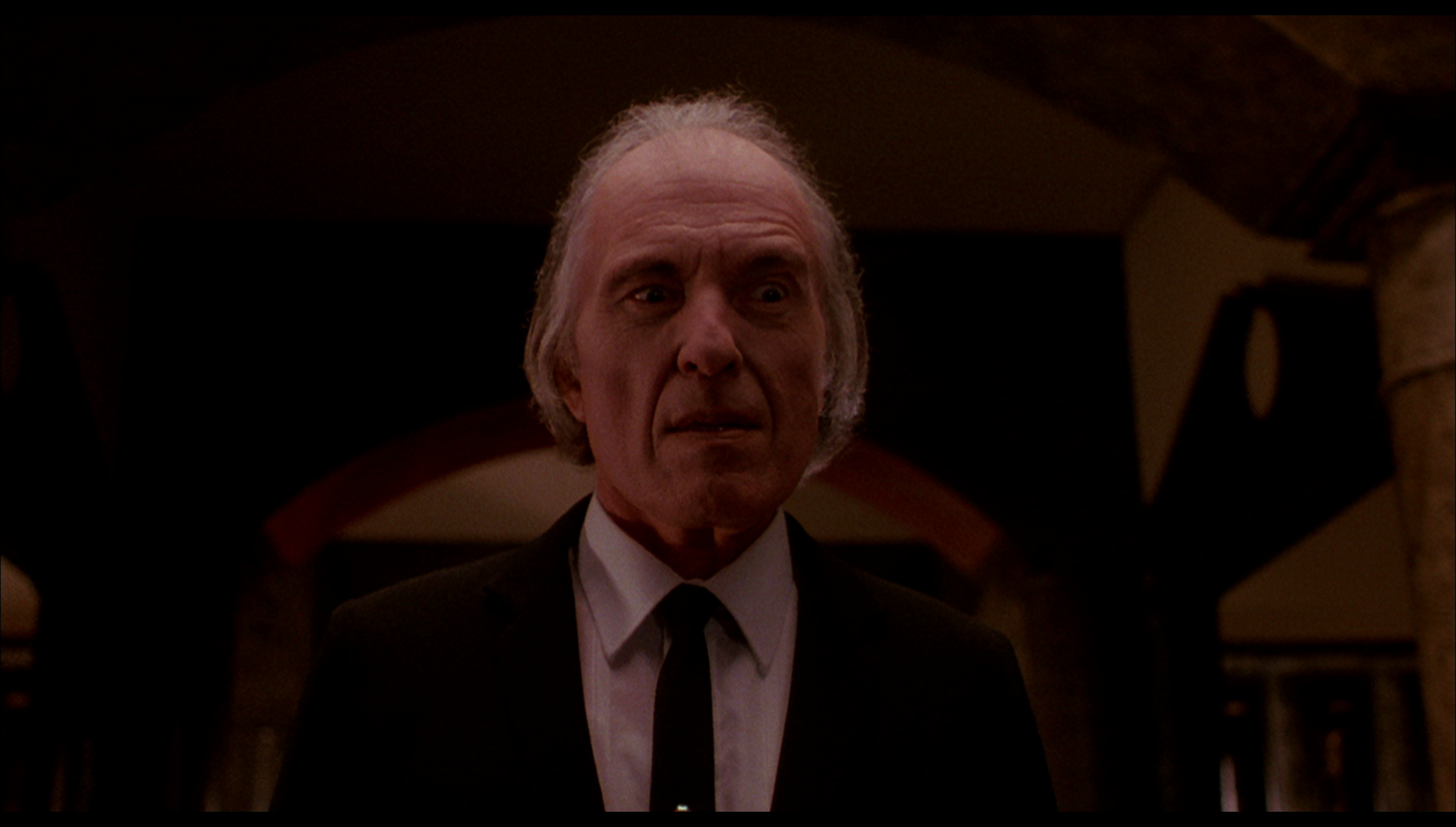
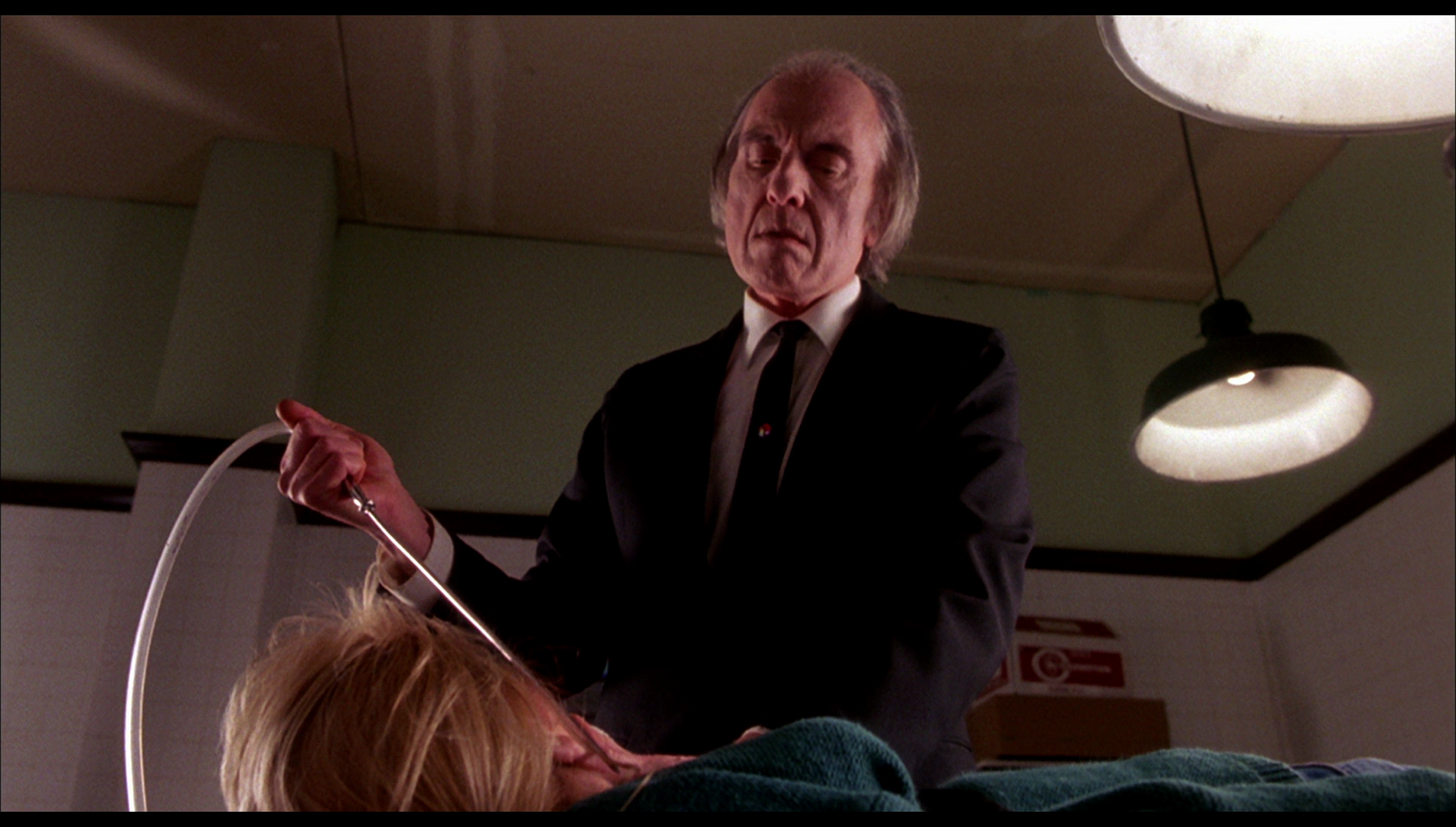
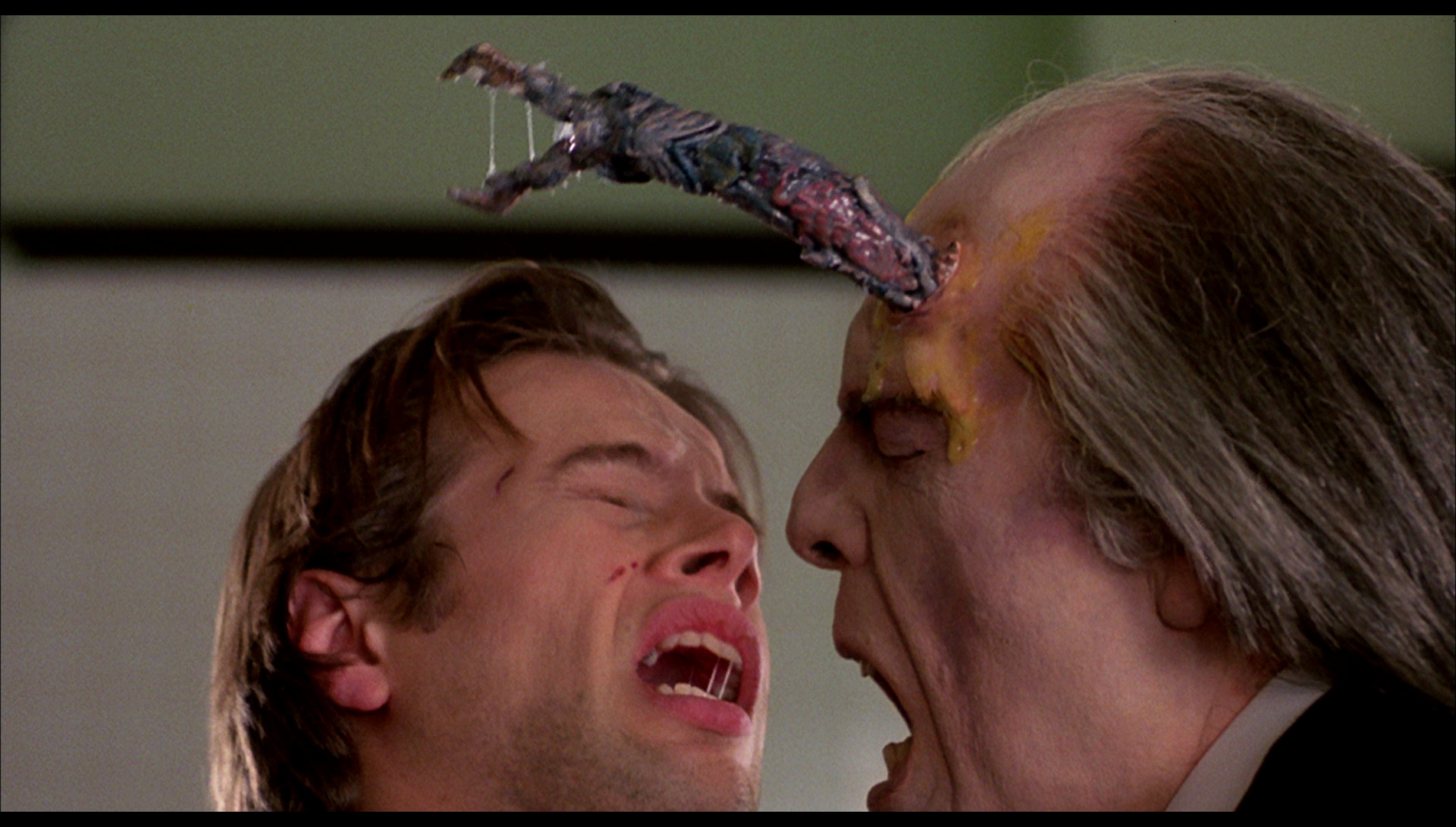
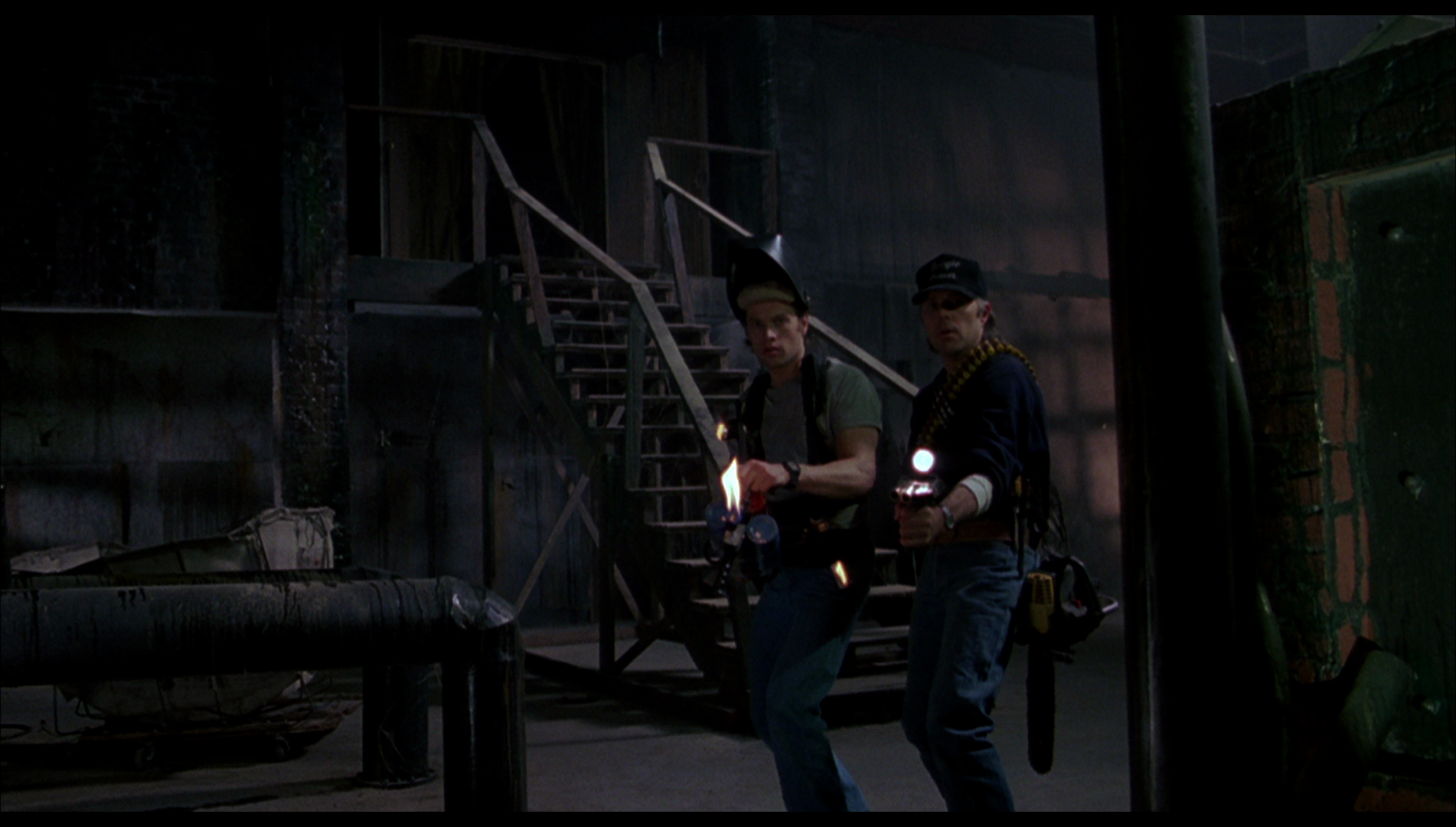
Phantasm III: Lord of the Dead 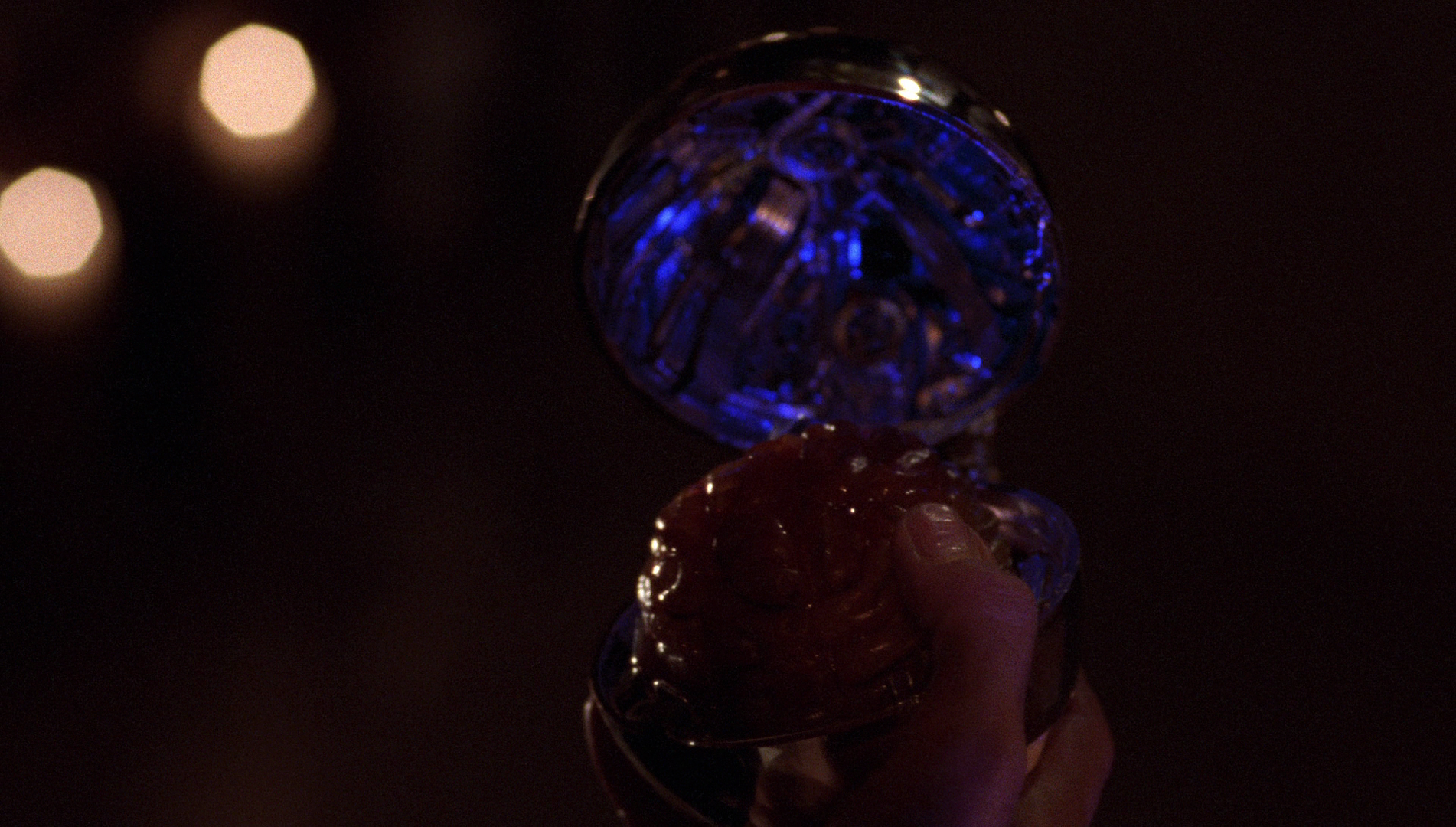

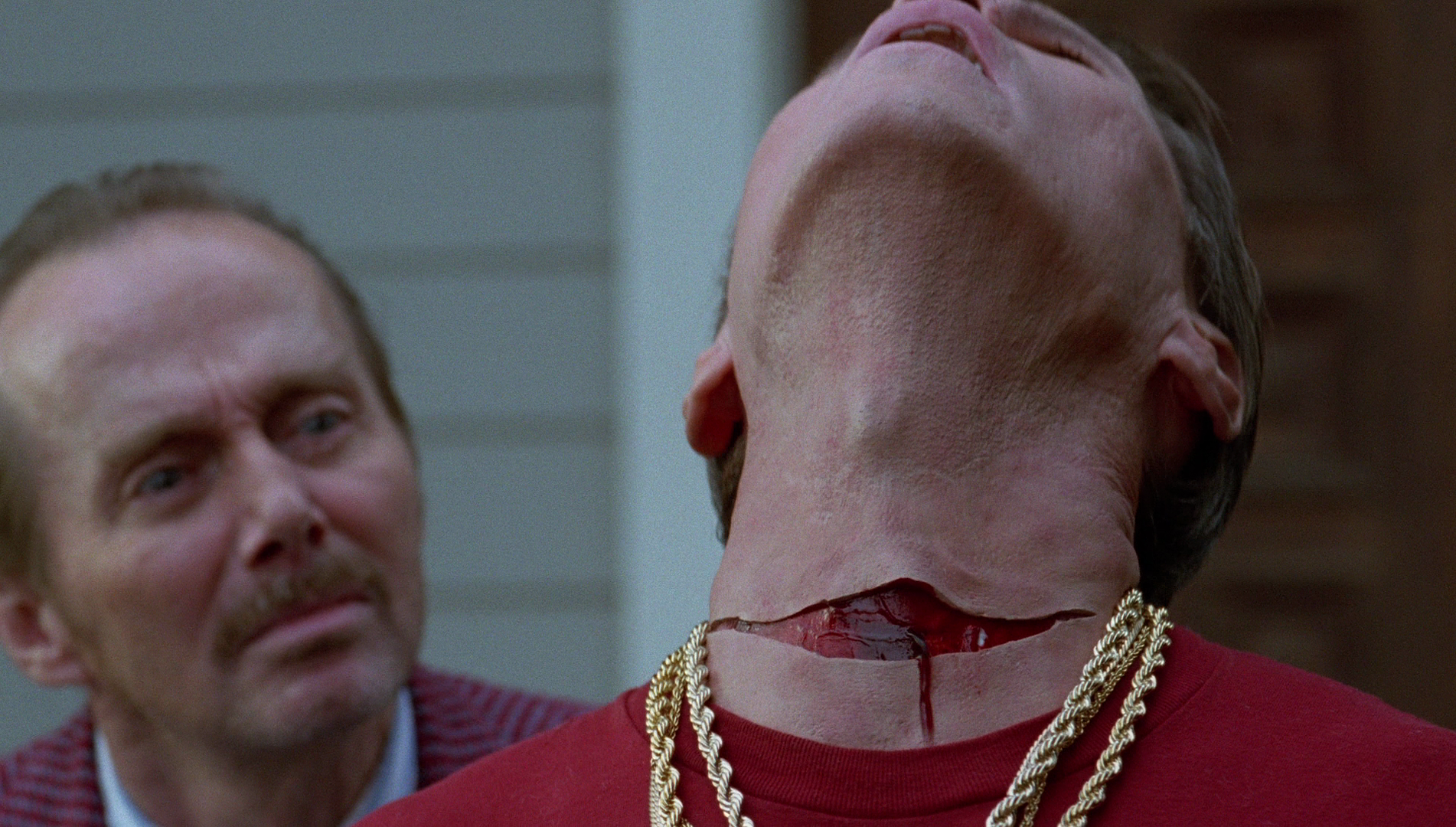

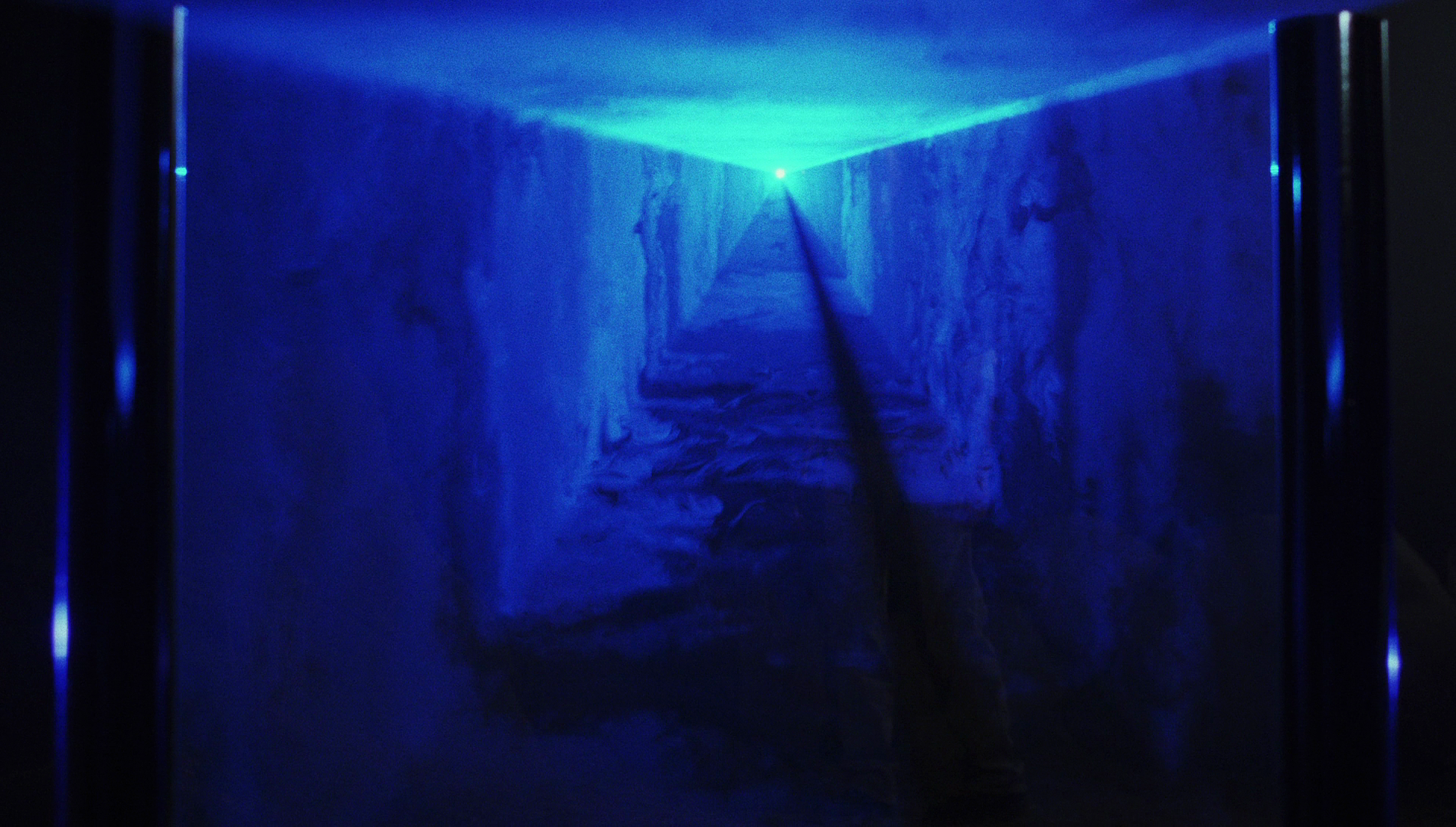


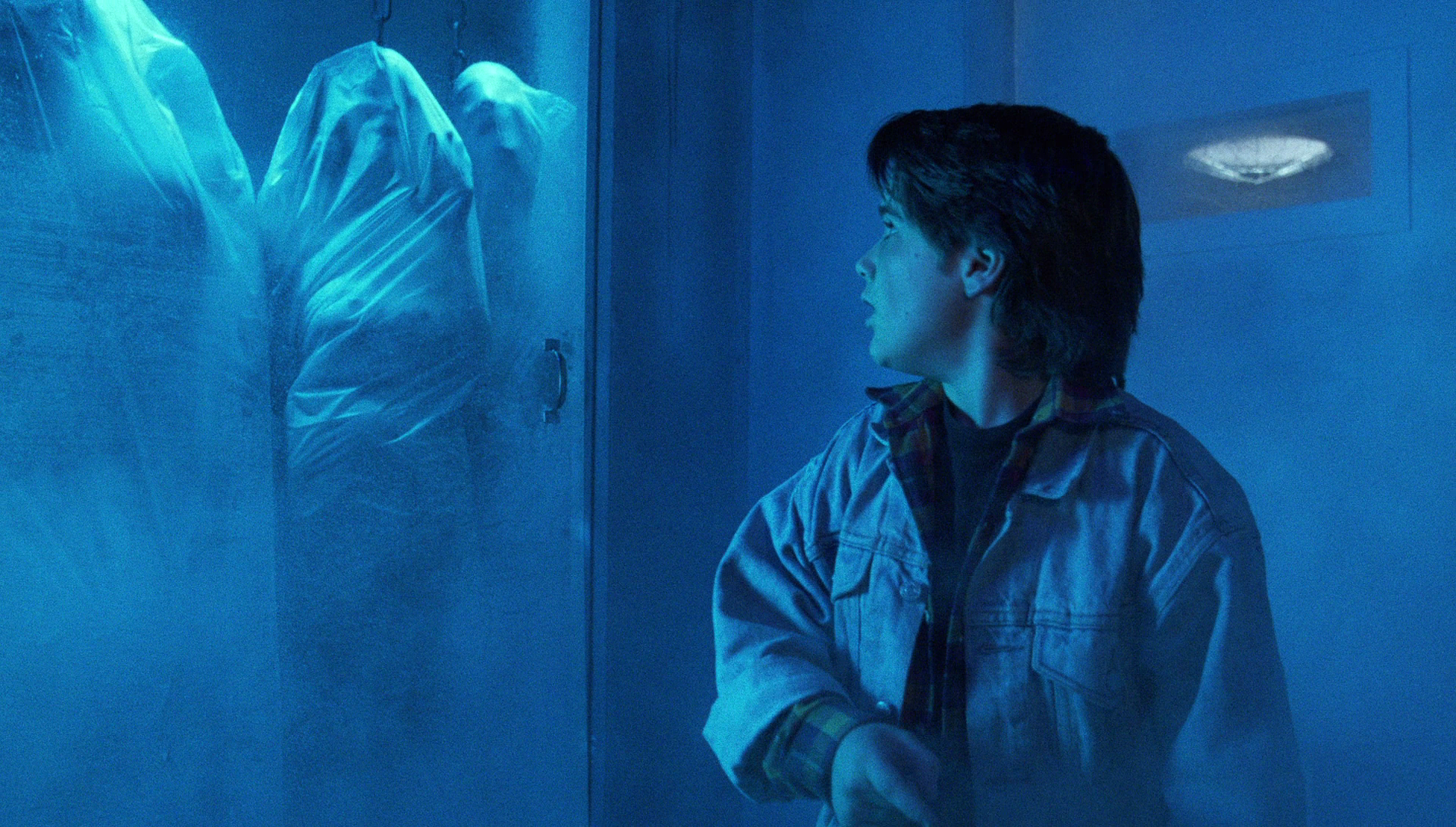
Phantasm IV: Oblivion 
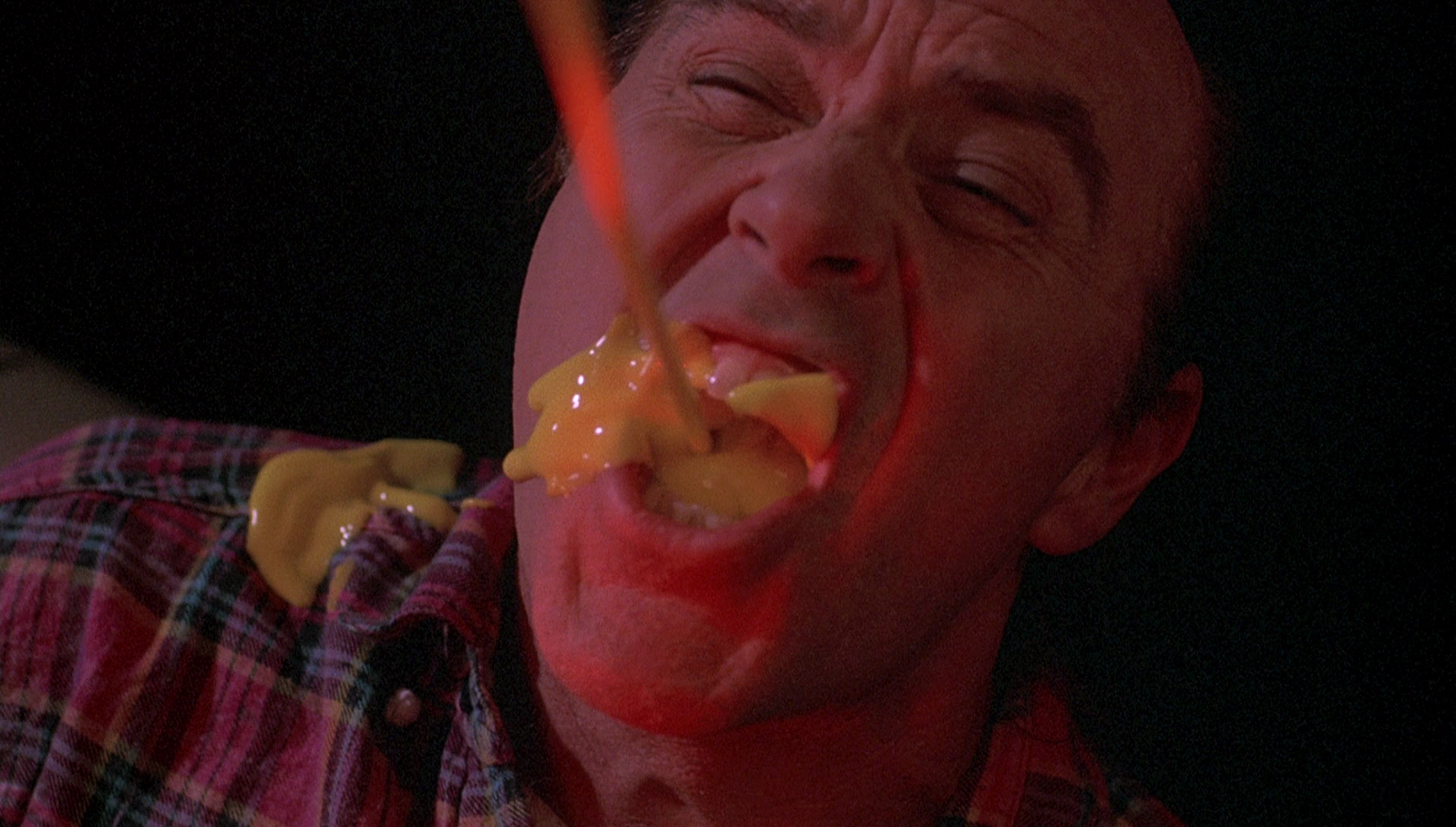
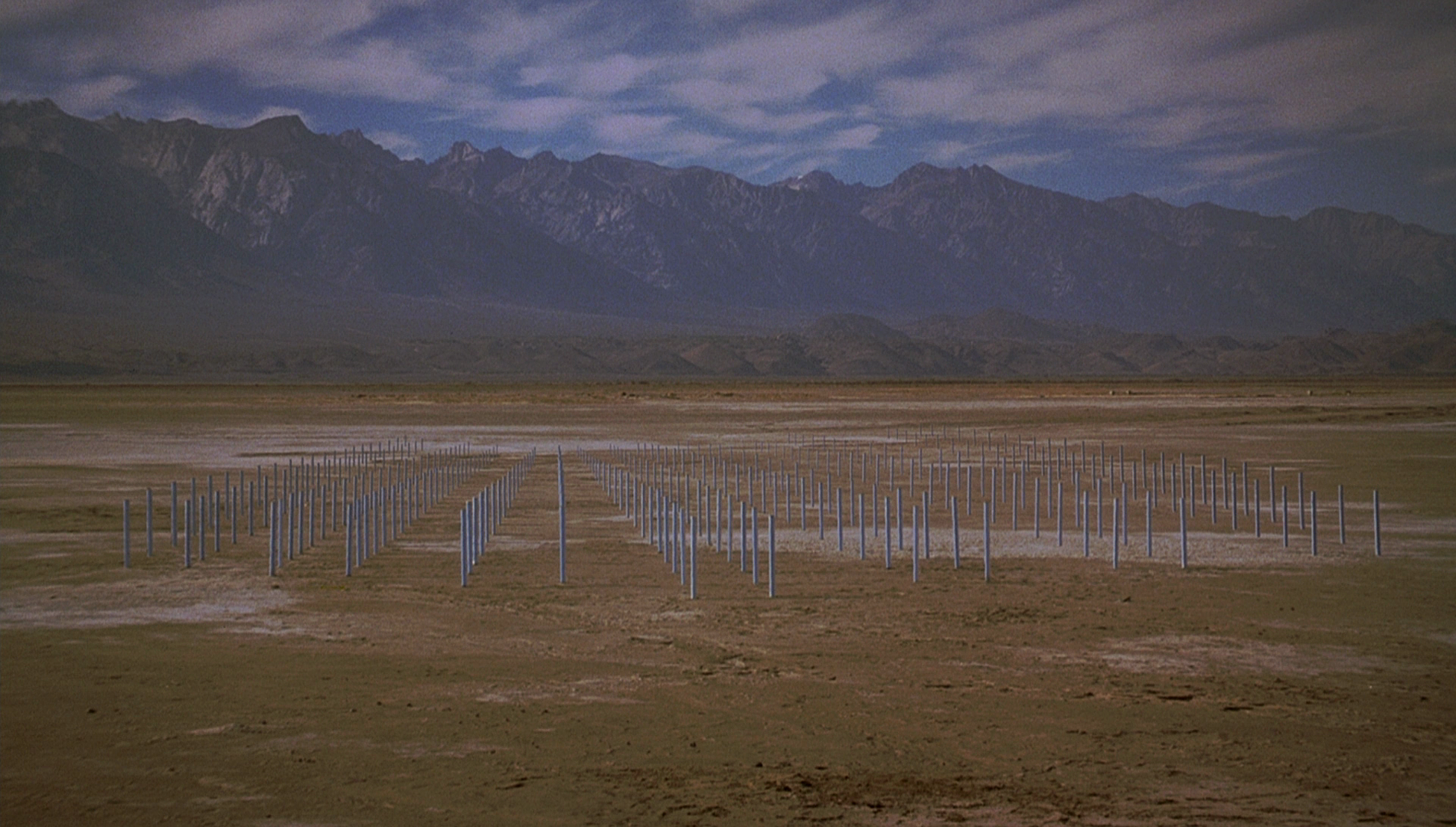
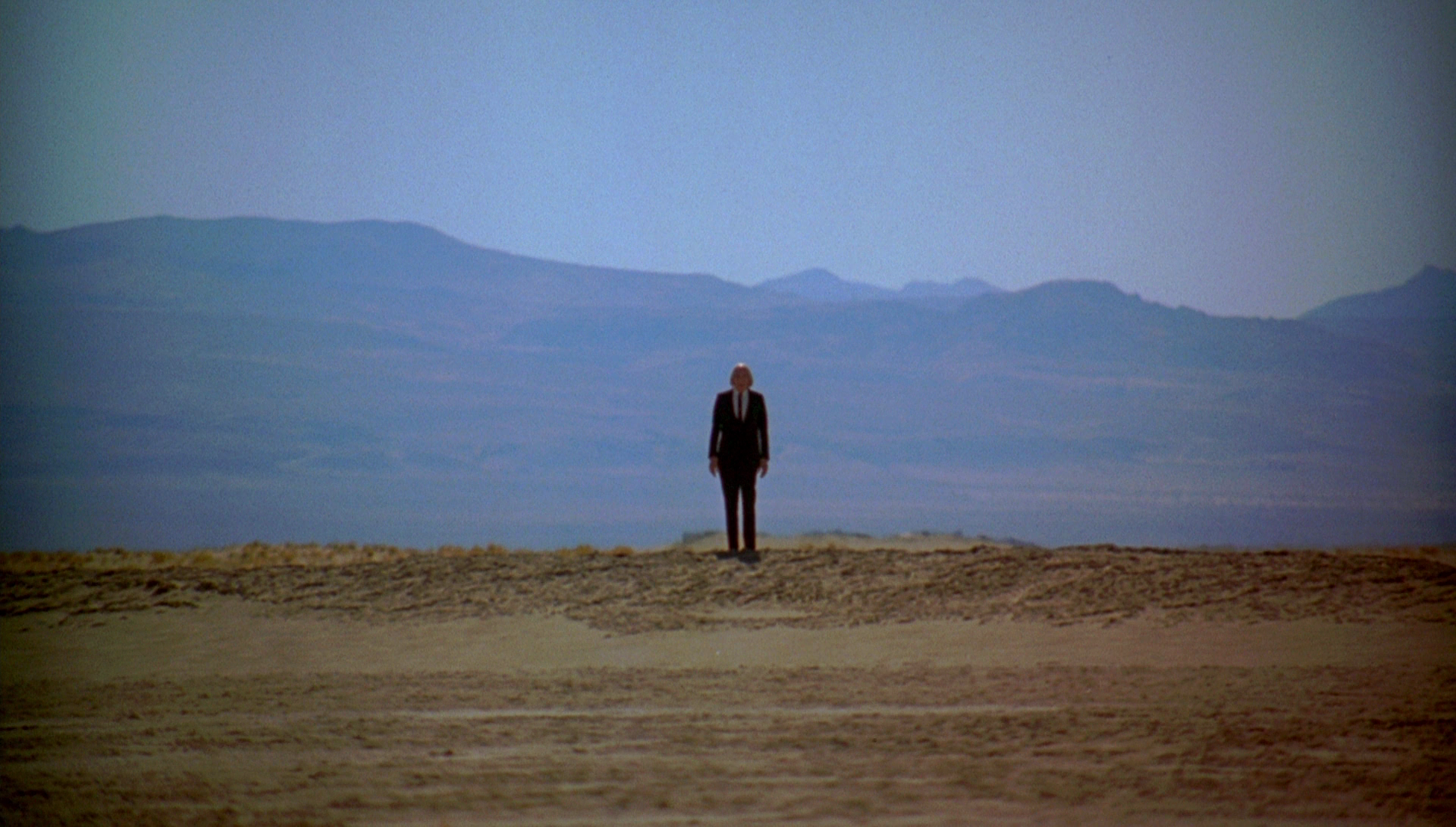


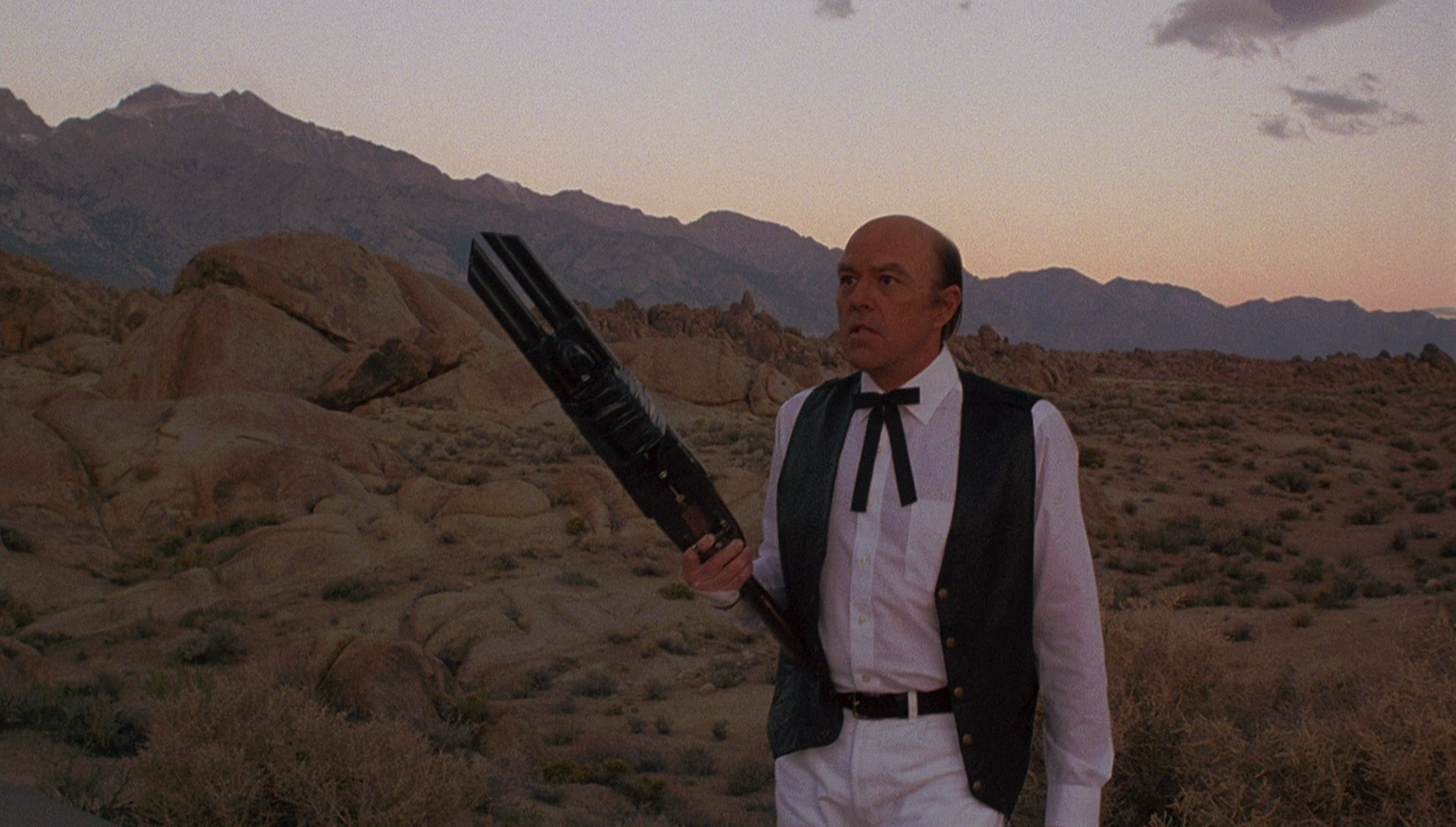
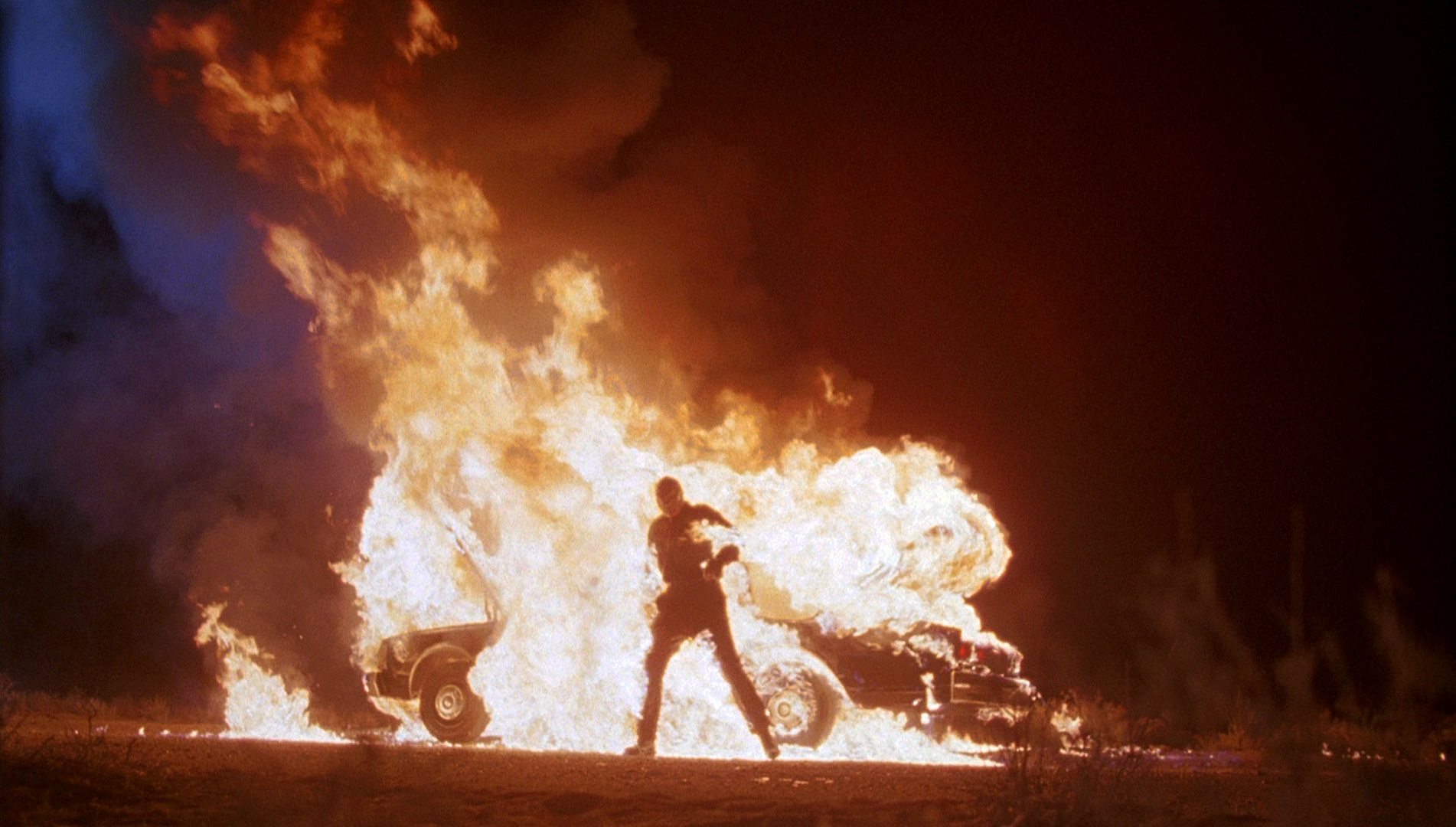
Phantasm V: Ravager 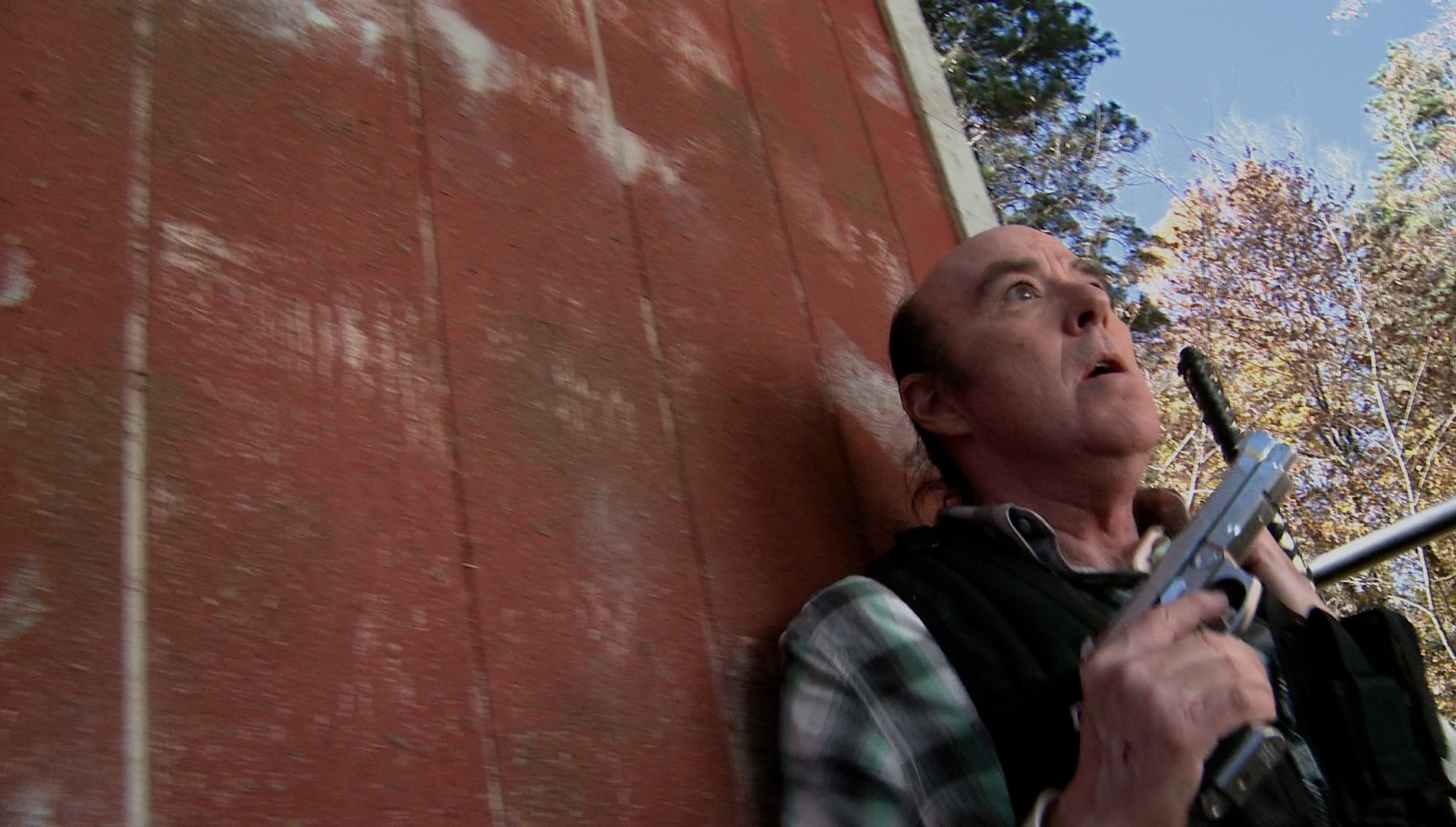
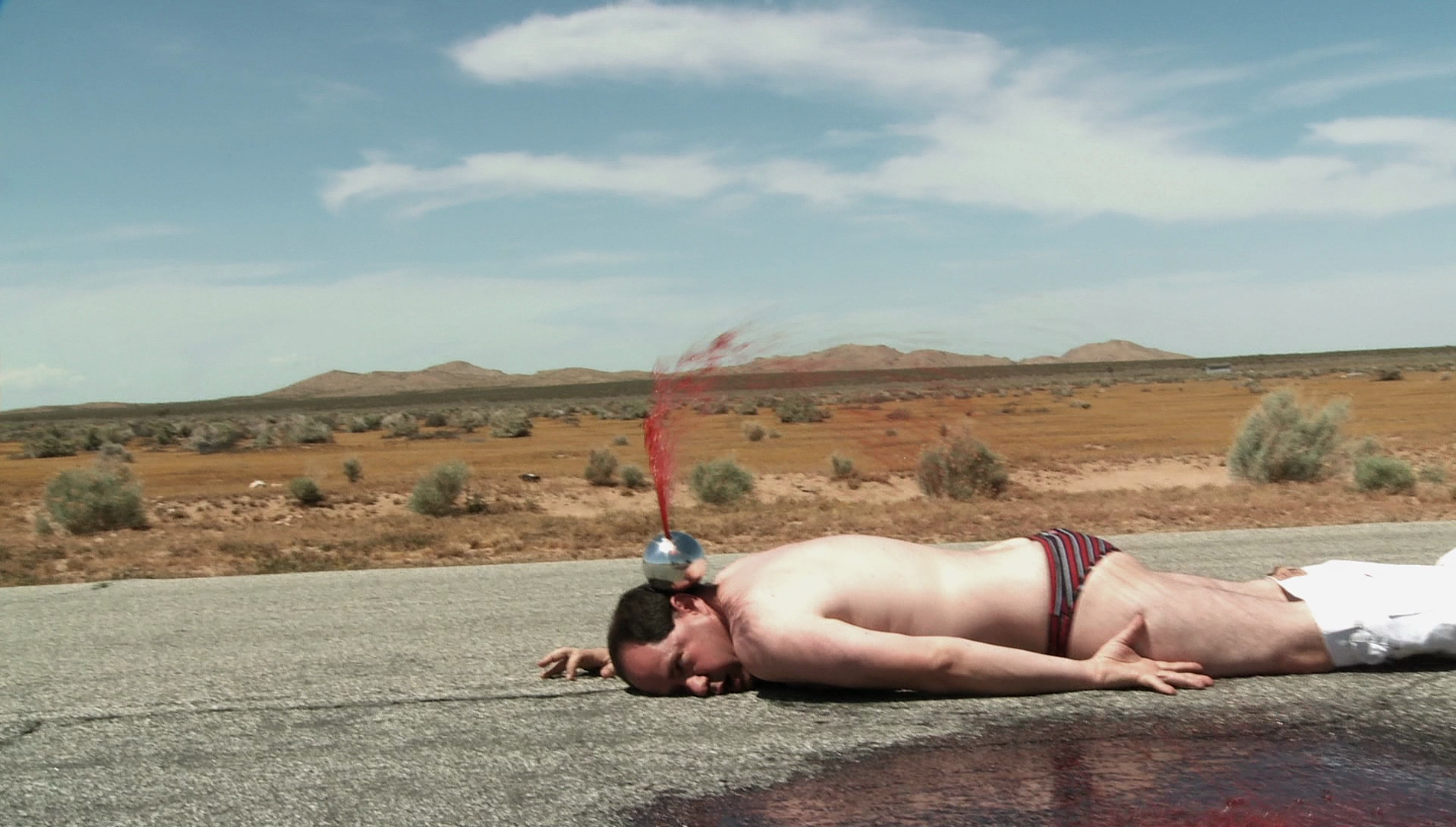

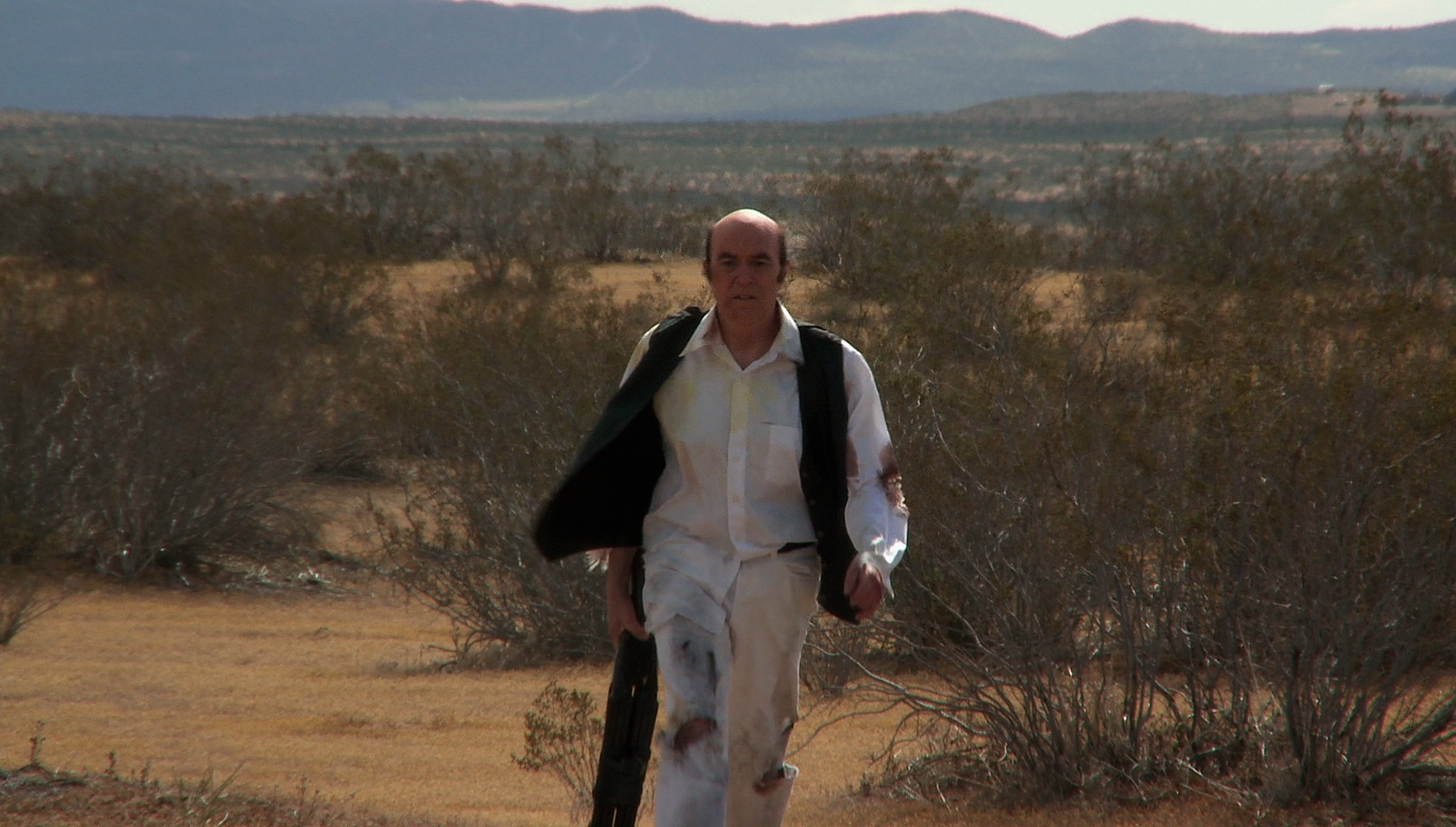


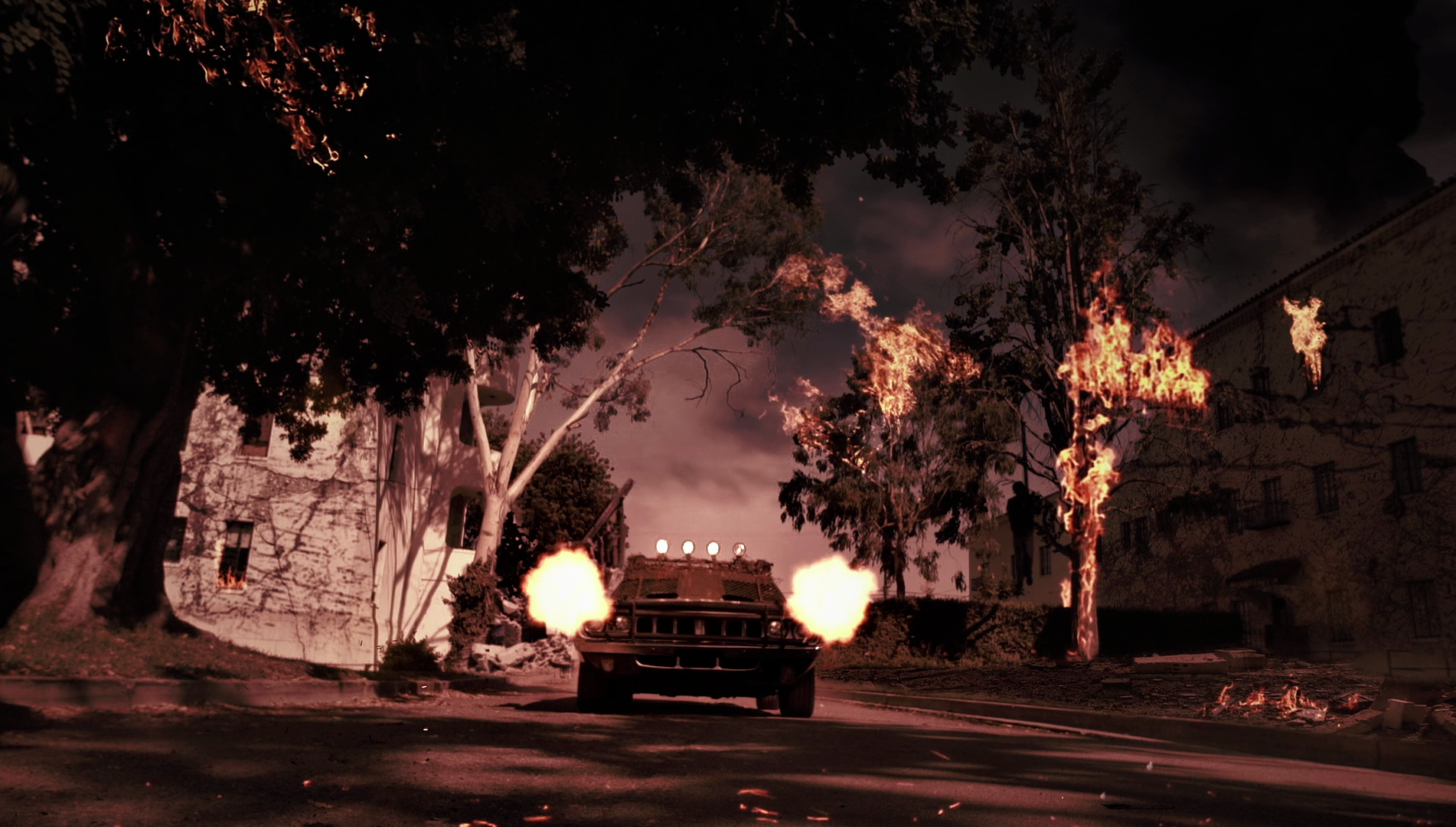
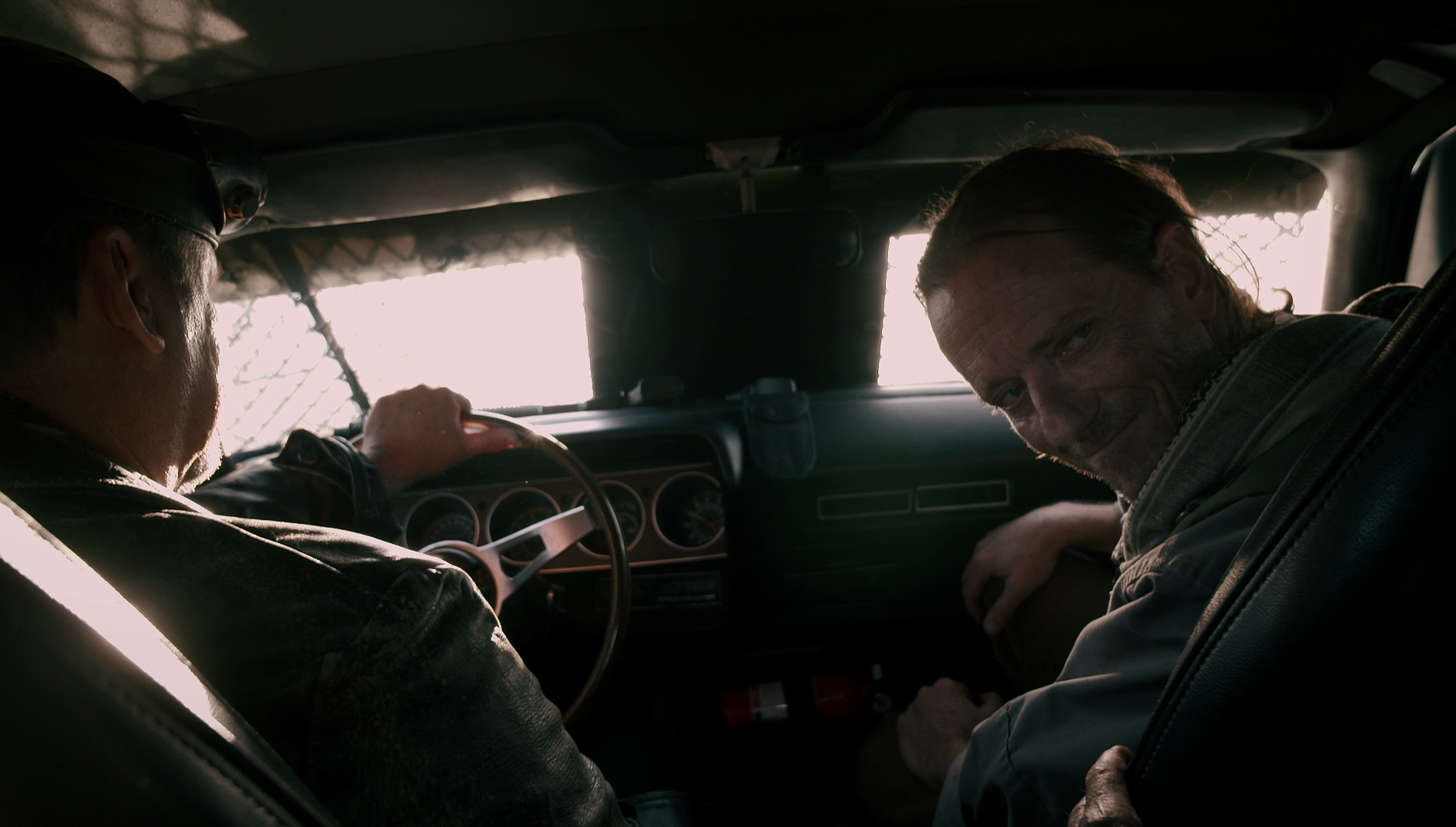
|
|||||

|